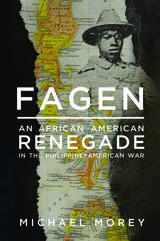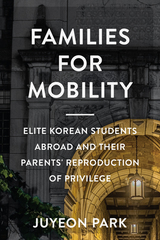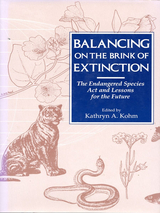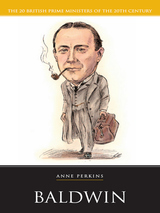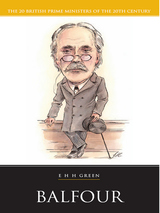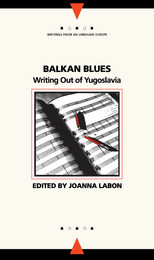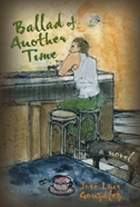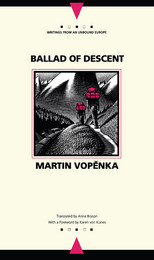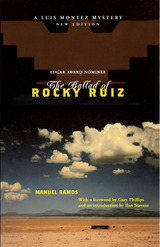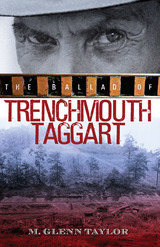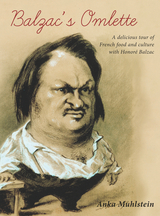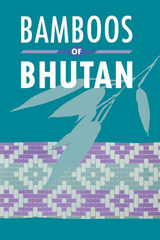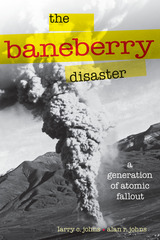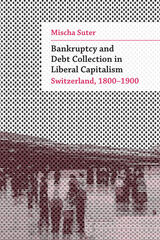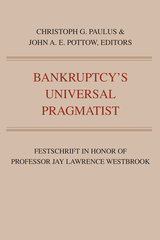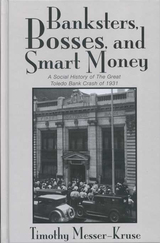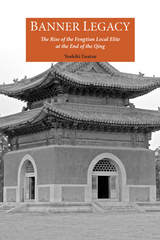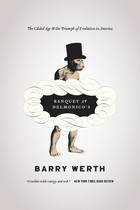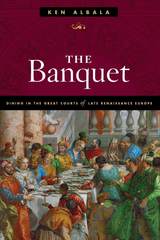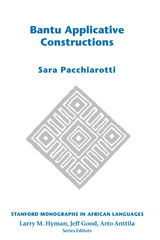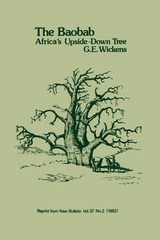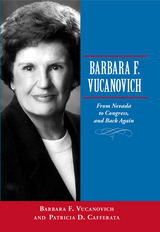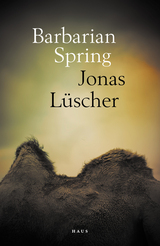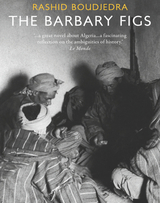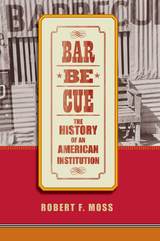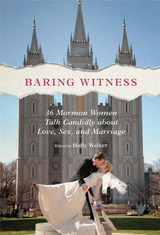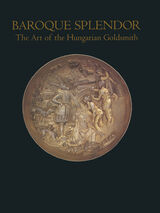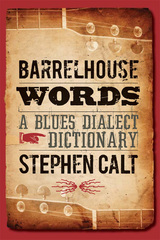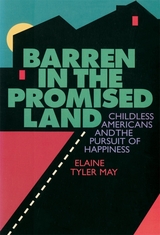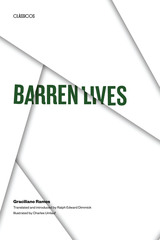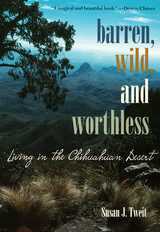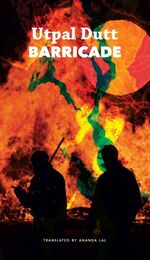 Baking Emily Dickinson’s Black Cake
Emilie Hardman and Heather Cole, illustrated by Robin Harney
Harvard University Press The Emily Dickinson manuscripts are a cherished part of Houghton Library’s collections and—while it is her poems and letters that are most often celebrated—the poet’s lesser known lines: “2 Butter. / 19 eggs. / 5 pounds Raisins” are also cause to celebrate.
Dickinson’s manuscript recipe for black cake, from which these lines come, was sent along with a bouquet of flowers to Nellie Sweetser in the summer of 1883. Black cake is a traditional Christmas specialty closely related to the English fruitcake, “blackened” with the addition of burnt sugar syrup or molasses. It was generously spiced with nutmeg, cinnamon, mace, and clove before being wrapped in brandy- or rum-soaked cloth and often aged at least a month. The recipe, though somewhat shocking to a modern reader (19 eggs!), turns out to be remarkably orthodox in its ratios, if not its scale. Fully assembled, the recipe produces batter weighing in excess of twenty pounds.
Delve into the history of this majestic cake and explore the story of each ingredient, in the context of Emily Dickinson’s nineteenth-century Amherst home, with librarians of Houghton. Each ingredient is accompanied with watercolors by Robin Harney evoking Dickinson’s moment in time and moments in the kitchen.
 Baking Powder Wars: The Cutthroat Food Fight that Revolutionized Cooking
Linda Civitello
University of Illinois Press, 2017 First patented in 1856, baking powder sparked a classic American struggle for business supremacy. For nearly a century, brands battled to win loyal consumers for the new leavening miracle, transforming American commerce and advertising even as they touched off a chemical revolution in the world's kitchens. Linda Civitello chronicles the titanic struggle that reshaped America's diet and rewrote its recipes. Presidents and robber barons, bare-knuckle litigation and bold-faced bribery, competing formulas and ruthless pricing--Civitello shows how hundreds of companies sought market control, focusing on the big four of Rumford, Calumet, Clabber Girl, and the once-popular brand Royal. She also tells the war's untold stories, from Royal's claims that its competitors sold poison, to the Ku Klux Klan's campaign against Clabber Girl and its German Catholic owners. Exhaustively researched and rich with detail, Baking Powder Wars is the forgotten story of how a dawning industry raised Cain--and cakes, cookies, muffins, pancakes, donuts, and biscuits.
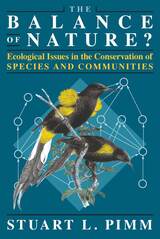 The Balance of Nature?: Ecological Issues in the Conservation of Species and Communities
Stuart L. Pimm
University of Chicago Press, 1991 Ecologists, although they acknowledge the problems involved, generally conduct their research on too few species, in too small an area, over too short a period of time. In The Balance of Nature?, a work sure to stir controversy, the distinguished theoretical ecologist Stuart L. Pimm argues that ecology therefore fails in many ways to address the enormous ecological problems now facing our planet.
Ecologists describing phenomena on larger scales often use terms like "stability," "balance of nature," and "fragility," and Pimm begins by considering the various specific meanings of these terms. He addresses five kinds of ecological stability—stability in the strict sense, resilience, variability, persistence, and resistance—and shows how they provide ways of comparing natural populations and communities as well as theories about them. Each type of stability depends on characteristics of the species studied and also on the structure of the food web in which the species is embedded and the physical features of the environment.
The Balance of Nature? provides theoretical ecology with a rich array of questions—questions that also underpin pressing problems in practical conservation biology. Pimm calls for nothing less than new approaches to ecology and a new alliance between theoretical and empirical studies.
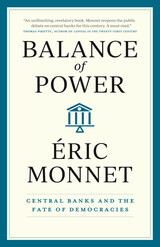 Balance of Power: Central Banks and the Fate of Democracies
Éric Monnet
University of Chicago Press, 2024 Central banks now stand between societies and collapse, but are they still democratic?
Two decades of financial crises have dramatically expanded central banks’ powers. In 2008, and then again in 2020, unelected banking officials found themselves suddenly responsible for the public welfare—not just because it was necessary but based on an idea that their independence from political systems would insulate them from the whims of populism. Now, as international crises continue and the scope of monetary interventions grows in response, these bankers have become increasingly powerful.
In Balance of Power, economist and historian Éric Monnet charts the rise of central banks as the nominally independent—but unavoidably political—superpowers of modern societies. This trajectory, Monnet argues, is neither inevitable nor unstoppable. By embracing the political natures of today’s central banks, we can construct systems of accountability for how they interact with states and societies. Monnet shows that this effort will do more than guard against unjust power; it will put the banks to work for greater, more democratic ends.
With existential challenges looming and the work of the Federal Reserve and European Central Bank more important than ever, Balance of Power offers a trenchant case for what this century’s central banks can—and must—become.
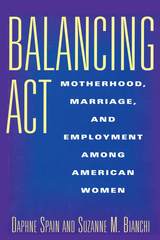 Balancing Act: Motherhood, Marriage, and Employment Among American Women
Daphne Spain
Russell Sage Foundation, 1996 "A wonderful compendium of everything you always wanted to know about trends in women's roles—both in and out of the home. It is a balanced and data-rich assessment of how far women have come and how far they still have to go. "—Isabelle Sawhill, Urban Institute "Based primarily on the 1990 population census, Balancing Act reports on the current situation of American women and temporal and cross-national comparisons. Meticulously and clearly presented, the information in this book highlights changing behaviors, such as the growing incidence of childbearing to older women, and unmarried women in general, and a higher ratio of women's earnings to men's. The authors' thoughtful analysis of these and other factors involved in women's fin de siècle 'balancing act' make this an indispensable reference book and valuable classroom resource." —Louise A. Tilly, Michael E. Gellert Professor of History and Sociology, The New School for Social Research In Balancing Act, authors Daphne Spain and Suzanne Bianchi draw upon multiple census and survey sources to detail the shifting conditions under which women manage their roles as mothers, wives, and breadwinners. They chronicle the progress made in education—where female college enrollment now exceeds that of males—and the workforce, where women have entered a wider variety of occupations and are staying on the job longer, even after becoming wives and mothers. But despite progress, lower-paying service and clerical positions remain predominantly female, and although the salary gap between men and women has shrunk, women are still paid less. As women continue to establish a greater presence outside the home, many have delayed marriage and motherhood. Marked jumps in divorce and out-of-wedlock childbirth have given rise to significant numbers of female-headed households. Married women who work contribute more significantly than ever to the financial well-being of their families, yet evidence shows that they continue to perform most household chores. Balancing Act focuses on how American women juggle the simultaneous demands of caregiving and wage earning, and compares their options to those of women in other countries. The United States is the only industrialized nation without policies to support working mothers and their families—most tellingly in the absence of subsidized childcare services. Many women are forced to work in less rewarding part-time or traditionally female jobs that allow easy exit and re-entry, and as a consequence poverty is the single greatest danger facing American women. As the authors show, the risk of poverty varies significantly by race and ethnicity, with African Americans—most of whose children live in mother-only families—the most adversely affected. This volume contributes to the national dialogue about family policy, welfare reform, and responsibility for children by highlighting the pivotal roles women play at the intersection of family and work.
 Balancing Act: The New Medical Ethics of Medicine's New Economics
E. Haavi Morreim
Georgetown University Press, 1995 Medicine's changing economics have already fundamentally, permanently altered the relationship between physician and patient, E. Haavi Morreim argues. Physicians must weigh a patient's interests against the legitimate, competing claims of other patients, of payers, of society as a whole, and sometimes even of the physician himself. Focusing on actual situations in the clinical setting, Morreim explores the complex moral problems that current economic realities pose for the practicing physician. She redefines the moral obligations of both physicians and patients, traces the specific effects of these redefined obligations on clinical practice, and explores the implications for patients as individuals and for national health policy. Although the book focuses on health care in the United States, physicians everywhere are likely to face many of the same basic issues of clinical ethics, because every system of health care financing and distribution today is constrained by finite resources.
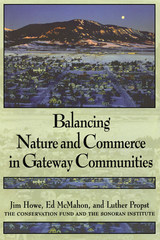 Balancing Nature and Commerce in Gateway Communities
Jim Howe, Ed McMahon, and Luther Propst; Sonoran/Rincon Institutes
Island Press, 1997 Increasing numbers of Americans are fleeing cities and suburbs for the small towns and open spaces that surround national and state parks, wildlife refuges, historic sites, and other public lands. With their scenic beauty and high quality of life, these "gateway communities" have become a magnet for those looking to escape the congestion and fast tempo of contemporary American society. Yet without savvy planning, gateway communities could easily meet the same fate as the suburban communities that were the promised land of an earlier generation. This volume can help prevent that from happening. The authors offer practical and proven lessons on how residents of gateway communities can protect their community's identity while stimulating a healthy economy and safeguarding nearby natural and historic resources. They describe economic development strategies, land-use planning processes, and conservation tools that communities from all over the country have found effective. Each strategy or process is explained with specific examples, and numerous profiles and case studies clearly demonstrate how different communities have coped with the challenges of growth and development. Among the cities profiled are Boulder, Colorado; Townsend and Pittman Center Tennessee; Gettysburg, Pennsylvania; Tyrrell County, North Carolina; Jackson Hole, Wyoming; Sanibel Island, Florida; Calvert County, Maryland; Tuscon, Arizona; and Mount Desert Island, Maine. Balancing Nature and Commerce in Gateway Communities provides important lessons in how to preserve the character and integrity of communities and landscapes without sacrificing local economic well-being. It is an important resource for planners, developers, local officials, and concerned citizens working to retain the high quality of life and natural beauty of these cities and towns.
 Balancing the Economic Controls: A Review of the Economic Studies of the Employment Stabilization Research Institute, University of Minnesota
Russell Stevenson
University of Minnesota Press, 1935
Balancing the Economic Controls was first published in 1935. Minnesota Archive Editions uses digital technology to make long-unavailable books once again accessible, and are published unaltered from the original University of Minnesota Press editions.This very readable little book summarizes the economic aspects of the five-year program of research recently concluded by the Employment Stabilization Research Institute. The recommendations made, which are specific and practical, are based on the findings assembled in the course of scores of intensive studies.The authors discuss the competitive position of Minnesota and the Northwest, the prospects for new industries, what they believe to be the probable future development of the region, where government control of business might be applied beneficially, and what other methods would help remedy present difficulties. The program they outline might be undertaken, they believe, without serious disruption of American economic institutions and with good prospect of bringing about a larger measure of economic stability than has been achieved thus far.
 Baldo
Teofilo FolengoTranslated by Ann E. Mullaney
Harvard University Press, 2007 Teofilo Folengo (1491–1544) was born in Mantua and joined the Benedictine order, but became a runaway monk and a satirist of monasticism. In 1517 he published, under the pseudonym Merlin Cocaio, the first version of his macaronic narrative poem Baldo, later enlarged and elaborated. It blended Latin with various Italian dialects in hexameter verse, inventing a deliberately droll language whose humor depends on the mixture of high and low tonalities. An important example of the mock-heroic epic, the work was a model for Rabelais and was frequently reprinted.
Baldo, the hero of these picaresque adventures, is a descendant of French royalty who starts out as something of a juvenile delinquent. The poem narrates episodes that include imprisonment; battles with local authorities, pirates, shepherds, witches, and demons; and a journey to the underworld. Throughout Baldo is accompanied by various companions, among them a giant, a centaur, a magician, and his best friend Cingar, a wickedly inventive trickster (“practicus ad beffas”). This edition provides the first English translation of this hilarious send-up of ancient epic and Renaissance chivalric romance.
 Baldo
Teofilo FolengoTranslated by Ann E. Mullaney
Harvard University Press, 2007 Teofilo Folengo (1491-1544) was born in Mantua and joined the Benedictine order, but became a runaway monk and a satirist of monasticism. In 1517 he published, under the pseudonym Merlin Cocaio, the first version of his macaronic narrative poem Baldo, later enlarged and elaborated. It blended Latin with various Italian dialects in hexameter verse, inventing a deliberately droll language whose humor depends on the mixture of high and low tonalities. An important example of the mock-heroic epic, the work was a model for Rabelais and was frequently reprinted.
Baldo, the hero of these picaresque adventures, is a descendant of French royalty who starts out as something of a juvenile delinquent. The poem narrates episodes which include imprisonment; battles with local authorities, pirates, shepherds, witches, and demons; and a journey to the underworld. Throughout Baldo is accompanied by various companions, among them a giant, a centaur, a magician, and his best friend Cingar, a wickedly inventive trickster ("practicus ad beffas"). This edition provides the first English translation of this hilarious send-up of ancient epic and Renaissance chivalric romance.
Baldwin
Anne Perkins
Haus Publishing, 2006 Prime Ministers Series, Baldwin was at the helm during the General Strike and the Abdication.
Balfour
Ewen Green
Haus Publishing, 2006 Prime Minister known for announcing "that Britain favoured a homeland for the Jewish People in Palestine."
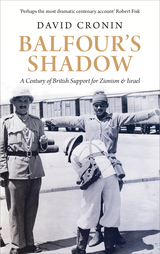 Balfour's Shadow: A Century of British Support for Zionism and Israel
David Cronin
Pluto Press, 2017 “His Majesty’s government view with favour the establishment in Palestine of a national home for the Jewish people, and will use their best endeavours to facilitate the achievement of this object.”
This is the infamous Balfour Declaration, which began one hundred years of conflict with the Palestinian people. Penned in 1917 by British Foreign Secretary Arthur James Balfour, these words had an immense impact on history that still emanates a century later. In the controversial, fast-paced Balfour’s Shadow, David Cronin traces the story of the rhetorical and practical assistance that Britain has given to the Zionist movement and the state of Israel since that day. Skillfully and engagingly written, Balfour’s Shadow uses previously unreleased sources and archives to reveal a new side to an old story. Cronin focuses on important historical events such as the Arab Revolt, the Nakba and establishment of the state, the ‘56 and ‘67 wars, the Cold War, and controversial public figures like Tony Blair. Marking the 100th anniversary of the Balfour Declaration, Cronin provides a fascinating take on this oft-maligned, important history.
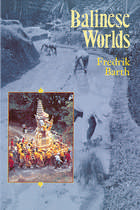 Balinese Worlds
Fredrik Barth
University of Chicago Press, 1993 In Balinese Worlds, Fredrik Barth proposes a new model for anthropological analysis of complex civilizations that is based on a fresh, synthetic account of culture and society in North Bali and one that takes full notice of individual creativity in shaping the contours of this dynamic culture.
In this detailed ethnography of the Northern district of Buleleng, Barth rejects mainstream anthropological generalizations of Bali as a cultural system of carefully articulated parts. Instead—drawing on many sources, including the sociology of knowledge, interactional analysis, postmodern thought, and his own exceptionally varied field experience—Barth presents a new model that actually generates variation. Barth's innovative analysis of Balinese life highlights both the constructive and the disorganizing effects of individual action, the constant flux of interpretation, and the powerful interaction of memory and social relationships, and knowledge as a cultural resource.
Balinese Worlds is a unique contribution not only to Balinese studies but also to the theory and methods of the anthropology of complex societies.
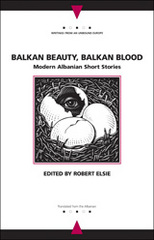 Balkan Beauty, Balkan Blood: Modern Albanian Short Stories
Robert Elsie
Northwestern University Press, 2006 Although Albanian literature dates back to the 1500s, creative prose in that nation is very much a twentieth-century phenomenon; and much as the early literature in Albanian was interrupted by Ottoman rule—and oppression—its later emergence was stymied and stunted by Stalinist politics and propaganda. What this volume documents is, then, a literature at once venerable and nascent, a tradition in the making, however deep its roots. In these stories representing the last three decades of Albanian writing—especially the burst of creativity in the newfound freedom of the 1990s—readers will encounter work that reflects the literary paradox of Eastern Europe in the late twentieth century: the startling originality of the new uneasily coupled with the strains of history; the sophistication and self-consciousness of late (or post-) modernity married to the simplicity of a literature first finding its voice; a refusal of political influence and pressure expressed through frankly political subject matter.
Albania's more established writers (including Dritëro Agolli, Ismail Kadare, Teodor Laço, and Eqrem Basha) appear here alongside newer talents (such as Ylljet Aliçka, Mimoza Ahmeti, Elivra Dones, Lindita Arapi, and Kim Mehmeti), providing English-speaking readers with an elucidating and entertaining overview of the recent history, and the future, of the nation's literature.
Balkan Blues: Writing Out of Yugoslavia
Joanna Labon
Northwestern University Press, 1995 This collection first appeared as a special issue of Storm, the British literary journal of new eastern European writing. Joanna Labon has selected excellent, timely essays, stories, drama, and prose by exiled or silenced members of the Yugoslav intelligentsia.
Contributors: Dubravka Ugrešić, Bogdan Bogdanović, Dragan Velikić, Danilo Kiš, Drago Jančar, Mirko Kovač, Goran Stefanovski, Dževad Karahasan, and Slobodan Blagojević.
 Balkan Family Structure and the European Pattern: Demographic Developments in Ottoman Bulgaria
Maria Todorova
Central European University Press, 2006 This study, which is an updated, extended, and revised version of the out-of-print 1993 edition, reassesses the traditional stereotype of the place of the Balkans in the model of the European family in the nineteenth century on the basis of new source material and by synthesizing existing research. The work first analyzes family structure and demographic variables as they appear in population registers and other sources, and the impact of these findings on theoretical syntheses of the European family pattern. On most features, such as population structure, marriage and nuptiality, birth and fertility, death and mortality rates, family and household size and structure, as well as inheritance patterns, the Balkans show an enormous deal of internal variety. This variability is put in a comparative European context by matching the quantifiable results with comparable figures and patterns in other parts of Europe. The second section of the book is a contribution to the long-standing debate over the zadruga, the complex, collective, joint or extended family in the Balkans. Finally, the book considers ideology and mythology and the ways it has adversely affected scholarship on the family, and broadly on population history.
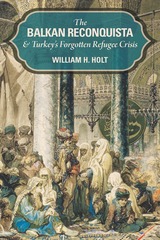 The Balkan Reconquista and Turkey's Forgotten Refugee Crisis
William H. Holt
University of Utah Press, 2019 During the Russo-Ottoman War of 1877–1878, Russian troops, Cossack auxiliaries, and local Bulgarians participated in what today would be called ethnic cleansing. Tensions in the Balkans between Christians and Muslims ended in disaster when hundreds of thousands of Muslims were massacred, raped, and forced to flee from Bulgaria to Turkey as their villages were sacked and their homes destroyed.
In this book, William H. Holt tells the story of a people and moment in time that has largely been neglected in modern Turkish and Balkan memory. Holt uncovers the reasons for this mass forgetting, finding context both within the development of the modern Turkish state and the workings of collective memory. Bringing together a wide array of eyewitness accounts, the book provides unprecedented detail on the plight of the Muslim refugees in their flight from Bulgaria, in Istanbul, and in their resettlement in Anatolia. In crisp, clear, and engaging prose, Holt offers an insightful analysis of human suffering and social memory.
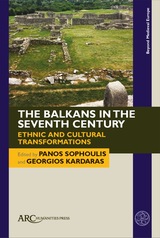 The Balkans in the Seventh Century: Ethnic and Cultural Transformations
Panos Sophoulis
Arc Humanities Press The seventh century was a period of radical transformation in the Balkans in terms of political, social, and economic history. The decline in Byzantine power led to the collapse of ancient urban civilization, the arrival of new populations from eastern Europe and the steppes, and, subsequently, the establishment of new political structures and modes of economic relations. Given that the written sources provide relatively little information about these events, archaeology is required to fill in the gaps and improve our knowledge and understanding of the socio-cultural and ethnic transitions that took place. New developments in archaeology in the Balkans have brought an enormous amount of information to light. The book’s eight contributors present research from different parts of the region, offering valuable new insights into the history, culture, and economy of the early medieval Balkans.
 Ball, Bat and Bishop: THE ORIGIN OF BALL GAMES
Robert W. Henderson
University of Illinois Press, 1947 Step aside, Abner Doubleday! In this impeccably researched history, Robert W. Henderson uncovers the true origins not only of baseball but of a score of related sports involving hitting, catching, throwing, or kicking a ball.
Henderson traces the origins of ball sports to religious rites in ancient Egypt, where the ball (perhaps a shrunken head) represented a fertility symbol and opposing teams engaged in mock combat signifying the struggle of good against evil. Centuries later, pagan fertility rites featuring the ball were adapted by the Christian church as rituals symbolic of Easter and the Resurrection. Court tennis was also firmly rooted in the church, the earliest players being the bishops, canons, and clerics who played it in their cloistered courtyards.
Henderson overturns the popular belief that the game of racquets originated in the debtors' prison on Fleet Street in the early nineteenth century. He also notes that polo, the most ancient of games played with stick and ball, originated in Persia and migrated to China and India, where it was eventually embraced by English imperialists. Other sports discussed include football, lawn tennis, cricket, and golf.
The most substantial portion of Henderson's study is devoted to the game of baseball. Providing copious evidence of early forms of baseball played in England and the United States before 1829, he offers a meticulous account of the legerdemain by which Abner Doubleday, the famous Civil War general, came to be identified as the inventor in 1839 of a game that was already at least two centuries old.
The new foreword by Leonard Koppett affirms the significance of this classic work of sports history, which was the first to dismantle the Doubleday/Cooperstown myth.
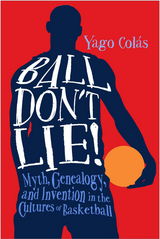 Ball Don't Lie: Myth, Genealogy, and Invention in the Cultures of Basketball
Yago Colás
Temple University Press, 2016 Pro basketball player Rasheed Wallace often exclaimed the pragmatic truth “Ball don’t lie!” during a game. It is a protest against a referee’s bad calls. But the slogan, which originated in pickup games, brings the reality of a racialized urban playground into mainstream American popular culture. In Ball Don’t Lie!, Yago Colás traces the various forms of power at work in the intersections between basketball and language from the game’s invention to the present day. He critiques existing popular myths concerning the history of basketball, contextualizes them, and presents an alternative history of the sport inspired by innovations. Colás emphasizes the creative prerogative of players and the ways in which their innovations shape—and are shaped by—broader cultural and social phenomena. Ball Don't Lie! shows that basketball cannot be reduced to a single, fixed or timeless essence but instead is a continually evolving exhibition of physical culture that flexibly adapts to and sparks changes in American society.
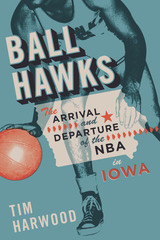 Ball Hawks: The Arrival and Departure of the NBA in Iowa
Tim Harwood
University of Iowa Press, 2018 Believe it or not, Waterloo, Iowa, had an NBA team during the league’s first season, 1949 to 1950. Broadcaster and independent sports historian Tim Harwood uncovers the fascinating story of the Waterloo Hawks and the Midwest’s influence on professional basketball. Beginning with the professional leagues that led up to the creation of the National Basketball Association, Harwood recounts big games and dramatic buzzer-beaters, and the players who made them. The first season of the NBA was far from a success. Teams had a hard time attracting fans, with games often played in half-empty arenas. When Waterloo residents learned that the team was struggling financially, they rallied behind the Hawks and purchased shares of the team in a bid to keep it afloat. Unfortunately, that community-based effort was not enough; owners of teams in larger markets pressured the league to push Waterloo—and other smaller towns like Anderson, Indiana, and Sheboygan, Wisconsin—out of the league. Though the Hawks disappeared after their lone NBA campaign, Waterloo and other midwestern teams were nonetheless integral to getting the NBA off the ground, and their legacy continues today through some of the current franchises that relocated to larger markets. Combining newspaper accounts and personal interviews with surviving players, Harwood weaves a fascinating story of the underdog team, in the unlikeliest of places, that helped make professional basketball the worldwide success it is today.
 Ball in My Hands: Essays on Black Athletes, Race, and American Culture
David K. Wiggins
University of Tennessee Press, 2024 When David K. Wiggins released his first anthology of previously published essays on race and sport in 1997, African American athletes were receiving more popular interest and scholarly attention. The growth of sport history as an academic discipline, combined with an increased interest in Black life and history, had led to the publication of numerous biographies of African American athletes, studies on Negro League Baseball, and one survey text on the Black athletic experience, to name a few.
Almost thirty years later, Wiggins’s second anthology is a comprehensive collection that examines the complex intersection of race, sport, and American culture, discussing the experiences, challenges, and victories of Black athletes throughout the twentieth century. Featuring eleven previously published essays, Ball in My Hands: Black Athletes, Race, and American Culture weaves storytelling and scholarly discussion together in its exploration of well-known figures like Olympic decathlon champion Milt Campbell, professional tennis icon Arthur Ashe, Olympic sprinter Vince Matthews, civil rights activist Harry Edwards, basketball legend Kobe Bryant, and more. In his final essay, Wiggins reflects on his experiences as a White scholar who has spent his forty-year academic career analyzing and writing about experiences of African Americans in sport and the interconnection among race, sport, and American culture.
With an original introduction and a foreword from Damion L. Thomas, Museum Curator of Sports at the Smithsonian’s National Museum of African American History and Culture, Ball in My Hands is not simply a collection of biographies on individual athletes or write-ups on athletic institutions—rather, it offers a wide-ranging discussion of the history and meaning of African American sport that will engage not only scholars of African American history and sport history, but educators, sports enthusiasts, and general readers alike.
 The Ballad and Oral Literature
Joseph Harris
Harvard University Press, 1991 Francis James Child, compiler and editor of the monumental English and Scottish Popular Ballads, established the scholarly study of folk ballads in the English-speaking world. His successors at Harvard University, notably George Lyman Kittredge, Milman Parry, and Albert B. Lord, discovered new ways of relating ideas about sung narrative to the study of epic poetry and what has come to be called—though not without controversy—“oral literature.”
In this volume, sixteen distinguished scholars from Europe and the United States offer original essays in the spirit of these pioneers. The topics of their studies include well-known “Child Ballads” in their British and American forms; aspects of the oral literatures of France, Ireland, Scandinavia, medieval England, ancient Greece, and modern Egypt; and recent literary ballads and popular songs. Many of the essays evince a concern with the theoretical underpinnings of the study of folklore and literature, orality and literacy; and as a whole the volume reestablishes the European ballad in the wider context of oral literature. Among the contributors are Albert B. Lord, Bengt R. Jonsson, Gregory Nagy, David Buchan, Vesteinn Olason, and Karl Reichl.
Ballad Books and Ballad Men: Raids and Rescues in Britain, America, and the Scandinavian North since 1800
Sigurd Bernhard Hustvedt
Harvard University Press Collectors and editors of popular ballads have added a new province to literature, which critics and men of letters have further explored and cultivated. In this book the scholar and the general reader will find a comprehensive survey of the work of ballad men, from Sir Walter Scott to Francis James Child and his successors in Britain and America. Two chapters are devoted to the contemporaneous story of Scandinavian balladry, particularly in its relation to the labors of Child. Appendixes present a large store of illuminating documents, hitherto unpublished, from the correspondence of Child and the Danish editor Grundtvig.
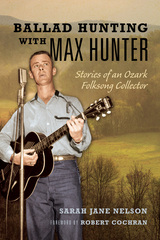 Ballad Hunting with Max Hunter: Stories of an Ozark Folksong Collector
Sarah Jane Nelson; Foreword by Robert Cochran
University of Illinois Press, 2023 A traveling salesman with little formal education, Max Hunter gravitated to song catching and ballad hunting while on business trips in the Ozarks. Hunter recorded nearly 1600 traditional songs by more than 200 singers from the mid-1950s through the mid-1970s, all the while focused on preserving the music in its unaltered form. Sarah Jane Nelson chronicles Hunter’s song collecting adventures alongside portraits of the singers and mentors he met along the way. The guitar-strumming Hunter picked up the recording habit to expand his repertoire but almost immediately embraced the role of song preservationist. Being a local allowed Hunter to merge his native Ozark earthiness with sharp observational skills to connect--often more than once--with his singers. Hunter’s own ability to be present added to that sense of connection. Despite his painstaking approach, ballad collecting was also a source of pleasure for Hunter. Ultimately, his dedication to capturing Ozarks song culture in its natural state brought Hunter into contact with people like Vance Randolph, Mary Parler, and non-academic folklorists who shared his values.
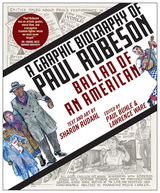 Ballad of an American: A Graphic Biography of Paul Robeson
Sharon Rudahl
Rutgers University Press, 2021 The first-ever graphic biography of Paul Robeson, Ballad of an American, charts Robeson’s career as a singer, actor, scholar, athlete, and activist who achieved global fame. Through his films, concerts, and records, he became a potent symbol representing the promise of a multicultural, multiracial American democracy at a time when, despite his stardom, he was denied personal access to his many audiences.
Robeson was a major figure in the rise of anti-colonialism in Africa and elsewhere, and a tireless campaigner for internationalism, peace, and human rights. Later in life, he embraced the civil rights and antiwar movements with the hope that new generations would attain his ideals of a peaceful and abundant world. Ballad of an American features beautifully drawn chapters by artist Sharon Rudahl, a compelling narrative about his life, and an afterword on the lasting impact of Robeson’s work in both the arts and politics. This graphic biography will enable all kinds of readers—especially newer generations who may be unfamiliar with him—to understand his life’s story and everlasting global significance. Ballad of an American: A Graphic Biography of Paul Robeson is published in conjunction with Rutgers University’s centennial commemoration of Robeson’s 1919 graduation from the university.
Study guide for Ballad of an American: A Graphic Biography of Paul Robeson (https://d3tto5i5w9ogdd.cloudfront.net/wp-content/uploads/2021/05/10201015/YA_Adult-Study-Guide-for-A-Graphic-Biography-of-Paul-Robeson.pdf).
View the blad for Ballad of an American.
Ballad of Another Time: A Novel
Jose Luis Gonzalez; Translated by Asa Zatz
University of Wisconsin Press, 2004 “A haunting, almost uncanny tale of love and honor in which the three main characters move through a world of secret passions and silences. . . . [Set in Puerto Rico], scenes of impoverished farmers, madwomen, and men in coffee shops and cafes combine to form a blend of voices and landscapes whose essence can be distilled into three words: tobacco, coffee, and sugar. . . . Asa Zatz must be praised for bringing into his English version the beauty and melody of [González’s] Spanish original.”—Marjorie Agosin, New York Times Book Review
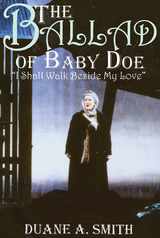 Ballad of Baby Doe: "I Shall Walk Beside My Love"
Duane A. Smith
University Press of Colorado, 2002 First produced at the Central City Opera House in 1956, "The Ballad of Baby Doe" is now widely considered a classic and is the second most produced American opera. In The Ballad of Baby Doe, Duane A. Smith tells the tale of the complicated birth of this most American of operas.
Inspired in 1953 by composer Douglas Moore's interest in Horace Tabor's story and funded by the Central City Opera House Association, the opera came together through a unique combination of hard work and serendipity. Smith relates how key people - including investors and historians in addition to creative talent - turned Moore's idea into a reality and brought the story of the Tabors to millions of opera fans worldwide. In addition, Smith compares the opera's libretto with historical reality, and the book even includes a chapter on the production written by John Moriarty, who conducted the opera in 1981, 1988, and 1996.
For anyone interested in opera history or this Colorado story in particular - the emblematic tale of silver millionaire Horace Tabor and the two women he married - The Ballad of Baby Doe will be the definitive history for years to come.
Ballad of Descent
Martin Vopenka
Northwestern University Press, 1995 Martin and Tomas leave Prague on Christmas Day for "that other country." Although their destination is the mountains, their departure has been initiated by a search for their own identity—people in their country have become alike, losing their individuality and becoming products of a totalitarian regime. The pair become the guests of a high school teacher, but Martin falls in love with the teacher's daughter only to lose her in a police suppression, and the Other Country is revealed as a merciless machine of oppression that throws its people into despair.
 The Ballad of Fiddling Tom Freeman: Music, Moonshine, and Murder in Bug Tussle, Alabama
Joyce H. Cauthen with Robin Sterling
University of Alabama Press, 2026 A raw, firsthand account of feuds, fiddling, moonshining, and survival in a small Alabama town, told by its most colorful chronicler and shaped through careful historical insight. The Ballad of Fiddling Tom Freeman is a riveting portrait of a forgotten America, drawn from the handwritten memoirs of a bootlegger, fiddler, and chronicler of life in Bug Tussle, Alabama, in the first half of the twentieth century. Today, rural voices are often drowned out by polished narratives, but this book resurrects the unfiltered perspective of a man who lived through—and candidly documented—the chaos and violence in his home place as he shared stories of the large close-knit families who lived there. Freeman’s storytelling is as wild and tangled as the lives he describes, and author Joyce H. Cauthen, with the assistance of historical researcher Robin Sterling, brings clarity and context to his tales without sanding down their rough edges. The result is a vivid, bottom-up history of a place where lawlessness and loyalty often walked hand in hand. The Ballad of Fiddling Tom Freeman stands out as a testament to the power of personal narrative. Not just a story about one man, it’s a window into a community shaped by hardship, music, and survival, told in a voice that refuses to be forgotten. This book is essential reading for historians, folklorists, musicians, and anyone drawn to the untamed stories of America’s backroads and backwoods.
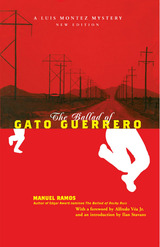 The Ballad of Gato Guerrero
Manuel Ramos
Northwestern University Press, 2003
Luis Montez—Denver attorney and part-time detective—has been getting his career and his life together. So how did he end up in a ditch, his car twisted and smoking nearby, a gun-wielding giant in a cowboy hat coming toward him?
The answer: his friend, Felix "Gato" Guerrero.
Trouble has always followed the larger-than-life Felix the Cat. Now it has jumped all over him. His girlfriend is the wife of a ruthless local crime lord and in spite of bullets and hit men he won't give her up. His former father-in-law blames him for a family tragedy and is bent on revenge. Worst of all, Felix is determined to remain unaware of the dangers. It's up to Montez-and not for the first time-to step in and save him.
As in his Edgar-nominated The Ballad of Rocky Ruiz, Manuel Ramos immerses readers not only in a thrilling mystery but also in the fascinating Chicano culture of the West. Fast-paced and richly textured, The Ballad of Gato Guerrero is an entertaining addition to the acclaimed Luis Montez mystery series.
The Ballad of Rocky Ruiz
Manuel Ramos
Northwestern University Press, 2003
This debut novel in the acclaimed Luis Montez series introduced a hero unique in detective fiction: a world-weary middle-aged lawyer steeped in the politics, history, and culture of the golden age of Chicano activism.
Twenty years ago, a gang attacked four Chicano student activists and shot down their leader, Rocky Ruiz. Now the survivors, Montez's former compatriots in the movement, are in danger. One is killed, another beaten, and a third driven into hiding. Enter Teresa Fuentes, a beautiful young lawyer determined to solve the mystery and just as determined to avoid becoming involved with Montez. To save his friends, Montez must reexamine the central event of their shared past-the murder of Rocky Ruiz. Just as difficult, he finds, may be to untangle his feelings for Teresa Fuentes.
Ballads and Sea Songs from Nova Scotia
William Roy MacKenzie
Harvard University Press Relics of the old English and Scottish popular ballads, songs of the familiar broadside type, chanties, last remorseful moments of sinful seafaring men, and other verses are included in this noteworthy collection, which shows an astonishing range and variety of matter. It contains upwards of 175 pieces, with the musical notation for forty-two of them.
Mackenzie’s long identification with this special field vouches for the comprehensiveness and the enthusiasm of his work. All students of folk-lore and all lovers of folk-poetry will find it an unusually rewarding book. Few volumes have so completely captured the tang of the ocean or the romance, the bravery, and the labor connected with the lives of seagoing men.
Ballads and Sea-Songs of Newfoundland
Elisabeth Bristol Greenleaf and Grace Yarrow Mansfield
Harvard University Press Newfoundland songs are diverse in origin. Vast numbers of them come from the British Isles, especially from England and Ireland; many are composed in Newfoundland, usually on English or Irish models; a lesser number of American, Canadian, and French songs are current. The ballads to be found in the Child collection are probably the oldest now sung. Then there are many seventeenth- and eighteenth-century broadside ballads, particularly English, and many nineteenth-century compositions. Such are the backgrounds from which the compilers of this volume have drawn their unusually interesting and delightful collection of ballad texts and ballad music. Expeditions to the island in 1920 and 1929 furnished the tunes; and a genuine interest in folk-literature assured the care and accuracy of the work.
 Ballads and Songs of Southern Michigan
Collected and Edited by Emelyn Elizabeth Gardner and Geraldine Jencks Chickering
University of Michigan Press, 1939 This book presents old-time Michigan, its songs and their tunes, collected and edited by Emelyn E. Gardner, a folklorist of wide experience, the author of Folklore from the Schoharie Hills, with the aid of Geraldine Jencks Chickering.Michigan's early settlers, coming from the older eastern states, both north and south, with many from England, Scotland, and the British North American possessions, brought with them their songs, which they sang happily at work and play, handing them down from generation to generation, and often adapting centuries-old ballads to their new environment. Many worked for a time in the woods and picked up the mournful, or jolly, ballads that were circulated through the camps by lumberjacks drifting in from the Maine and Canadian forests. There are old folks still alive who treasure these ancient songs, and young people who have learned them from their parents and grandparents—or even from the radio.Ballads and Songs of Southern Michigan collects and preserves these cherished possessions of the old frontier. With scholarly accuracy their history is recounted; the names of those who sang them are reported. The tunes of many are reproduced; there are ample indices and bibliography. Wilfred B. Shaw's ink drawings add much to the charm of the book. It is a worthy addition both to the literature of folklore and balladry, and to that of pioneer American history.
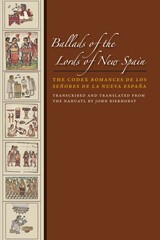 Ballads of the Lords of New Spain: The Codex Romances de los Senores de la Nueva Espana
Transcribed and translated from the Nahuatl by John Bierhorst
University of Texas Press, 2009 Compiled in 1582, Ballads of the Lords of New Spain is one of the two principal sources of Nahuatl song, as well as a poetical window into the mindset of the Aztec people some sixty years after the conquest of Mexico. Presented as a cancionero, or anthology, in the mode of New Spain, the ballads show a reordering—but not an abandonment—of classic Aztec values. In the careful reading of John Bierhorst, the ballads reveal in no uncertain terms the pre-conquest Aztec belief in the warrior's paradise and in the virtue of sacrifice. This volume contains an exact transcription of the thirty-six Nahuatl song texts, accompanied by authoritative English translations. Bierhorst includes all the numerals (which give interpretive clues) in the Nahuatl texts and also differentiates the text from scribal glosses. His translations are thoroughly annotated to help readers understand the imagery and allusions in the texts. The volume also includes a helpful introduction and a larger essay, "On the Translation of Aztec Poetry," that discusses many relevant historical and literary issues. In Bierhorst's expert translation and interpretation, Ballads of the Lords of New Spain emerges as a song of resistance by a conquered people and the recollection of a glorious past.
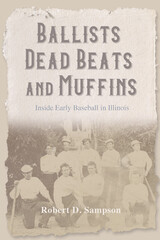 Ballists, Dead Beats, and Muffins: Inside Early Baseball in Illinois
Robert D. Sampson
University of Illinois Press, 2023 Winner of the Russell P. Strange Book of the Year Award from the Illinois State Historical Society Baseball’s spread across Illinois paralleled the sport’s explosive growth in other parts of the country.Robert D. Sampson taps a wealth of archival research to transport readers to an era when an epidemic of “base ball on the brain” raged from Alton to Woodstock. Focusing on the years 1865 to 1869, Sampson offers a vivid portrait of a game where local teams and civic ambition went hand in hand and teams of paid professionals displaced gentlemen’s clubs devoted to sporting fair play. This preoccupation with competition sparked rules disputes and controversies over imported players while the game itself mirrored society by excluding Black Americans and women. The new era nonetheless brought out paying crowds to watch the Rock Island Lively Turtles, Fairfield Snails, and other teams take the field up and down the state. A first-ever history of early baseball in Illinois, Ballists, Dead Beats, and Muffins adds the Prairie State game’s unique shadings and colorful stories to the history of the national pastime.
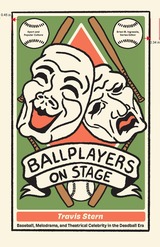 Ballplayers on Stage: Baseball, Melodrama, and Theatrical Celebrity in the Deadball Era
Travis Stern
University of Tennessee Press, 2024 Since before the turn of the twentieth century, baseball greats have captivated audiences both on the diamond and the stage. Gracing the world of melodrama with their theatrical presence during the offseason, their forays into professional theater opened a portal between two distinct worlds of performance and entertainment that would shape the future of both.
In Ballplayers on Stage, Travis Stern explores the relationship between professional baseball and professional theater in the late nineteenth and early twentieth centuries. In particular, he argues that examining theater from this era helps us better understand baseball’s development and its transformation from a strictly working-class attraction to an entertainment that attracted interest from America’s emerging middle class. Baseball players’ theatrical productions drew audiences from the baseball world, and in turn their performances on the diamond began to attract middle-class crowds. But how did the on-field persona of those players as heroes or villains contribute to their image in the theater, and vice versa?
To explore these questions, Stern examines case studies of five representative players from baseball’s pre–Babe Ruth “deadball” era: Cap Anson, Mike “King” Kelly, Christy Mathewson, Ty Cobb, and Rube Waddell, with a concluding study of Babe Ruth himself. While one draw of theatrical performance was the additional profit it promised the players during the off-season, the stage also offered these men an opportunity to take a more active role in shaping their public image. Thus, Ballplayers on Stage not only offers a historical study of baseball, theater, and the relationship between the two; it also shares insight into the creation of celebrity in early twentieth-century America. This unique book will interest American history scholars, baseball fans, and theater enthusiasts alike.
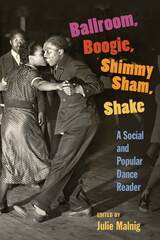 Ballroom, Boogie, Shimmy Sham, Shake: A Social and Popular Dance Reader
Edited by Julie Malnig
University of Illinois Press, 2008 This dynamic collection documents the rich and varied history of social dance and the multiple styles it has generated, while drawing on some of the most current forms of critical and theoretical inquiry. The essays cover different historical periods and styles; encompass regional influences from North and South America, Britain, Europe, and Africa; and emphasize a variety of methodological approaches, including ethnography, anthropology, gender studies, and critical race theory. While social dance is defined primarily as dance performed by the public in ballrooms, clubs, dance halls, and other meeting spots, contributors also examine social dance’s symbiotic relationship with popular, theatrical stage dance forms.
Contributors are Elizabeth Aldrich, Barbara Cohen-Stratyner, Yvonne Daniel, Sherril Dodds, Lisa Doolittle, David F. García, Nadine George-Graves, Jurretta Jordan Heckscher, Constance Valis Hill, Karen W. Hubbard, Tim Lawrence, Julie Malnig, Carol Martin, Juliet McMains, Terry Monaghan, Halifu Osumare, Sally R. Sommer, May Gwin Waggoner, Tim Wall, and Christina Zanfagna.
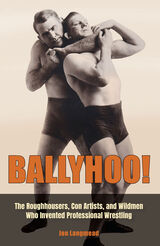 Ballyhoo!: The Roughhousers, Con Artists, and Wildmen Who Invented Professional Wrestling
Jon Langmead
University of Missouri Press, 2024 Choice Outstanding Academic Title for 2024
Ballyhoo! The Roughhousers, Con Artists, and Wildmen Who Invented Professional Wrestling is a history of professional wrestling’s formative period in the U.S., from roughly 1874 to 1941, and the contested interplay of wrestlers and promoters who built the “sport” as we know it. During this period, the major conventions that would define wrestling to the present day were perfected and codified, as wrestling morphed from a rough sport practiced on farms and at town gatherings to melodramatic mass entertainment that reliably drew large crowds in cities across the nation.
The narrative uses the life and career of Jack Curley—a boxing promoter whose fortune took a turn for the better when he began promoting wrestling matches—as a compass as it charts the development of wrestling. By the late 1910s, Curley’s shows were selling out Madison Square Garden monthly. Ballyhoo chronicles his competition with the other promoters, as well as the lives of colorful athletes like “Strangler” Ed Lewis, Frank Gotch, the “Masked Marvel,” Jim Londos, “Gorgeous George” Wagner, “Farmer” Martin Burns, and “Dynamite” Gus Sonnenberg.
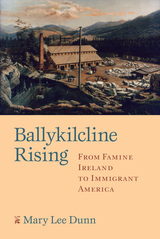 Ballykilcline Rising: From Famine Ireland to Immigrant America
Mary Lee Dunn Maguire
University of Massachusetts Press, 2008 In 1847, in the third year of Ireland's Great Famine and the thirteenth year of their rent strike against the Crown, hundreds of tenant farmers in Ballykilcline, County Roscommon, were evicted by the Queen's agents and shipped to New York. Mary Lee Dunn tells their story in this meticulously researched book. Using numerous Irish and U.S. sources and with descendants' help, she traces dozens of the evictees to Rutland, Vermont, as railroads and marble quarries transformed the local economy. She follows the immigrants up to 1870 and learns not only what happened to them but also what light American experience and records cast on their Irish "rebellion."
Dunn begins with Ireland's pre-Famine social and political landscape as context for the Ballykilcline strike. The tenants had rented earlier from the Mahons of Strokestown, whose former property now houses Ireland's Famine Museum. In 1847, landlord Denis Mahon evicted and sent nearly a thousand tenants to Quebec, where half died before or just after reaching the Grosse Ile quarantine station. Mahon was gunned down months later. His murder provoked an international controversy involving the Vatican. An early suspect in the case was a man from Ballykilcline.
In the United States, many of the immigrants resettled in clusters in several locations, including Vermont, Illinois, Iowa, Maryland, and New York. In Vermont they found jobs in the marble quarries, but some of them lost their homes again in quarry labor actions after 1859. Others prospered in their new lives. A number of Ballykilcline families who stopped in Rutland later moved west; one had a son kidnapped by Indians in Minnesota. Readers who have Irish Famine roots will gain a sense of their own "back story" from this account of Ireland and the native Irish, and scholars in the field of immigration studies will find it particularly useful.
Ballymurphy and the Irish War
Ciaran de Baroid
Pluto Press, 2000 In Easter 1970 war came to a small Belfast community. Ballymurphy has since been at the center of the Irish conflict, playing a vital role in the developments of the past thirty years. This book examines the impact of the conflict in this area of West Belfast, where today 12,000 people live in just eight housing estates. It is the story of a war told first-hand, through the words of ordinary human beings as they reveal the truth of their existence. Hailed as an immediate classic on first publication in 1989, this new edition has been completely revised to cover the events of the last decade.
 A Balm for Gilead: Meditations on Spirituality and the Healing Arts
Daniel P. Sulmasy, OFM, MD
Georgetown University Press, 2006 Once rarely discussed in medical circles, the relationship between spirituality and health has become an important topic in health care. This change is evidenced in courses on religion and medicine taught in most medical schools, articles in journals such as the New England Journal of Medicine, and conferences being held all over the country. Yet, much of the discussion of the role of religion and spirituality in health care keeps the critical distance of only being about spirituality. A Balm for Gilead goes further, offering a work of spirituality. Sulmasy moves between the poetic and the speculative, addressing his subject in the tradition of great spiritual writers like Augustine and Bonaventure. He draws from philosophical and theological sources—specifically, Hebrew and Christian scripture—to illuminate how the art of healing is integrally tied to a sense of the divine and our ultimate interconnectedness. Health care professionals—and anyone else involved with the care of the sick and dying—will find this series of meditations both inspiring and instructive. Sulmasy addresses the spiritual malaise that physicians, nurses, and other health care workers experience in their professional lives, and explores how these Christian healers can be inspired to persevere in the care of the sick. Drawing on the parable of the prodigal son, for instance, Sulmasy illustrates how some physicians have put financial gain ahead of their patients, and how genuine spirituality might change their hearts. He examines both enigmatic topics such as the relationship between sinfulness, sickness, and suffering and the spirituality of more routine topics such as preventive medicine. In one especially stirring and poignant meditation, he reflects on the spirituality of dying in the light of Christian hope. A Balm for Gilead interweaves prayer and reflection, pointing the way to a twenty-first-century spirituality for health care professionals and their patients.
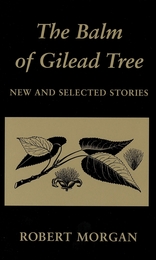 The Balm of Gilead Tree: New and Selected Stories
Robert Morgan
Ohio University Press, 1999 Published in 1999 by Gnomon Press In The Balm of Gilead Tree, acclaimed author and poet Robert Morgan presents a masterful collection of seventeen short stories—ten new and seven selected from earlier volumes—that illuminate the lives of working-class people in the American South, particularly in the Appalachian region. With lyrical precision and deep empathy, Morgan explores themes of hardship, resilience, and transformation across generations. From the haunting historical imagination of “The Tracks of Chief de Soto” to the visceral immediacy of “The Ratchet,” where a truck driver faces a terrifying descent with failed brakes, Morgan’s stories are rich in sensory detail and emotional depth. Characters grapple with environmental peril, economic uncertainty, and the quiet dramas of rural life, all rendered with Morgan’s signature clarity and reverence for the natural world. This collection affirms Morgan’s place as a vital voice in Southern literature, offering readers both the balm of storytelling and the grit of lived experience.
 Balsam Fir: A Monographic Review
E.V. Bakuzis and H.L. Hansen
University of Minnesota Press, 1965 Balsam Fir was first published in 1965. Minnesota Archive Editions uses digital technology to make long-unavailable books once again accessible, and are published unaltered from the original University of Minnesota Press editions. Professors Bakuzis and Hansen, with the assistance of a number of co-authors of individual chapters, present an exhaustive survey of the literature on the balsam fir, providing a coherent picture of the species and its place in nature and forestry practice. The balsam fir is used extensively in the pulp and paper industry, and it is known to millions as a traditional Christmas tree. In North America it is a major tree species in Canada, in the northeastern United States, and in the Great Lakes region. In the search of the literature, over 2000 sources were consulted and considerably more than half of them are cited in the book. The references, organized in an ecological framework, cover the period from the seventeenth century to the present. The authors have reviewed and integrated these data in a unified, but multipurposed, book. In the integration of the source material the authors also made contributions of their own. The book contains the following chapters: Botanical Foundations, Geography and Synecology, Ecological Factors, Microbiology, Entomology, Reproduction, Stand Development, Growth and Yield, and Utilization. Appendixes list fungi and myxomycetes and insects associated with balsam fir. There are 30 illustrations, including a frontispiece drawing by the noted nature artist Francis Lee Jaques. The book will appeal to a wide range of readers specifically concerned with forestry, including research workers, educators, entomologists, pathologists, and managing foresters, as well as conservationists and wildlife biologist in general.
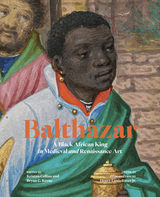 Balthazar: A Black African King in Medieval and Renaissance Art
Kristen Collins
J. Paul Getty Trust, The This abundantly illustrated book examines the figure of Balthazar, one of the biblical magi, and explains how and why he came to be depicted as a Black African king.
According to the Gospel of Matthew, magi from the East, following a star, traveled to Jerusalem bearing precious gifts for the infant Jesus. The magi were revered as wise men and later as kings. Over time, one of the three came to be known as Balthazar and to be depicted as a Black man.
Balthazar was familiar to medieval Europeans, appearing in paintings, manuscript illuminations, mosaics, carved ivories, and jewelry. But the origin story of this fascinating character uncovers intricate ties between Europe and Africa, including trade and diplomacy as well as colonization and enslavement.
In this book, experts in the fields of Ethiopian, West African, Nubian, and Western European art explore the representation of Balthazar as a Black African king. They examine exceptional art that portrays the European fantasy of the Black magus while offering clues about the very real Africans who may have inspired these images. Along the way, the authors chronicle the Black presence in premodern Europe, where free and enslaved Black people moved through public spaces and courtly circles. The volume’s lavish illustrations include selected works by contemporary artists who creatively challenge traditional depictions of Black history.
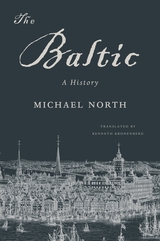 The Baltic: A History
Michael North
Harvard University Press, 2015 In this overview of the Baltic region from the Vikings to the European Union, Michael North presents the sea and the lands that surround it as a Nordic Mediterranean, a maritime zone of shared influence, with its own distinct patterns of trade, cultural exchange, and conflict. Covering over a thousand years in a part of the world where seas have been much more connective than land, The Baltic: A History transforms the way we think about a body of water too often ignored in studies of the world’s major waterways.
The Baltic lands have been populated since prehistory by diverse linguistic groups: Balts, Slavs, Germans, and Finns. North traces how the various tribes, peoples, and states of the region have lived in peace and at war, as both global powers and pawns of foreign regimes, and as exceptionally creative interpreters of cultural movements from Christianity to Romanticism and Modernism. He examines the golden age of the Vikings, the Hanseatic League, Gustavus Adolphus of Sweden, and Peter the Great, and looks at the hard choices people had to make in the twentieth century as fascists, communists, and liberal democrats played out their ambitions on the region’s doorstep.
With its vigorous trade in furs, fish, timber, amber, and grain and its strategic position as a thruway for oil and natural gas, the Baltic has been—and remains—one of the great economic and cultural crossroads of the world.
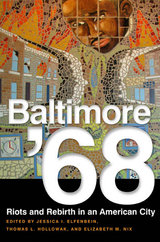 Baltimore '68: Riots and Rebirth in an American City
Edited by Jessica I. Elfenbein, Thomas L. Hollowak and Elizabeth M. Nix
Temple University Press, 2011 In 1968, Baltimore was home to a variety of ethnic, religious, and racial communities that, like those in other American cities, were confronting a quickly declining industrial base. In April of that year, disturbances broke the urban landscape along lines of race and class. This book offers chapters on events leading up to the turmoil, the riots, and the aftermath as well as four rigorously edited and annotated oral histories of members of the Baltimore community. The combination of new scholarship and first-person accounts provides a comprehensive case study of this period of civil unrest four decades later. This engaging, broad-based public history lays bare the diverse experiences of 1968 and their effects, emphasizing the role of specific human actions. By reflecting on the stories and analysis presented in this anthology, readers may feel empowered to pursue informed, responsible civic action of their own. Baltimore '68 is the book component of a larger public history project, "Baltimore '68 Riots: Riots and Rebirth." The project's companion website (http://archives.ubalt.edu/bsr/index.html ) offers many more oral histories plus photos, art, and links to archival sources. The book and the website together make up an invaluable teaching resource on cities, social unrest, and racial politics in the 1960s. The project was the corecipient of the 2009 Outstanding Public History Project Award from the National Council on Public History.
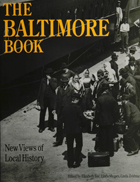 The Baltimore Book: New Views of Local History
Linda Shopes
Temple University Press, 1993 Baltimore has a long, colorful history that traditionally has been focused on famous men, social elites, and patriotic events. The Baltimore Book is both a history of "the other Baltimore" and a tour guide to places in the city that are important to labor, African American, and women's history. The book grew out of a popular local bus tour conducted by public historians, the People's History Tour of Baltimore, that began in 1982. This book records and adds sites to that tour; provides maps, photographs, and contemporary documents; and includes interviews with some of the uncelebrated people whose experiences as Baltimoreans reflect more about the city than Francis Scott Key ever did. The tour begins at the B&O Railroad Station at Camden Yards, site of the railroad strike of 1877, moves on to Hampden-Woodbury, the mid-19th century cotton textile industry's company town, and stops on the way to visit Evergreen House and to hear the narratives of ex-slaves. We travel to Old West Baltimore, the late 19th-century center of commerce and culture for the African American community; Fells Point; Sparrows Point; the suburbs; Federal Hill; and Baltimore's "renaissance" at Harborplace. Interviews with community activists, civil rights workers, Catholic Workers, and labor union organizers bring color and passion to this historical tour. Specific labor struggles, class and race relations, and the contributions of women to Baltimore's development are emphasized at each stop. In the series Critical Perspectives on the Past, edited by Susan Porter Benson, Stephen Brier, and Roy Rosenzweig.
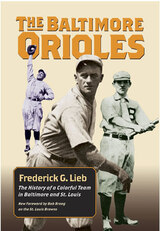 The Baltimore Orioles: The History of a Colorful Team in Baltimore and St. Louis
Frederick G. Lieb Foreword by Bob Broeg
Southern Illinois University Press, 2005 With a legacy that spans two fiercely loyal baseball towns a half-nation apart, the Baltimore Orioles—originally the St. Louis Browns—rank among baseball’s most storied teams. One of the fifteen celebrated team histories commissioned by G. P. Putnam’s Sons in the 1940s and 1950s, The Baltimore Orioles: The History of a Colorful Team in Baltimore and St. Louis chronicles the club’s early history and is reissued on the fiftieth anniversary of their first season in Baltimore. Hall of Fame sportswriter Frederick G. Lieb begins with the history of baseball in Baltimore from its pre-Civil War beginnings and its major-league debut as the Lord Baltimores in 1872 to the championship seasons of the National League Orioles in 1894, ’95, and ’96 when the roster included Willie Keeler, Joe Kelley, Kid Gleason, Roger Bresnahan, Joe McGinnity, and John McGraw. After the turn of the century, Baltimore was briefly home to the Orioles of the American League in 1901-02, then, after losing its franchise to New York, had to settle for the AAA International League Orioles until 1954. Under the leadership of Jack Dunn, the minor-league Orioles, while developing the talents of Babe Ruth, Lefty Grove, and other future major-league stars, won seven straight International League pennants from 1919 to 1926. Here, too, is the colorful history of the precursors to the current Orioles, the lovable and luckless St. Louis Browns, augmented for this edition with a new foreword from St. Louis sportswriter Bob Broeg on the escapades of the Brownies. Though they lost more than a thousand games and captured only a single pennant in fifty-three seasons, the Browns remain a legendary part of national lore. Taking their lead in different eras from larger-than-life figures such as Branch Rickey, Rogers Hornsby, Urban Shocker, and the Barnum of Baseball, Bill Veeck, the Browns “boasted a one-armed outfielder, a hired hypnotist, the mighty midget [Eddie Gaedel] and—even the best ballplayer in the land—George Sisler,” as Broeg recalls in his foreword. In 1944, the Browns also played in the only all-St. Louis World Series, losing to the Cardinals. Originally published in 1955 and featuring twenty-two photographs, The Baltimore Orioles history concludes with the new American League team’s first season in Baltimore, finishing seventh in the league but garnering the lasting adoration of their new hometown.
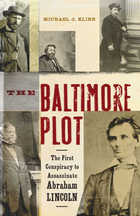 The Baltimore Plot: The First Conspiracy to Assassinate Abraham Lincoln
Michael J. Kline
Westholme Publishing, 2008 The Complete Story of the First Attempt to Assassinate President Abraham Lincoln
"In a thrilling detective story of conspiracy, treachery and assassination, Michael J. Kline suggests how close the Baltimore plotters came to achieving their goal, and reveals how Lincoln and a few guards outwitted them. Meticulously researched and written with verve, "The Baltimore Plot" takes readers aboard Lincoln's inaugural train for a perilous and unforgettable journey." —James L. Swanson, author of the Edgar Award-winning New York Times bestseller Manhunt: The 12-Day Chase for Lincoln's Killer On February 11, 1861, the "Lincoln Special" - Abraham Lincoln's private train—began its journey from Springfield, Illinois, to the City of Washington, carrying the president-elect to his inauguration as the sixteenth president of the United States. Considered a "sectional candidate" by the South, and winning the election without the popular vote, Lincoln was so despised that seven states immediately seceded from the Union. Over the next twelve days, Lincoln would speak at numerous stops, including Indianapolis, Columbus, Cleveland, Pittsburgh, Buffalo, Albany, New York, and Philadelphia, expressing his desire to maintain the Union. But as Lincoln made his way east, America's first private detective, Allan Pinkerton, and a separate undercover operation by New York City detectives, uncovered startling evidence of a conspiracy to assassinate Lincoln during his next-to-last stop in Baltimore. Long a site of civil unrest—even Robert E. Lee's father, Henry "Light Horse Harry" Lee, was nearly beaten to death in its streets—Baltimore provided the perfect environment for a strike. The largest city of a border state with secessionist sympathies, Baltimore had been infiltrated by paramilitary groups bent on killing Lincoln, the "Black Republican." The death of the president-elect would, it was supposed, throw the nation into chaos and allow the South to establish a new nation and claim Washington as its capital. Warned in time, Lincoln outfoxed the alleged conspirators by slipping through Baltimore undetected, but at a steep price. Ridiculed by the press for "cowardice" and the fact that no conspirators were charged, Lincoln would never hide from the public again. Four years later, when he sat unprotected in the balcony of Ford's Theatre, the string of conspiracies against his life finally succeeded. One of the great presidential mysteries and long a source of fascination among Lincoln scholars, the Baltimore Plot has never been fully investigated until now. In The Baltimore Plot: The First Conspiracy to Assassinate Abraham Lincoln, Michael J. Kline turns his legal expertise to evaluating primary sources in order to discover the extent of the conspiracy and culpability of the many suspects surrounding the case. Full of memorable characters, including Kate Warne, the first female undercover agent, and intriguing plot twists, the story is written as an unfolding criminal proceeding in which the author allows the reader to determine whether there was a true plot to kill Lincoln and if the perpetrators could have been brought to trial.
 Baltimore Portraits
Amos Badertscher
Duke University Press, 1999 Baltimore Portraits is a unique presentation of photographs by Amos Badertscher. These portraits—many accompanied by poignantly revealing, hand-written narratives about their subjects—represent a sector of Baltimore that has gone largely unnoticed and rarely has been documented. In this volume, the assemblage of images of bar and street people—transvestites, strippers, drug addicts, drag queens, and hustlers—spans a twenty-year period from the mid-1970s to the mid-1990s. Badertscher’s arresting and melancholy photographs document a culture that has virtually disappeared due to substance abuse, AIDS, and, often, societal or family neglect.
The photographer’s focus on content rather than on elaborate technique reveals the intensely personal—and, indeed, autobiographical—nature of his portraits. Their simplicity along with the text’s intimacy affects the viewer in ways not easily forgotten. An introduction by Tyler Curtain contextualizes the photographs both within the history of Baltimore and its queer subculture and in relationship to contemporaneous work by photographers Nan Goldin, Robert Mapplethorpe, Cindy Sherman, Duane Michaels, and others. Curtain also positions the underlying concerns of Bardertscher’s art in relation to gay and lesbian cultural politics.
This striking collection of portraits, along with the photographer’s moving text, will impact not only a general audience of photographers and enthusiasts of the art but also those engaged with gay and lesbian studies, queer theory, and cultural studies in general. It is published in association with the Duke University Museum of Art.
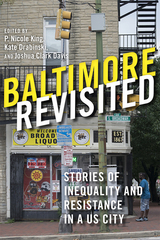 Baltimore Revisited: Stories of Inequality and Resistance in a U.S. City
Edited by P. Nicole King, Kate Drabinski, and Joshua Clark Davis
Rutgers University Press, 2019 Nicknamed both “Mobtown” and “Charm City” and located on the border of the North and South, Baltimore is a city of contradictions. From media depictions in The Wire to the real-life trial of police officers for the murder of Freddie Gray, Baltimore has become a quintessential example of a struggling American city. Yet the truth about Baltimore is far more complicated—and more fascinating.
To help untangle these apparent paradoxes, the editors of Baltimore Revisited have assembled a collection of over thirty experts from inside and outside academia. Together, they reveal that Baltimore has been ground zero for a slew of neoliberal policies, a place where inequality has increased as corporate interests have eagerly privatized public goods and services to maximize profits. But they also uncover how community members resist and reveal a long tradition of Baltimoreans who have fought for social justice.
The essays in this collection take readers on a tour through the city’s diverse neighborhoods, from the Lumbee Indian community in East Baltimore to the crusade for environmental justice in South Baltimore. Baltimore Revisited examines the city’s past, reflects upon the city’s present, and envisions the city’s future.
 Baltimore Sports: Stories from Charm City
Daniel A. Nathan
University of Arkansas Press, 2016 To read a sample chapter, visit www.uapress.com.
Baltimore is the birthplace of Francis Scott Key’s “The Star-Spangled Banner,” the incomparable Babe Ruth, and the gold medalist Michael Phelps. It’s a one-of-a-kind town with singular stories, well-publicized challenges, and also a rich sporting history. Baltimore Sports: Stories from Charm City chronicles the many ways that sports are an integral part of Baltimore’s history and identity and part of what makes the city unique, interesting, and, for some people, loveable. Wide ranging and eclectic, the essays included here cover not only the Orioles and the Ravens, but also lesser-known Baltimore athletes and teams. Toots Barger, known as the “Queen of the Duckpins,” makes an appearance. So do the Dunbar Poets, considered by some to be the greatest high-school basketball team ever. Bringing together the work of both historians and journalists, including Michael Olesker, former Baltimore Sun columnist, and Rafael Alvarez, who was named Baltimore’s Best Writer by Baltimore Magazine in 2014, Baltimore Sports illuminates Charm City through this fascinating exploration of its teams, fans, and athletes.
Balzac's Omelette: A Delicious Tour of French Food and Culture with Honore de Balzac
Ankha Muhlstein
Haus Publishing, 2012 ‘Tell me where you eat. what you eat, and at what time you eat, and I will tell you who you are.’ This is the motto of Anka Muhlstein’s erudite and witty book about the ways food and the art of the table feature in Honoré de Balzac’s writing.
It is not a coincidence that Balzac was the first in French literature to tackle this appetizing topic. Before the French Revolution, a traveller in France was apt to find local food scarce, tasteless and of dubious appearance. Restaurants did not even exist! Just as the art of the table became a centrepiece of French mores, Balzac used it as a connecting thread in his novels, showing how food can evoke character, atmosphere, class and social pretensions. Full of insights, Balzac’s Omelette invites you to taste anew French literature and cuisine.
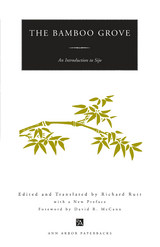 The Bamboo Grove: An Introduction to Sijo
Richard Rutt
University of Michigan Press, 1998 The sijo is the most popular and most Korean of all traditional Korean poetic forms, originating with the old songs of the Hyangka of the Sylla Empire (668-936) and the prose songs of the Koryo Dynasty (918-1392). Sometimes likened to haiku for its brevity, a typical sijo poem follows a three-line pattern, with each line containing approximately fifteen syllables. The first two lines mimic one another both in form and content, but the last line often introduces a twist or countertheme, not only bringing the poem to a close, but sharpening the theme developed in the first two lines.
The popularity of the sijo in Korea--writers range from royalty to common citizens--is always a challenge for the translator, who must often inhabit widely differing backgrounds to completely understand a poem's subtle nuances. Richard Rutt's translations, considered to be some of the best available in English, remain true to the unique structure of the original Korean lyric.
The Bamboo Grove will interest not only poets and students of poetry, but scholars of Korean culture curious to view history through this important and significant form of verse.
The white snow has left the valleys where the clouds are lowering,
Is it true that somewhere the plum trees have happily blossomed?
I stand here alone in the dusk and do not know where to go.
YI SAEK (1328-1396)
Richard Rutt is also the editor and translator of the book Virtuous Women: Three Classic Korean Novels and, most recently, The Zhou Yi: A New Translation with Commentary of the Book of Changes. David R. McCann is Korea Foundation Professor of Korean Literature and Professor of East Asian Languages and Civilizations, Harvard University.
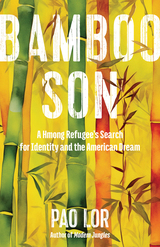 Bamboo Son: A Hmong Refugee’s Search for Identity and the American Dream
Pao Lor
Wisconsin Historical Society Press, 2026 Pao Lor’s stirring journey of self-discovery and belonging in his new home—America.
“In Hmong, the word bamboo or ntsuag has two meanings. It refers to the bamboo plant, which has many significant cultural and practical uses in Hmong life. The word also means orphan. Therefore, bamboo son, in Hmong, means tub ntsuag or orphan son. To survive and succeed as a Hmong orphan, like bamboo, one must be resilient and adaptable, bend without breaking, and stand tall against enormous odds.”
In this follow-up to his acclaimed memoir, Modern Jungles, Pao Lor picks up his story as a young Hmong immigrant building a new life in a new home and shares the narrative of his ensuing journey into adulthood. Lor emerged from war and tragedies in the jungles of Laos and refugee camps of Thailand in the 1970s to pursue a vision of the American dream in Green Bay, Wisconsin, in the 1980s. The distance between his humble beginnings and that dream life was littered with challenges as well as possibilities.
Lor’s transformation from an insecure but determined high school student to a husband, father, teacher, administrator, and author is marked by triumph and defeat, trauma and joy, and always hope and optimism. As he navigates school, first loves, family relationships, and a career, Lor must contend with language barriers, discrimination, and his own inner demons stemming from feelings of inferiority. Threads of his identity—Hmong, American, and Wisconsinite—intersect and occasionally come into conflict.
Lor’s search for belonging comes full circle when he travels to Laos and Thailand with his wife, Maya, in 2022. Seeing his birthplace for the first time in forty-five years, he revisits the isolated mountain villages where he spent his early childhood; the places where his parents and sister died as the family fled the region in the violent aftermath of the Vietnam War; and the two refugee camps where Pao and his siblings lived before being relocated to the United States when he was seven. As he reexamines these memories and reconciles his past, Lor finds peace and the freedom to move forward with his soul renewed.
Lor’s story is an uplifting journey of resilience, adaptation, love, and forgiveness, inspiring readers to reflect on the meaning and accessibility of the American dream.
Bamboos of Bhutan
C. Stapleton
Royal Botanic Gardens, Kew, 1994 An identification guide illustrated with line drawings; with descriptions and notes on distribution, ecology, uses and propagation. Published for the ODA and the Forestry Research Programme, University of Oxford.
 The Banality of Good and Evil: Moral Lessons from the Shoah and Jewish Tradition
David R. Blumenthal
Georgetown University Press, 1999 People who helped exterminate Jews during the shoah (Hebrew for "holocaust") often claimed that they only did what was expected of them. Intrigued by hearing the same response from individuals who rescued Jews, David R. Blumenthal proposes that the notion of ordinariness used to characterize Nazi evil is equally applicable to goodness. In this provocative book, Blumenthal develops a new theory of human behavior that identifies the social and psychological factors that foster both good and evil behavior. Drawing on lessons primarily from the shoah but also from well-known obedience and altruism experiments, My Lai, and the civil rights movement, Blumenthal deftly interweaves insights from psychology, history, and social theory to create a new way of looking at human behavior. Blumenthal identifies the factors — social hierarchy, education, and childhood discipline — that shape both good and evil attitudes and actions. Considering how our religious and educational institutions might do a better job of encouraging goodness and discouraging evil, he then makes specific recommendations for cultivating goodness in people, stressing the importance of the social context of education. He reinforces his ideas through stories, teachings, and case histories from the Jewish tradition that convey important lessons in resistance and goodness. Appendices include the ethical code of the Israel Defense Forces, material on non-violence from the Martin Luther King, Jr., Center, a suggested syllabus for a Jewish elementary school, and a list of prosocial sources on the Web, as well as a complete bibliography. If people can commit acts of evil without thinking, why can’t even more commit acts of kindness? Writing with power and insight, Blumenthal shows readers of all faiths how we might replace patterns of evil with empathy, justice, and caring, and through a renewed attention to moral education, perhaps prevent future shoahs.
 The Banality of Good: The UN's Global Fight against Human Trafficking
Lieba Faier
Duke University Press, 2024 In The Banality of Good, Lieba Faier examines why contemporary efforts to curb human trafficking have fallen so spectacularly short of their stated goals despite well-funded campaigns by the United Nations and its member-state governments. Focusing on Japan’s efforts to enact the UN’s counter-trafficking protocol and assist Filipina migrants working in Japan’s sex industry, Faier draws from interviews with NGO caseworkers and government officials to demonstrate how these efforts disregard the needs and perspectives of those they are designed to help. She finds that these campaigns tend to privilege bureaucracies and institutional compliance, resulting in the compromised quality of life, repatriation, and even criminalization of human trafficking survivors. Faier expands on Hannah Arendt’s idea of the “banality of evil” by coining the titular “banality of good” to describe the reality of the UN’s fight against human trafficking. Detailing the protocols that have been put in place and evaluating their enactment, Faier reveals how the continued failure of humanitarian institutions to address structural inequities and colonial history ultimately reinforces the violent status quo they claim to be working to change.
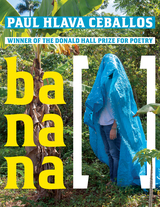 banana [ ]
Paul Hvala Ceballos
University of Pittsburgh Press, 2022 Winner, Donald Hall Prize for Poetry
Finalist, 2023 NBCC Award for Poetry
Winner, 2023 Poetry Society of America Norma Farber First Book Award
Finalist, 2023 Washington State Book Award in Poetry
Finalist, 2024 Kate Tufts Discovery Award
The poems in Paul Hlava Ceballos’s debut collection banana [ ] reveal the extractive relationship the United States has with the Americas and its people through poetic portraits of migrants, family, and personal memories. At the heart of the book is a long poem that traces the history of bananas in Latin America using only found text from sources such as history books, declassified CIA documents, and commercials. The book includes collage, Ecuadorian decimas, a sonnet series in the voices of Incan royalty at the moment of colonization, and a long poem interspersed with photos and the author’s mother’s bilingual idioms. Traversing language and borders, history and story, traditional and invented forms, this book guides us beyond survival to love.
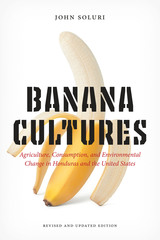 Banana Cultures: Agriculture, Consumption, and Environmental Change in Honduras and the United States
By John Soluri
University of Texas Press, 2021 Bananas, the most frequently consumed fresh fruit in the United States, have been linked to Miss Chiquita and Carmen Miranda, "banana republics," and Banana Republic clothing stores—everything from exotic kitsch, to Third World dictatorships, to middle-class fashion. But how did the rise in banana consumption in the United States affect the banana-growing regions of Central America? In this lively, interdisciplinary study, John Soluri integrates agroecology, anthropology, political economy, and history to trace the symbiotic growth of the export banana industry in Honduras and the consumer mass market in the United States. Beginning in the 1870s, when bananas first appeared in the U.S. marketplace, Soluri examines the tensions between the small-scale growers, who dominated the trade in the early years, and the shippers. He then shows how rising demand led to changes in production that resulted in the formation of major agribusinesses, spawned international migrations, and transformed great swaths of the Honduran environment into monocultures susceptible to plant disease epidemics that in turn changed Central American livelihoods. Soluri also looks at labor practices and workers' lives, changing gender roles on the banana plantations, the effects of pesticides on the Honduran environment and people, and the mass marketing of bananas to consumers in the United States. His multifaceted account of a century of banana production and consumption adds an important chapter to the history of Honduras, as well as to the larger history of globalization and its effects on rural peoples, local economies, and biodiversity.
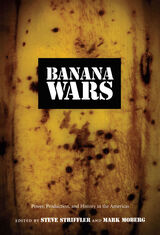 Banana Wars: Power, Production, and History in the Americas
Steve Striffler and Mark Moberg, eds.
Duke University Press, 2003 Over the past century, the banana industry has radically transformed Latin America and the Caribbean and become a major site of United States–Latin American interaction. Banana Wars is a history of the Americas told through the cultural, political, economic, and agricultural processes that brought bananas from the forests of Latin America and the Caribbean to the breakfast tables of the United States and Europe. The first book to examine these processes in all the western hemisphere regions where bananas are grown for sale abroad, Banana Wars advances the growing body of scholarship focusing on export commodities from historical and social scientific perspectives. Bringing together the work of anthropologists, sociologists, economists, historians, and geographers, this collection reveals how the banana industry marshaled workers of differing nationalities, ethnicities, and languages and, in so doing, created unprecedented potential for conflict throughout Latin American and the Caribbean. The frequently abusive conditions that banana workers experienced, the contributors point out, gave rise to one of Latin America’s earliest and most militant labor movements. Responding to both the demands of workers’ organizations and the power of U.S. capital, Latin American governments were inevitably affected by banana production. Banana Wars explores how these governments sometimes asserted their sovereignty over foreign fruit companies, but more often became their willing accomplices. With several essays focusing on the operations of the extraordinarily powerful United Fruit Company, the collection also examines the strategies and reactions of the American and European corporations seeking to profit from the sale of bananas grown by people of different cultures working in varied agricultural and economic environments. Contributors
Philippe Bourgois
Marcelo Bucheli
Dario Euraque
Cindy Forster
Lawrence Grossman
Mark Moberg
Laura T. Raynolds
Karla Slocum
John Soluri
Steve Striffler
Allen Wells
 Band People: Life and Work in Popular Music
Franz Nicolay
University of Texas Press, 2024 A close look at the lives of working musicians who aren’t the center of their stage. Secret (and not-so-secret) weapons, side-of-the-stagers, rhythm and horn sections, backup singers, accompanists—these and other “band people” are the anonymous but irreplaceable character actors of popular music. Through interviews and incisive cultural critique, writer and musician Franz Nicolay provides a portrait of the musical middle class. Artists talk frankly about their careers and attitudes toward their craft, work environment, and group dynamics, and shed light on how support musicians make sense of the weird combination of friend group, gang, small business consortium, long-term creative collaboration, and chosen family that constitutes a band. Is it more important to be a good hang or a virtuoso player? Do bands work best as democracies or autocracies? How do musicians with children balance their personal and professional lives? How much money is too little? And how does it feel to play on hundreds of records, with none released under your name? In exploring these and other questions, Band People gives voice to those who collaborate to create and dissects what it means to be a laborer in the culture industry.
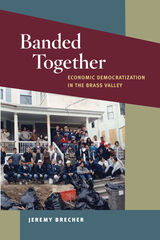 Banded Together: Economic Democratization in the Brass Valley
Jeremy Brecher
University of Illinois Press, 2011 Providing incisive commentary on the historical and contemporary American working class experience, Banded Together: Economic Democratization in the Brass Valley documents a community's efforts to rebuild and revitalize itself in the aftermath of deindustrialization. Through powerful oral histories and other primary sources, Jeremy Brecher tells the story of a group of average Americans--factory workers, housewives, parishioners, and organizers--who tried to create a democratic alternative to the economic powerlessness caused by the closing of factories in the Connecticut Naugatuck Valley region during the 1970s and 1980s. This volume focuses on grassroots organization, democratically controlled enterprises, and supportive public policies, providing examples from the Naugatuck Valley Project community-alliance that remain relevant to the economic problems of today and tomorrow. Drawing on more than a hundred interviews with Project leaders, staff, and other knowledgeable members of the local community, Brecher illustrates how the Naugatuck Valley Project served as a vehicle for community members to establish greater control over their economic lives.
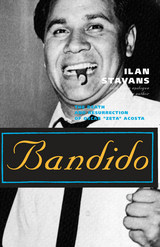 Bandido: The Death and Resurrection of Oscar "Zeta" Acosta
Ilan Stavans
Northwestern University Press, 2003 The Hispanic Malcolm X. Writer. Activist. Civil rights attorney. Obese, dark-skinned, and angry. Man with a surplus of personality. Man of vision. All the above describe Oscar "Zeta" Acosta. El Paso-born, Acosta became a leading figure in the Chicano rights movement of the 1960s and 1970s, winning landmark decisions in civil rights cases as an attorney. As a tireless writer and activist, he had a profound influence on his contemporaries. He seemed to be everywhere at once, knowing everyone in "el movimiento" and involving himself in many of its key moments. Tumultuous and prone to excess, he is the Samoan in Hunter S. Thompson's Fear and Loathing in Las Vegas. In 1974, after a last phone call to his son, Acosta disappeared in the Mexican state of Mazatlán.
Hailed as "a fine, learned homage" (Kirkus), "a kaleidoscopic portrait" (Booklist), and "a game of mirrors" (The Washington Post), Bandido is a veritable tour de force. Through interviews and Acosta's writings (published and unpublished), Ilan Stavans reconstructs—even reinvents—the man behind the myth. Part biographical appraisal, part reflection on the legacy of the Civil Rights era, Bandido is an opportunity to understand the challenges and pitfalls Latinos face in finding a place of their own in America.
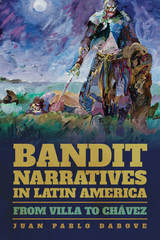 Bandit Narratives in Latin America: From Villa to Chávez
Juan Pablo Dabove
University of Pittsburgh Press, 2016 Bandits seem ubiquitous in Latin American culture. Even contemporary actors of violence are framed by narratives that harken back to old images of the rural bandit, either to legitimize or delegitimize violence, or to intervene in larger conflicts within or between nation-states.
However, the bandit escapes a straightforward definition, since the same label can apply to the leader of thousands of soldiers (as in the case of Villa) or to the humble highwayman eking out a meager living by waylaying travelers at machete point. Dabove presents the reader not with a definition of the bandit, but with a series of case studies showing how the bandit trope was used in fictional and non-fictional narratives by writers and political leaders, from the Mexican Revolution to the present. By examining cases from Argentina, Brazil, Mexico, Peru, and Venezuela, from Pancho Villa’s autobiography to Hugo Chávez’s appropriation of his “outlaw” grandfather, Dabove reveals how bandits function as a symbol to expose the dilemmas or aspirations of cultural and political practices, including literature as a social practice and as an ethical experience.
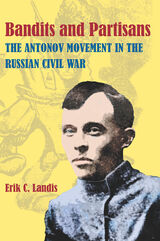 Bandits and Partisans: The Antonov Movement in the Russian Civil War
Erik C. Landis
University of Pittsburgh Press, 2008 Beginning in the fall of 1920, Aleksandr Antonov led an insurgency that became the largest armed peasant revolt against the Soviets during the civil war. Yet by the summer of 1921, the revolt had been crushed, and popular support for the movement had all but disappeared. Until now, details of this conflict have remained hidden. Erik Landis mines recently opened provincial and central Soviet archives and international collections to provide a depth of detail and historical analysis never before possible in this definitive account of the uprising.
Landis examines both sides of the conflict, probing the testimonies of the insurgents, their opponents, and those caught in between. We witness firsthand the frustrations, failures, and internal conflicts of the Bolsheviks and the spirit of rebellion that drove the insurgents and helped drive a localized dispute into a well-organized mass rebellion that struck fear in the hearts of Communist leaders. This political and military threat was influential in bringing about Lenin's conciliatory New Economic Policy, which allowed farmers and villages to sustain themselves in a quasi-market economy.
Bandits and Partisans presents a gripping tale of brutality, domination, and revolt, placing readers at the frontlines of the complex and rich history of the Russian civil war and the consolidation of the new Soviet state.
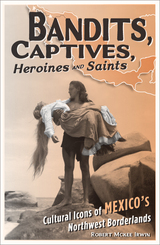 Bandits, Captives, Heroines, and Saints: Cultural Icons of Mexico’s Northwest Borderlands
Robert McKee Irwin
University of Minnesota Press, 2007 Bandits, Captives, Heroines, and Saints investigates cultural icons of the late nineteenth century from Mexico’s largely unstudied northwest borderlands, present-day Sonora, Baja California, and western Chihuahua. Robert McKee Irwin looks at popular figures such as Joaquín Murrieta, the gold rush social bandit; Lola Casanova, the anti-Malinche, whose marriage to a Seri Indian symbolized a forbidden form of mestizaje; and la Santa de Cabora, a young faith healer who inspired armed insurgencies and was exiled to Arizona. Cultural icons such as Murrieta, Lola Casanova, and la Santa de Cabora are products of intercultural dialogue, Irwin reveals, and their characterizations are unstable. They remain relevant for generations because there is no consensus regarding their meanings, and they are weapons in struggles of representation in the borderlands. The figures studied here are especially malleable, he argues, because they are marginalized from the mainstream of historiography. A timely analysis, Bandits, Captives, Heroines, and Saints challenges current paradigms of border studies and presents a rich understanding of the ways in which cultural icons influence people’s minds and lives. Robert McKee Irwin is associate professor of Spanish at the University of California, Davis, and the author of Mexican Masculinities (Minnesota, 2003).
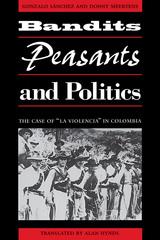 Bandits, Peasants, and Politics: The Case of "La Violencia" in Colombia
By Gonzalo Sánchez and Donny Meertens
University of Texas Press, 2001 The years 1945-1965 saw heavy partisan conflict in the rural areas of Colombia, with at least 200,000 people killed. This virtual civil war began as a sectarian conflict between the Liberal and Conservative parties, with rural workers (campesinos) constituting the majority of combatants and casualties. Yet La Violencia resists classification as a social uprising, since calls for social reform were largely absent during this phase of the struggle. In fact, once the elite leadership settled on a power-sharing agreement in 1958, the conflict appeared to subside. This book focuses on the second phase (1958-1965) of the struggle, in which the social dimensions of the conflict emerged in a uniquely Colombian form: the campesinos, shaped by the earlier violence, became social and political bandits, no longer acting exclusively for powerful men above them but more in defense of the peasantry. In comparing them with other regional expressions of bandolerismo, the authors weigh the limited prospects for the evolution of Colombian banditry into full-scale social revolution. Published originally in 1983 as Bandoleros, gamonales y campesinos and now updated with a new epilogue, this book makes a timely contribution to the discourse on social banditry and the Colombian violencia. Its importance rests in the insights it provides not only on the period in question but also on Colombia's present situation.
 Bandung Revisited: The Legacy of the 1955 Asian-African Conference for International Order
Edited by Amitav Acharya and Tan See Seng
National University of Singapore Press, 2008 The 1955 Asia-Africa conference (the “Bandung Conference”) was a meeting of 29 Asian and African nations that sought to draw on Asian and African nationalism and religious traditions to forge a new international order that was neither communist nor capitalist, and led six years later to the non-aligned movement. Few would dispute the notion that the inaugural meeting in 1955 was a watershed in international history, but there is much disagreement about its long-term legacy and its significance for present-day international affairs. Was it a post-colonial ideological reaction to the passing of the age of empire or an innovative effort to promote a new regionalism? Were its principles of peaceful coexistence a rhetorical flourish or a substantive policy initiative? Did the Conference help define North-South relations? And in what way did the Conference contribute to the regional order of contemporary Asia?
The authors in the present volume argue that the Bandung Conference had a lasting normative influence on the contemporary regional order of Asia, and that it underlies the diplomatic principles and loosely defined normative framework that characterize present-day Asian international relations.
The Baneberry Disaster: A Generation of Atomic Fallout
Larry C. Johns
University of Nevada Press, 2017 The Baneberry Disaster covers the calamitous December 1970 Baneberry underground nuclear test that pumped nearly 7 million curies of radiation into the atmosphere, caused the suspension of nuclear testing at the Nevada Test Site for six months, and whose radioactive cloud exposed 86 test-site workers to radiation, two of whom died of leukemia less than four years later.
The authors are attorneys from Las Vegas who spent 25 years pursuing a lawsuit for the victims at Baneberry. The story begins in 1971, just after the Baneberry test vented, and takes the reader through the years leading up to the trial, the 41-day trial in 1979, and the multiple appeals following the trial. It discusses the claims and lawsuits filed by others exposed to atomic testing, and the congressional investigations that led to the enactment of the Radiation Exposure Compensation Act in 1990.
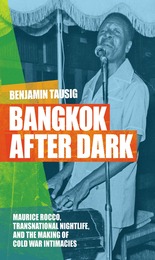 Bangkok after Dark: Maurice Rocco, Transnational Nightlife, and the Making of Cold War Intimacies
Benjamin Tausig
Duke University Press, 2025 From the 1930s to the 1950s, jazz pianist Maurice Rocco was a mainstay in Hollywood and American nightlife scenes. As rock and roll surpassed jazz as America’s most popular music in the 1950s, the queer Black pianist’s fortunes faded and he was forced to go abroad for new opportunities. In 1964 Rocco settled in Bangkok, where he thrived and enjoyed a relatively privileged life until he was murdered by two young male sex workers in 1976. In Bangkok after Dark, Benjamin Tausig uses Rocco’s intriguing story to trace the history of transnational nightlife encounters between Thais and Americans during the long American war in Vietnam. Tausig shows how these encounters, which included musical collaborations, romantic and sexual relationships, and new labor, identity, and geopolitical configurations, remade Thailand in crucial and enduring ways. As Tausig demonstrates, Rocco’s Blackness, queerness, and musical life in Thailand illuminate how Thai-American relationships complicated neat distinctions between the two countries. In teasing out these complexities through the figure of Rocco, Tausig challenges conventional understandings of the global Cold War on individual and transnational scales.
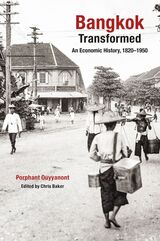 Bangkok Transformed: An Economic History, 1820–1950
Porphant Ouyyanont
National University of Singapore Press, 2026 A history of the economic evolution of the city of Bangkok.
For much of its early history, Bangkok was little more than a riverside settlement, yet by the mid-twentieth century, it had become the commercial and political heart of Thailand. Bangkok Transformed deciphers this progress, outlining how the city’s economy and urban landscape were shaped by global trade and royal intervention. As the rice trade boomed, Chinese immigrants poured in, forming the backbone of Bangkok’s labor force and entrepreneurial class. Meanwhile, the Siamese monarchy, particularly under King Chulalongkorn, wielded economic power through state-run enterprises and control over key industries. These forces propelled Bangkok into modernity but also left behind a centralized governance structure that continues to influence the city today.
Written by Thailand’s foremost economic historian, Porphant Ouyyanont, and completed posthumously by historian Chris Baker, this meticulously researched study offers an innovative economic and social history of Bangkok. Spanning from the early nineteenth century to 1950, it displays how the foundations of contemporary Bangkok were laid in its first great transformation.
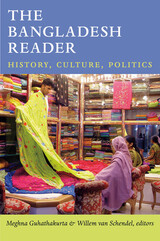 The Bangladesh Reader: History, Culture, Politics
Meghna Guhathakurta and Willem van Schendel, eds.
Duke University Press, 2013 Bangladesh is the world's eighth most populous country. It has more inhabitants than either Russia or Japan, and its national language, Bengali, ranks sixth in the world in terms of native speakers. Founded in 1971, Bangladesh is a relatively young nation, but the Bengal Delta region has been a major part of international life for more than 2,000 years, whether as an important location for trade or through its influence on Buddhist, Hindu, and Muslim life. Yet the country rarely figures in global affairs or media, except in stories about floods, poverty, or political turmoil. The Bangladesh Reader does what those portrayals do not: It illuminates the rich historical, cultural, and political permutations that have created contemporary Bangladesh, and it conveys a sense of the aspirations and daily lives of Bangladeshis. Intended for travelers, students, and scholars, the Reader encompasses first-person accounts, short stories, historical documents, speeches, treaties, essays, poems, songs, photographs, cartoons, paintings, posters, advertisements, maps, and a recipe. Classic selections familiar to many Bangladeshis—and essential reading for those who want to know the country—are juxtaposed with less-known pieces. The selections are translated from a dozen languages; many have not been available in English until now. Featuring eighty-three images, including seventeen in color, The Bangladesh Reader is an unprecedented, comprehensive introduction to the South Asian country's turbulent past and dynamic present.
Bangladesh’s Changing Mediascape: From State Control to Market Forces
Edited by Brian Shoesmith, Jude William Genilo, and Md Asiuzzaman
Intellect Books, 2013 With contributions from a diverse group of media and communications scholars from around the globe, Bangladesh’s Changing Mediascape presents a pioneering study of the trends, patterns, and prospects shaping the contemporary Bangladeshi media. Among the many topics discussed here are the difference among specific media formats, including television, newspapers, radio, film, and photography; policy issues; and the challenge that new media poses to governance in a developing nation faced with innumerable economic, social, and political problems. Eschewing the currently dominant development communication model, the editors argue that market forces rather than planned state interventions will contribute to a more equitable communication environment.
 Bangtan Remixed: A Critical BTS Reader
Patty Ahn, Michelle Cho, Vernadette Vicuña Gonzalez, Rani Neutill, Mimi Thi Nguyen, and Yutian Wong, editors
Duke University Press, 2024 Bangtan Remixed delves into the cultural impact of celebrated K-Pop boy band BTS, exploring their history, aesthetics, fan culture, and capitalist moment. The collection’s contributors—who include artists, scholars, journalists, activists, and fans—approach BTS through inventive and wide-ranging transnational perspectives. From tracing BTS’s hip hop genealogy to analyzing how the band’s mid-2020 album reflects the COVID-19 pandemic to demonstrating how Baroque art history influences BTS’s music videos, the contributors investigate BTS’s aesthetic heritage. They also explore the political and technological dimensions of BTS’s popularity with essays on K-Pop and BTS’s fan culture as frontiers of digital technology, the complex relationship between BTS and Blackness, the impact of anti-Asian racism on BTS’s fandom, and the challenges BTS poses to conservative norms of gender and sexuality. Bangtan Remixed shows how one band can inspire millions of fans and provide a broad range of insights into contemporary social and political life.
Contributors. Andrea Acosta, Patty Ahn, Carolina Alves, Inez Amihan Anderson, Allison Anne Gray Atis, Kaina “Kai” Bernal, Mutlu Binark, Jheanelle Brown, Sophia Cai, Michelle Cho, Mariam Elba, Ameena Fareeda, Vernadette Vicuña Gonzalez, Rosanna Hall, Dal Yong Jin, JIN Youngsun, Despina Kakoudaki, Yuni Kartika, Alptekin Keskin, Rachel Kuo, Marci Kwon, Courtney Lazore, Regina Yung Lee, S. Heijin Lee, Wonseok Lee, Amanda Lovely, Melody Lynch-Kimery, Maria Mison, Noel Sajid I. Murad, Sara Murphy, UyenThi Tran Myhre, Rani Neutill, Johnny Huy Nguyễn, Mimi Thi Nguyen, Karlina Octaviany, Nykeah Parham, Stefania Piccialli, Raymond San Diego, Hannah Ruth L. Sison, Prerna Subramanian, Havannah Tran, Andrew Ty, Gracelynne West, Yutian Wong, Jaclyn Zhou
 Banished Citizens: A History of the Mexican American Women Who Endured Repatriation
Marla A. Ramírez
Harvard University Press, 2025 A moving portrait of a grim period in American immigration history, when approximately one million ethnic Mexicans—mostly women and children who were US citizens—were forced to relocate across the southern border.
From 1921 to 1944, approximately one million ethnic Mexicans living in the United States were removed across the border to Mexico. What officials called “repatriation” was in fact banishment: 60 percent of those expelled were US citizens, mainly working-class women and children whose husbands and fathers were Mexican immigrants. Drawing on oral histories, transnational archival sources, and private collections, Marla A. Ramírez illuminates the lasting effects of coerced mass removal on three generations of ethnic Mexicans.
Ramírez argues that banishment served interests on both sides of the border. In the United States, the government accused ethnic Mexicans of dependence on social services in order to justify removal, thereby scapegoating them for post–World War I and Depression-era economic woes. In Mexico, meanwhile, officials welcomed returnees for their potential to bolster the labor force. In the process, all Mexicans in the United States—citizens and undocumented immigrants alike—were cast as financially burdensome and culturally foreign. Shedding particular light on the experiences of banished women, Ramírez depicts the courage and resilience of their efforts to reclaim US citizenship and return home. Nevertheless, banishment often interrupted their ability to pass on US citizenship to their children, robbed their families of generational wealth, and drastically slowed upward mobility. Today, their descendants continue to confront and resist the impact of these injustices—and are breaking the silence to ensure that this history is not forgotten.
A wrenching account of expulsion and its afterlives, Banished Citizens illuminates the continuing social, legal, and economic consequences of a removal campaign still barely acknowledged in either Mexico or the United States.
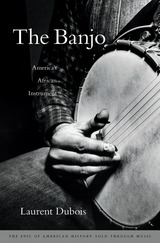 The Banjo: America’s African Instrument
Laurent Dubois
Harvard University Press, 2016 The banjo has been called by many names over its history, but they all refer to the same sound—strings humming over skin—that has eased souls and electrified crowds for centuries. The Banjo invites us to hear that sound afresh in a biography of one of America’s iconic folk instruments. Attuned to a rich heritage spanning continents and cultures, Laurent Dubois traces the banjo from humble origins, revealing how it became one of the great stars of American musical life.
In the seventeenth century, enslaved people in the Caribbean and North America drew on their memories of varied African musical traditions to construct instruments from carved-out gourds covered with animal skin. Providing a much-needed sense of rootedness, solidarity, and consolation, banjo picking became an essential part of black plantation life. White musicians took up the banjo in the nineteenth century, when it became the foundation of the minstrel show and began to be produced industrially on a large scale. Even as this instrument found its way into rural white communities, however, the banjo remained central to African American musical performance.
Twentieth-century musicians incorporated the instrument into styles ranging from ragtime and jazz to Dixieland, bluegrass, reggae, and pop. Versatile and enduring, the banjo combines rhythm and melody into a single unmistakable sound that resonates with strength and purpose. From the earliest days of American history, the banjo’s sound has allowed folk musicians to create community and joy even while protesting oppression and injustice.
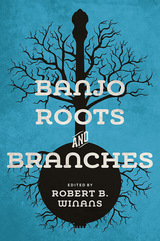 Banjo Roots and Branches
Edited by Robert B. Winans
University of Illinois Press, 2018 The story of the banjo's journey from Africa to the western hemisphere blends music, history, and a union of cultures. In Banjo Roots and Branches, Robert B. Winans presents cutting-edge scholarship that covers the instrument's West African origins and its adaptations and circulation in the Caribbean and United States. The contributors provide detailed ethnographic and technical research on gourd lutes and ekonting in Africa and the banza in Haiti while also investigating tuning practices and regional playing styles. Other essays place the instrument within the context of slavery, tell the stories of black banjoists, and shed light on the banjo's introduction into the African- and Anglo-American folk milieus. Wide-ranging and illustrated with twenty color images, Banjo Roots and Branches offers a wealth of new information to scholars of African American and folk musics as well as the worldwide community of banjo aficionados. Contributors: Greg C. Adams, Nick Bamber, Jim Dalton, George R. Gibson, Chuck Levy, Shlomo Pestcoe, Pete Ross, Tony Thomas, Saskia Willaert, and Robert B. Winans.
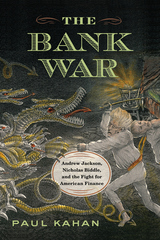 The Bank War: Andrew Jackson, Nicholas Biddle, and the Fight for American Finance
Paul Kahan
Westholme Publishing, 2022 The Battle over the Charter of the Second Bank of the United States and Its Lasting Impact on the American Economy
Late one night in July 1832,Martin Van Buren rushed to the White House where he found an ailing President Andrew Jackson weakened but resolute. Thundering against his political antagonists, Jackson bellowed: “The Bank, Mr. Van Buren, is trying to kill me, but I shall kill it!”With those famous words, Jackson formally declared “war” against the Second Bank of the United States and its president Nicholas Biddle. The Bank of the United States, which held the majority of Federal monies, had been established as a means of centralizing and stabilizing American currency and the economy, particularly during the country’s vulnerable early years. Jackson and his allies viewed the bank as both elitist and a threat to states’ rights. Throughout his first term, Jackson had attacked the bank viciously but failed to take action against the institution. Congress’ decision to recharter the bank forced Jackson to either make good on his rhetoric and veto the recharter or sign the recharter bill and be condemned as a hypocrite.
In The Bank War: Andrew Jackson, Nicholas Biddle, and the Fight for American Finance, historian Paul Kahan explores one of the most important and dramatic events in American political and economic history, from the idea of centralized banking and the First Bank of the United States to Jackson’s triumph, the era of “free banking,” and the creation of the Federal Reserve System. Relying on a range of primary and secondary source material, the book also shows how the Bank War was a manifestation of the debates that were sparked at the Constitutional Convention—the role of the executive branch and the role of the federal government in American society—debates that endure to this day as philosophical differences that often divide the United States.
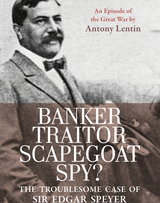 Banker, Traitor, Scapegoat, Spy?: The Troublesome Case of Sir Edgar Speyer
Antony Lentin
Haus Publishing, 2013 Sir Edgar Speyer was a conspicuous figure in the financial, cultural, social and political life of Edwardian London. Head of the syndicate which financed the construction of the deep "tube lines" and "King of the Underground", he was also a connoisseur and active patron of the arts who rescued the "Prom" from collapse, enhanced the nation's musical and artistic life at his own expense and directed the funding of Captain Scott's Antarctic expeditions. Speyer and his wife, the concert violinist, Leonora Speyer lived in fabulously magnificent style. Early in the early summer of 1914 they stood at the peak of their success and celebrity in London society. Within weeks, on the outbreak of war, they became pariahs, objects of suspicion and aversion. Despite having been a naturalised British citizen for over 20 years and an ubiquitous public benefactor, Speyer found himself ostracised by society and mercilessly harried by the Northcliffe press. Under the Aliens Act of 1918, Speyer was summoned in 1921 before a judicial enquiry which found him guilty of disloyalty and disaffection and of communicating and trading with the enemy. He was stripped of his citizenship and membership of the Privy Council. Pilloried by The Times as a traitor, Speyer vehemently denied the charges, but he never returned to England thereafter and never forgot his ordeal.
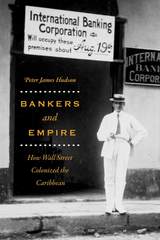 Bankers and Empire: How Wall Street Colonized the Caribbean
Peter James Hudson
University of Chicago Press, 2017 From the end of the nineteenth century until the onset of the Great Depression, Wall Street embarked on a stunning, unprecedented, and often bloody period of international expansion in the Caribbean. A host of financial entities sought to control banking, trade, and finance in the region. In the process, they not only trampled local sovereignty, grappled with domestic banking regulation, and backed US imperialism—but they also set the model for bad behavior by banks, visible still today. In Bankers and Empire, Peter James Hudson tells the provocative story of this period, taking a close look at both the institutions and individuals who defined this era of American capitalism in the West Indies. Whether in Wall Street minstrel shows or in dubious practices across the Caribbean, the behavior of the banks was deeply conditioned by bankers’ racial views and prejudices. Drawing deeply on a broad range of sources, Hudson reveals that the banks’ experimental practices and projects in the Caribbean often led to embarrassing failure, and, eventually, literal erasure from the archives.
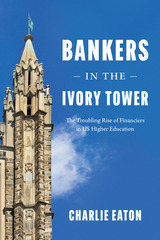 Bankers in the Ivory Tower: The Troubling Rise of Financiers in US Higher Education
Charlie Eaton
University of Chicago Press, 2022 Exposes the intimate relationship between big finance and higher education inequality in America.
Elite colleges have long played a crucial role in maintaining social and class status in America while public universities have offered a major stepping-stone to new economic opportunities. However, as Charlie Eaton reveals in Bankers in the Ivory Tower, finance has played a central role in the widening inequality in recent decades, both in American higher education and in American society at large.
With federal and state funding falling short, the US higher education system has become increasingly dependent on financial markets and the financiers that mediate them. Beginning in the 1980s, the government, colleges, students, and their families took on multiple new roles as financial investors, borrowers, and brokers. The turn to finance, however, has yielded wildly unequal results. At the top, ties to Wall Street help the most elite private schools achieve the greatest endowment growth through hedge fund investments and the support of wealthy donors. At the bottom, takeovers by private equity transform for-profit colleges into predatory organizations that leave disadvantaged students with massive loan debt and few educational benefits. And in the middle, public universities are squeezed between incentives to increase tuition and pressures to maintain access and affordability. Eaton chronicles these transformations, making clear for the first time just how tight the links are between powerful financiers and America’s unequal system of higher education.
 Banking for a Better World: Nanno Kleiterp in Conversation with Marijn Wiersma
Nanno Kleiterp
Amsterdam University Press, 2017 When we look at all the challenges facing the world, including inequality, population migration, and climate change, we can see a role for development banking in nearly all of them. But will that role be played for good or ill? This book brings together two people who collectively draw on their forty-five years of experience in that world to argue that development banking can-and must-play a constructive role. We only need to read the news to find public outrage at tales of short-sighted greed in the financial world. But what happens when banks invest in long-term sustainability? Readers will find a fascinating example in the journey of the Dutch development bank FMO. At times global in perspective, at other moments intimately personal, Banking for a Better World interweaves candid anecdotes with development history, as well as banking lessons with client interviews, to deliver a powerful argument for a business model that generates profit through impact, and impact through profit. This is an important and accessible must-read for anyone involved in banking, business, policy making, and civil society as a whole. Banking for a Better World challenges us to start finding overlaps between our own lives and global issues and to bridge the distance between our personal needs and those of our planet.
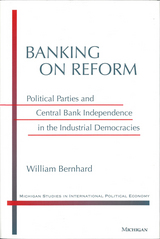 Banking on Reform: Political Parties and Central Bank Independence in the Industrial Democracies
William Bernhard
University of Michigan Press, 2002 Banking on Reform examines the political determinants of recent reforms to monetary policy institutions in the industrial democracies. With these reforms, political parties have sought to draw on the political credibility of an independent central bank to cope with electoral consequences of economic internalization and deindustrialization.
New Zealand and Italy made the initial efforts to grant their central banks independence. More recently, France, Spain, Britain, and Sweden have reformed their central banks' independence. Additionally, members of the European Union have implemented a single currency, with an independent European central bank to administer monetary policy.
Banking on Reform stresses the politics surrounding the choice of these institutions, specifically the motivations of political parties. Where intraparty conflicts have threatened the party's ability to hold office, politicians have adopted an independent central bank. Where political parties have been secluded from the political consequences of economic change, reform has been thwarted or delayed. The drive toward a single currency also reflects these political concerns. By delegating monetary policy to the European level, politicians in the member states removed a potentially divisive issue from the domestic political agenda, allowing parties to rebuild their support constructed on the basis of other issues. William T. Bernhard provides a variety of evidence to support his argument, such as in-depth case accounts of recent central bank reforms in Italy and Britain, the role of the German Bundesbank in the policy process, and the adoption of the single currency in Europe. Additionally, he utilizes quantitative and statistical tests to enhance his argument.
This book will appeal to political scientists, economists, and other social scientists interested in the political and institutional consequences of economic globalization.
William T. Bernhard is Assistant Professor of Political Science, University of Illinois, Urbana-Champaign.
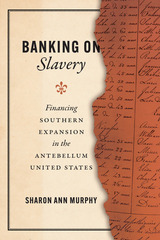 Banking on Slavery: Financing Southern Expansion in the Antebellum United States
Sharon Ann Murphy
University of Chicago Press, 2023 A sobering excavation of how deeply nineteenth-century American banks were entwined with the institution of slavery.
It’s now widely understood that the fullest expression of nineteenth-century American capitalism was found in the structures of chattel slavery. It’s also understood that almost every other institution and aspect of life then was at least entangled with—and often profited from—slavery’s perpetuation. Yet as Sharon Ann Murphy shows in her powerful and unprecedented book, the centrality of enslaved labor to banking in the antebellum United States is far greater than previously thought.
Banking on Slavery sheds light on precisely how the financial relationships between banks and slaveholders worked across the nineteenth-century South. Murphy argues that the rapid spread of slavery in the South during the 1820s and ’30s depended significantly upon southern banks’ willingness to financialize enslaved lives, with the use of enslaved individuals as loan collateral proving central to these financial relationships. She makes clear how southern banks were ready—and, in some cases, even eager—to alter time-honored banking practices to meet the needs of slaveholders. In the end, many of these banks sacrificed themselves in their efforts to stabilize the slave economy. Murphy also details how banks and slaveholders transformed enslaved lives from physical bodies into abstract capital assets. Her book provides an essential examination of how our nation’s financial history is more intimately intertwined with the dehumanizing institution of slavery than scholars have previously thought.
 Banking on Slavery: Financing Southern Expansion in the Antebellum United States
Sharon Ann Murphy
University of Chicago Press, 2023 This is an auto-narrated audiobook version of this book.
A sobering excavation of how deeply nineteenth-century American banks were entwined with the institution of slavery.
It’s now widely understood that the fullest expression of nineteenth-century American capitalism was found in the structures of chattel slavery. It’s also understood that almost every other institution and aspect of life then was at least entangled with—and often profited from—slavery’s perpetuation. Yet as Sharon Ann Murphy shows in her powerful and unprecedented book, the centrality of enslaved labor to banking in the antebellum United States is far greater than previously thought.
Banking on Slavery sheds light on precisely how the financial relationships between banks and slaveholders worked across the nineteenth-century South. Murphy argues that the rapid spread of slavery in the South during the 1820s and ’30s depended significantly upon southern banks’ willingness to financialize enslaved lives, with the use of enslaved individuals as loan collateral proving central to these financial relationships. She makes clear how southern banks were ready—and, in some cases, even eager—to alter time-honored banking practices to meet the needs of slaveholders. In the end, many of these banks sacrificed themselves in their efforts to stabilize the slave economy. Murphy also details how banks and slaveholders transformed enslaved lives from physical bodies into abstract capital assets. Her book provides an essential examination of how our nation’s financial history is more intimately intertwined with the dehumanizing institution of slavery than scholars have previously thought.
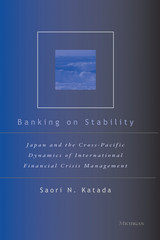 Banking on Stability: Japan and the Cross-Pacific Dynamics of International Financial Crisis Management
Saori N. Katada
University of Michigan Press, 2001 Saori N. Katada examines international financial stability in the aftermath of financial crises--and how such stability is maintained through collective action among major financial powers across the Pacific, the United States, and Japan. She explores the important role that financial support by the Japanese government played in solving the Latin American debt crisis in the 1980s, as well as its lack of support for the Mexican rescue in 1994--95 and its inconsistency during the recent Asian financial crisis.
Banking on Stability looks at Japan's willingness to cooperate financially with the United States--its most important trade partner--in cases where such compliance yields an improvement in relations. Katada argues that the Japanese government carefully weighs the benefits arising in international and domestic realms when taking on the role of collective crisis manager and concludes that Japan is no exception in having private gain as a central motivation during international financial crises.
Saori Katada is Assistant Professor, School of International Relations, University of Southern California.
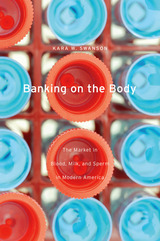 Banking on the Body: The Market in Blood, Milk, and Sperm in Modern America
Kara W. Swanson
Harvard University Press, 2014 Scientific advances and economic forces have converged to create something unthinkable for much of human history: a robust market in human body products. Every year, countless Americans supply blood, sperm, and breast milk to “banks” that store these products for later use by strangers in routine medical procedures. These exchanges entail complicated questions. Which body products are donated and which sold? Who gives and who receives? And, in the end, who profits? In this eye-opening study, Kara Swanson traces the history of body banks from the nineteenth-century experiments that discovered therapeutic uses for body products to twenty-first-century websites that facilitate a thriving global exchange.
More than a metaphor, the “bank” has shaped ongoing controversies over body products as either marketable commodities or gifts donated to help others. A physician, Dr. Bernard Fantus, proposed a “bank” in 1937 to make blood available to all patients. Yet the bank metaphor labeled blood as something to be commercially bought and sold, not communally shared. As blood banks became a fixture of medicine after World War II, American doctors made them a front line in their war against socialized medicine. The profit-making connotations of the “bank” reinforced a market-based understanding of supply and distribution, with unexpected consequences for all body products, from human eggs to kidneys.
Ultimately, the bank metaphor straitjacketed legal codes and reinforced inequalities in medical care. By exploring its past, Banking on the Body charts the path to a more efficient and less exploitative distribution of the human body’s life-giving potential.
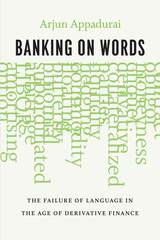 Banking on Words: The Failure of Language in the Age of Derivative Finance
Arjun Appadurai
University of Chicago Press, 2015 In this provocative look at one of the most important events of our time, renowned scholar Arjun Appadurai argues that the economic collapse of 2008—while indeed spurred on by greed, ignorance, weak regulation, and irresponsible risk-taking—was, ultimately, a failure of language. To prove this sophisticated point, he takes us into the world of derivative finance, which has become the core of contemporary trading and the primary target of blame for the collapse and all our subsequent woes. With incisive argumentation, he analyzes this challengingly technical world, drawing on thinkers such as J. L. Austin, Marcel Mauss, and Max Weber as theoretical guides to showcase the ways language—and particular failures in it—paved the way for ruin.
Appadurai moves in four steps through his analysis. In the first, he highlights the importance of derivatives in contemporary finance, isolating them as the core technical innovation that markets have produced. In the second, he shows that derivatives are essentially written contracts about the future prices of assets—they are, crucially, a promise. Drawing on Mauss’s The Gift and Austin’s theories on linguistic performatives, Appadurai, in his third step, shows how the derivative exploits the linguistic power of the promise through the special form that money takes in finance as the most abstract form of commodity value. Finally, he pinpoints one crucial feature of derivatives (as seen in the housing market especially): that they can make promises that other promises will be broken. He then details how this feature spread contagiously through the market, snowballing into the systemic liquidity crisis that we are all too familiar with now.
With his characteristic clarity, Appadurai explains one of the most complicated—and yet absolutely central—aspects of our modern economy. He makes the critical link we have long needed to make: between the numerical force of money and the linguistic force of what we say we will do with it.
 Banking Reform in Central Europe and the Former Soviet Union
Jacek Rostowski
Central European University Press, 1995 From Berlin to the Bering Strait, the business of banking has sprung to life. This analysis considers the impact of banking reform on macroeconomic stabilization and the suitability of universal banks, the role of banking regulation and the advantages of 'narrow banks' during transition, the cleaning up of bad debts, and the reform of the payments system. The book assesses the lessons which can be drawn from reforms in Central Europe for the later reformers in the former Soviet Union and the Balkans. It considers the impact of banking reform on macroeconomic stabilization and the suitability of German-type universal banks; the role of banking regulation and the advantages of 'narrow banks' during transition; the cleaning-up of bad debts; bank privatization and reform of the payments system. Five chapters follow which review the experience of some of the 'second-wave' countries: Estonia, Georgia, Romania, Russia and Ukraine.
 Banking Theories in the United States before 1860
Harry E. Miller
Harvard University Press One might almost call this volume a history of the slow education of the United States in the proper functions of banks and in methods of banking. The country was long in clarifying its mind on the question whether banks were blessings to the community or devilish devices of super-clever men for preying on the public. The theories of early bankers, public men, and writers on economics, and the beliefs and prejudices of the public are all set forth with a wealth of detail in the four parts into which the volume is divided. These respectively treat “The Utility of Banks as a Source of Media of Payment,” “The Utility of Banks as Agencies in the Distribution of Loanable Funds,” “Bank Notes and Bank Deposits,” and “Banking Policy and the Business Cycle.” The reader will follow with interest the slow but sure increase in public recognition of the services that banks render, a recognition that became progressively more appreciative as the bankers themselves grew in knowledge, not only of the underlying principles of their business, but of its technique.
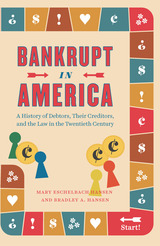 Bankrupt in America: A History of Debtors, Their Creditors, and the Law in the Twentieth Century
Mary Eschelbach Hansen and Bradley A. Hansen
University of Chicago Press, 2020 In 2005, more than two million Americans—six out of every 1,000 people—filed for bankruptcy. Though personal bankruptcy rates have since stabilized, bankruptcy remains an important tool for the relief of financially distressed households. In Bankrupt in America, Mary and Brad Hansen offer a vital perspective on the history of bankruptcy in America, beginning with the first lasting federal bankruptcy law enacted in 1898.
Interweaving careful legal history and rigorous economic analysis, Bankrupt in America is the first work to trace how bankruptcy was transformed from an intermittently used constitutional provision, to an indispensable tool for business, to a central element of the social safety net for ordinary Americans. To do this, the authors track federal bankruptcy law, as well as related state and federal laws, examining the interaction between changes in the laws and changes in how people in each state used the bankruptcy law. In this thorough investigation, Hansen and Hansen reach novel conclusions about the causes and consequences of bankruptcy, adding nuance to the discussion of the relationship between bankruptcy rates and economic performance.
 The Bankruptcy: A Novel
Júlia Lopes de Almeida
University College London, 2023 The first novel-length translation of Júlia Lopes de Almeida’s writing into English.
Set in the early years of Brazil’s Old Republic after the abolition of slavery, Júlia Lopes de Almeida's The Bankruptcy depicts the rise and fall of a wealthy coffee exporter against a kaleidoscopic background of glamour, poverty, seduction, and financial speculation. The novel introduces readers to a turbulent period in Brazilian history seething with new ideas about democracy, women’s emancipation, and the role of religion in society. Originally published in 1901, its prescient critiques of financial capitalism and the patriarchal family remain relevant today.
In her lifetime, Júlia Lopes de Almeida was compared to Machado de Assis, the most important Brazilian writer of the nineteenth century. She was also considered for the inaugural list of members of the Brazilian Academy of Letters but was excluded because of her gender. In the decades after her death, her work was largely forgotten. This publication, a winner of the English PEN award, includes an introduction to the novel and a translators' preface and accompanies a general rediscovery of her extraordinary body of work in Brazil.
Bankruptcy and Debt Collection in Liberal Capitalism: Switzerland, 1800–1900
Mischa Suter
University of Michigan Press, 2021 Drawing on perspectives from anthropology and social theory, this book explores the quotidian routines of debt collection in nineteenth-century capitalism. It focuses on Switzerland, an exemplary case of liberal rule. Debt collection and bankruptcy relied on received practices until they were standardized in a Swiss federal law in 1889. The vast array of these practices was summarized by the idiomatic Swiss legal term “Rechtstrieb” (literally, “law drive”). Analyzing these forms of summary justice opens a window to the makeshift economies and the contested political imaginaries of nineteenth-century everyday life. Ultimately, the book advances an empirically grounded and theoretically informed history of quotidian legal practices in the everyday economy; it is an argument for studying capitalism from the bottom up.
 Bankruptcy in United States History
Charles Warren
Harvard University Press Even though everybody is already aware that history repeats itself, there is unexpected encouragement in Mr Warren’s book for a belief in the adequacy of our own generation and of the Federal constitution to meet the conditions of our day. His sketch of the depressions of the past and his descriptions of the attempts at legislative adjustment of the relations between debtor and creditor have an immediate bearing upon present conditions and upon future developments of our national economic life. He has examined each of our previous periods of economic depression by way of the vigorous debates on bankruptcy that have stirred the various Congresses at such times. He points out that one of the striking features of them all has been the increase in the scope of the demands for relief through the exercise by Congress of its power under the bankruptcy clause of the Constitution. This entirely new method of approach will make the book of the greatest interest to the general reader of history as well as to the student of economics and to the lawyer.
Bankruptcy's Universal Pragmatist: Festschrift in Honor of Jay Westbrook
Christoph G. Paulus and John A. E. Pottow, Editors
Michigan Publishing, 2021 A Who’s Who of international scholars of bankruptcy law have come together to compile a Festschrift honoring the work of Jay Lawrence Westbrook, one of the most prominent professors of bankruptcy law. Jay is not just the father—perhaps grandfather—of modern cross-border insolvency theory, but a pioneer (along with his co-authors Teresa A. Sullivan and Elizabeth Warren) of empirical research in commercial law. The volume collects the papers presented at “JayFest,” the 2018 celebration of Jay’s work in Austin co-sponsored by the University of Texas Law School, the Texas Law Review, and the world’s premier bankruptcy organization, the International Insolvency Institute.
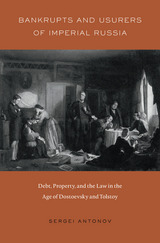 Bankrupts and Usurers of Imperial Russia: Debt, Property, and the Law in the Age of Dostoevsky and Tolstoy
Sergei Antonov
Harvard University Press, 2016 As readers of classic Russian literature know, the nineteenth century was a time of pervasive financial anxiety. With incomes erratic and banks inadequate, Russians of all social castes were deeply enmeshed in networks of credit and debt. The necessity of borrowing and lending shaped perceptions of material and moral worth, as well as notions of social respectability and personal responsibility. Credit and debt were defining features of imperial Russia’s culture of property ownership. Sergei Antonov recreates this vanished world of borrowers, bankrupts, lenders, and loan sharks in imperial Russia from the reign of Nicholas I to the period of great social and political reforms of the 1860s.
Poring over a trove of previously unexamined records, Antonov gleans insights into the experiences of ordinary Russians, rich and poor, and shows how Russia’s informal but sprawling credit system helped cement connections among property owners across socioeconomic lines. Individuals of varying rank and wealth commonly borrowed from one another. Without a firm legal basis for formalizing debt relationships, obtaining a loan often hinged on subjective perceptions of trustworthiness and reputation. Even after joint-stock banks appeared in Russia in the 1860s, credit continued to operate through vast networks linked by word of mouth, as well as ties of kinship and community. Disputes over debt were common, and Bankrupts and Usurers of Imperial Russia offers close readings of legal cases to argue that Russian courts—usually thought to be underdeveloped in this era—provided an effective forum for defining and protecting private property interests.
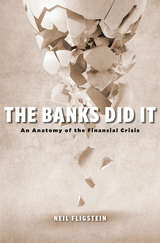 The Banks Did It: An Anatomy of the Financial Crisis
Neil Fligstein
Harvard University Press, 2021 A comprehensive account of the rise and fall of the mortgage-securitization industry, which explains the complex roots of the 2008 financial crisis.
More than a decade after the 2008 financial crisis plunged the world economy into recession, we still lack an adequate explanation for why it happened. Existing accounts identify a number of culprits—financial instruments, traders, regulators, capital flows—yet fail to grasp how the various puzzle pieces came together. The key, Neil Fligstein argues, is the convergence of major US banks on an identical business model: extracting money from the securitization of mortgages. But how, and why, did this convergence come about?
The Banks Did It carefully takes the reader through the development of a banking industry dependent on mortgage securitization. Fligstein documents how banks, with help from the government, created the market for mortgage securities. The largest banks—Countrywide Financial, Bear Stearns, Citibank, and Washington Mutual—soon came to participate in every aspect of this market. Each firm originated mortgages, issued mortgage-backed securities, sold those securities, and, in many cases, acted as their own best customers by purchasing the same securities. Entirely reliant on the throughput of mortgages, these firms were unable to alter course even when it became clear that the market had turned on them in the mid-2000s.
With the structural features of the banking industry in view, the rest of the story falls into place. Fligstein explains how the crisis was produced, where it spread, why regulators missed the warning signs, and how banks’ dependence on mortgage securitization resulted in predatory lending and securities fraud. An illuminating account of the transformation of the American financial system, The Banks Did It offers important lessons for anyone with a stake in avoiding the next crisis.
 The Banks We Deserve: Reclaiming Community Banking for a Just Economy
Oscar Perry Abello
Island Press, 2025 We’ve never done anything big in this country without little banks. Yet the number of community banks in the US has been steadily declining for decades, giving way to big banks that have little connection to the communities they claim to serve. The massive, unprecedented shift toward such a highly concentrated banking sector has weakened our ability to take action at a community level and leaves many people, especially those who have been historically marginalized, without access to capital.
In The Banks We Deserve, journalist Oscar Perry Abello argues that community banking has a crucial role to play in addressing urgent social challenges, from creating a more racially just economy to preparing for a changing climate. At their best, community banks unleash the agency and aspirations of the communities that establish them. Abello challenges people working on racial justice, community development, or addressing climate change to start more community banks or credit unions as part of their work, while also calling for policies and regulatory reforms that will help tilt the landscape back in favor of community banking.
The Banks We Deserve tells the stories of new community banks — like Adelphi Bank, in Columbus, Ohio, the first new Black bank in 20 years; or Walden Mutual Bank in Concord, New Hampshire, the first new mutual bank since 1973 and the first chartered specifically to finance a more sustainable food system; or Climate First Bank, in St. Petersburg, Florida, which has grown exponentially since opening for business in 2021. He hopes these stories inspire others to take some of these same daunting-but-not-impossible steps.
For a community or industry that is being ignored by big banks, the idea of starting up a new bank or credit union rarely figures as an option. In The Banks We Deserve, Abello shows advocates, organizers, and innovators that it can be done, that it is being done, and describes a path to support more community banks and credit unions.
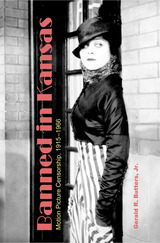 Banned in Kansas: Motion Picture Censorship, 1915-1966
Gerald R. Butters, Jr.
University of Missouri Press, 2016 If you caught a movie in Kansas through much of the past century, you’re likely to have seen a different version than did the rest of America. Theda Bara’s depictions of wicked sexuality were off-limits, and a film such as the 1932 Scarface showed far too much violence for decent folk—a threat to Protestant culture and to the morals of the general population.
In 1915, Kansas became one of only a handful of states to establish its own film censorship board. The Kansas board controlled screen content in the state for more than fifty years, yet little is known about its activities. This first book-length study of state film censorship examines the unique political, social, and economic factors that led to its implementation in Kansas, examining why censorship legislation was enacted, what the attitudes of Kansans were toward censorship, and why it lasted for half a century.
Cinema historian Gerald Butters places the Kansas Board of Review’s attempts to control screen content in the context of nationwide censorship efforts during the early part of the twentieth century. He tells how factors such as Progressivism, concern over child rearing, and a supportive press contributed to censorship, and he traces the board’s history from the problems posed by the emergence of “talkies” through changing sexual mores in the 1920s to challenges to its power in the 1950s.
In addition to revealing the fine points of film content deemed too sensitive for screening, Butters describes the daily operations of the board, illustrating the difficulties it encountered as it wrestled not only with constantly shifting definitions of morality but also with the vagaries of the political and legal systems. Stills from motion pictures illustrate the type of screen content the board attempted to censor.
As Kansas faced the march of modernity, even state politicians began to criticize film censorship, and Butters tells how by the 1960s the board was fighting to remain relevant as film companies increasingly challenged its attempts to control screen content. Banned in Kansas weaves a fascinating tale of the enforcement of public morality, making it a definitive study for cinema scholars and an entertaining read for film buffs.
Banner Legacy: The Rise of the Fengtian Local Elite at the End of the Qing
Yoshiki Enatsu
University of Michigan Press, 2004 The Eight Banners is increasingly recognized as a key institution of the Qing dynasty administration. In Banner Legacy, Professor Enatsu argues that at the end of the Qing, as this region was placed under civil administration, many Han bannermen in the newly created Fengtian Province came to local prominence, first as landlords, then as power elites—active participants in provincial politics—through the reforms of the late Qing and the early Republic. Key local leaders such as Yuan Jinkai, Zhang Rong, Zhang Huangxiang, Wu Jingliang, and Wang Yuquan may be traced to the roles of the Han Banners. Drawing on classic Japanese and Chinese resources on the area and recent scholarship, Banner Legacy uncovers the interplay between historical Qing institutions and emerging modern political practices during this tumultuous period.
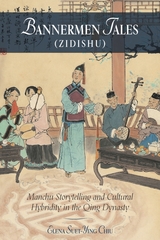 Bannermen Tales (Zidishu): Manchu Storytelling and Cultural Hybridity in the Qing Dynasty
Elena Suet-Ying Chiu
Harvard University Press, 2018 Bannermen Tales is the first book in English to offer a comprehensive study of zidishu (bannermen tales)—a popular storytelling genre created by the Manchus in early eighteenth-century Beijing. Contextualizing zidishu in Qing dynasty Beijing, this book examines both bilingual (Manchu-Chinese) and pure Chinese texts, recalls performance venues and features, and discusses their circulation and reception into the early twentieth century.
To go beyond readily available texts, author Elena Chiu engaged in intensive fieldwork and archival research, examining approximately four hundred hand-copied and printed zidishu texts housed in libraries in Mainland China, Taiwan, Germany, and Japan. Guided by theories of minority literature, cultural studies, and intertextuality, Chiu explores both the Han and Manchu cultures in the Qing dynasty through bannermen tales, and argues that they exemplified elements of Manchu cultural hybridization in the eighteenth and nineteenth centuries while simultaneously attempting to validate and perpetuate the superiority of Manchu identity.
With its original translations, musical score, and numerous illustrations of hand-copied and printed zidishu texts, this study opens a new window into Qing literature and provides a broader basis for evaluating the process of cultural hybridization.
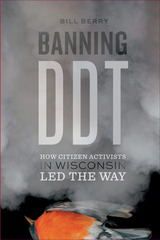 Banning DDT: How Citizen Activists in Wisconsin Led the Way
Bill Berry
Wisconsin Historical Society Press, 2014 On a December day in 1968, DDT went on trial in Madison, Wisconsin. In Banning DDT: How Citizen Activists in Wisconsin Led the Way, Bill Berry details how the citizens, scientists, reporters, and traditional conservationists drew attention to the harmful effects of “the miracle pesticide” DDT, which was being used to control Dutch elm disease. Berry tells of the hunters and fishers, bird-watchers, and garden-club ladies like Lorrie Otto, who dropped off twenty-eight dead robins at the Bayside village offices. He tells of university professors and scientists like Joseph Hickey, a professor and researcher in the Department of Wildlife Management in at the University of Wisconsin–Madison, who, years after the fact, wept about the suppression of some of his early DDT research. And he tells of activists like Senator Gaylord Nelson and members of the state’s Citizens Natural Resources who rallied the cause. The Madison trial was one of the first for the Environmental Defense Fund. The National Audubon Society helped secure the more than $52,000 in donations that offset the environmentalists’ costs associated with the hearing. Today, virtually every reference to the history of DDT mentions the impact of Wisconsin’s battles. The six-month-long DDT hearing was one of the first chapters in citizen activism in the modern environmental era. Banning DDT is a compelling story of how citizen activism, science, and law merged in Wisconsin’s DDT battles to forge a new way to accomplish public policy. These citizen activists were motivated by the belief that we all deserve a voice on the health of the land and water that sustain us.
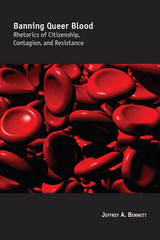 Banning Queer Blood: Rhetorics of Citizenship, Contagion, and Resistance
Jeffrey A. Bennett
University of Alabama Press, 2009 Frames blood donation as a performance of civic identity closely linked to the meaning of citizenship
In Banning Queer Blood, Jeffrey Bennett frames blood donation as a performance of civic identity closely linked to the meaning of citizenship. However, with the advent of HIV came the notion of blood donation as a potentially dangerous process. Bennett argues that the Food and Drug Administration, by employing images that specifically depict gay men as contagious, has categorized gay men as a menace to the nation. The FDA's ban on blood donation by gay men served to propagate the social misconceptions about gay men that continue to circulate within both the straight and LGBT/Queer communities.
Bennett explores the role of scientific research cited by these banned-blood policies and its disquieting relationship to government agencies, including the FDA. Bennett draws parallels between the FDA's position on homosexuality and the historical precedents of discrimination by government agencies against racial minorities. The author concludes by describing the resistance posed by queer donors, who either lie in order to donate blood or protest discrimination at donation sites, and by calling for these prejudiced policies to be abolished.
Banquet at Delmonico's: The Gilded Age and the Triumph of Evolution in America
Barry Werth
University of Chicago Press, 2011 In Banquet at Delmonico’s, Barry Werth draws readers inside the circle of intellectuals, scientists, politicians, businessmen, and clergymen who brought Charles Darwin’s controversial ideas to post-Civil-War America. Each chapter is dedicated to a crucial intellectual encounter, culminating with an exclusive farewell dinner held in English philosopher Herbert Spencer’s honor at the venerable New York restaurant Delmonico’s in 1882. In this thought-provoking and nuanced account, Werth firmly situates social Darwinism in the context of the Gilded Age. Banquet at Delmonico’s is social history at its finest.
The Banquet: Dining in the Great Courts of Late Renaissance Europe
Ken Albala
University of Illinois Press, 2017 The importance of the banquet in the late Renaissance is impossible to overlook. Banquets showcased a host’s wealth and power, provided an occasion for nobles from distant places to gather together, and even served as a form of political propaganda. But what was it really like to cater to the tastes and habits of high society at the banquets of nobles, royalty, and popes? What did they eat and how did they eat it? In The Banquet, Ken Albala covers the transitional period between the heavily spiced and colored cuisine of the Middle Ages and classical French haute cuisine. This development involved increasing use of dairy products, a move toward lighter meats such as veal and chicken, increasing identification of national food customs, more sweetness and aromatics, and a refined aesthetic sense, surprisingly in line with the late-Renaissance styles found in other arts.
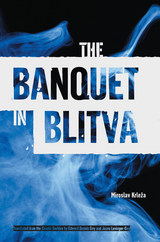 The Banquet in Blitva
Miroslav Krleza
Northwestern University Press, 2004 Colonel Kristian Barutanski, overlord of the mythical Baltic nation of Blitva, has freed his country from foreign oppression and now governs with an iron fist. He is opposed by Niels Nielsen, a melancholy intellectual who hurls invective at the dictator and the hypocrisy and moral bankruptcy of society. Barutanski himself despises the sycophants beneath him and recognizes in Nielsen a genuine foe; but Nielsen, haunted by his own lapses of conscience, struggles to escape both the regime and the role of opposition leader that is thrust upon him.
Miroslav Krleza is considered one of the most important Central European authors of the twentieth century. In his career he was a poet, playwright, screenwriter, novelist, essayist, journalist, and travel writer. He also suffered condemnation as a leftist and a practitioner of modernism and his books were proscribed in the 1930s. The first two books of the trilogy The Banquet in Blitva were written in the thirties and their comments on political, psychological, artistic, and ethical issues earned him the enmity of Yugoslavia's increasingly fascist government. He did not write and publish the third book in the trilogy until 1962.
Bantu Applicative Constructions
Sara Pacchiarotti
CSLI, 2019 This book addresses various shortcomings in definitions of “applicative” when compared to what is actually found across languages and proposes a four-way distinction among applicative constructions, especially relevant to Bantu, a large family of languages spoken in Sub-Saharan Africa.
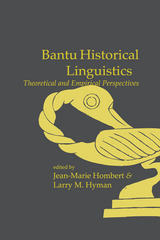 Bantu Historical Linguistics: Theoretical and Empirical Perspectives
Edited by Jean-Marie Hombert and Larry M. Hyman
CSLI, 1999 This collection brings together most of the world's leading Bantuists, as well as some of the most promising younger scholars interested in the history, comparison, and description of Bantu languages. The Bantu languages, numbering as many as 500, have been at the center of cutting-edge theoretical research in phonology, morphology, syntax and semantics. Besides the issues of classification and internal sub-grouping, this volume treats historical and comparative aspects of many of the significant typological features for which this language group is known: vowel height harmony, noun classes, elaborate tense-aspect systems, etc. The result is a compilation that provides the most up-to-date understanding of these and other issues that will be of interest not only to Bantuists and historical linguists, but also to those interested in the phonological, morphological and semantic issues arising within these highly agglutinative Bantu languages.
 The Banyamulenge Soldier: Genocide between Congo and Rwanda
Christopher P. Davey
University of Michigan Press, 2025 The Banyamulenge Soldier offers a critical analysis of combatant experiences from within the Rwandan Patriotic Front (RPF) and subsequent armed groups through the interpretation of Banyamulenge soldier narratives. Banyamulenge young men joined the RPF and acted as foot soldiers in the RPF’s fight against the genocidaire in 1994 and later conflicts, becoming active agents of conflict in the region up to the present. In examining the highly political discourse and stories around the Rwandan conflict and Congo wars, this book examines RPF memory, the evolution of its uses of violence, and how these memories have shaped Banyamulenge combatants.
Challenging the preconceived perpetrator and victim categories with a forward-thinking approach using the concept of genocide narrative identity—meaning a narrative identity shaped by experiences of social destruction or uses of genocide as a concept—Christopher P. Davey reveals how the stories we tell about ourselves shapes who we are. He shows that Banyamulenge experiences of genocide between Congo and Rwanda are layered around agencies of victimhood and perpetration of genocide. Using soldier and other community narratives, Davey examines the subjective nature of genocide in perception of an event, strategic deployment of the label, and in the (re)shaping of social worlds inhabited by this community and therefore impacting others in Congo and Rwanda. The Banyamulenge Soldier offers an insider view of the historical dynamics of current conflicts in South Kivu while adding to our understanding of relational genocide theory.
Baobab - Africa's Upside-Down Tree
G. E. Wickens
Royal Botanic Gardens, Kew, 1982 An attempt to pull together what is known about that extraordinary tree, the African baobab (Adansonia digitat L. - Bombaceae). Illustrated with 5 half-tone plates, 3 maps and a diagnostic line drawing.
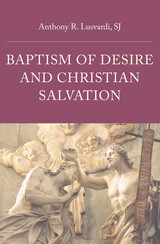 Baptism of Salvation and Christian Salvation
Anthony R. Lusvardi
Catholic University of America Press, 2024 Belief in the necessity of baptism for salvation is rooted in the New Testament and was forcefully affirmed by the Church Fathers, yet today this belief is treated with unease if not ignored altogether. Over the course of centuries, Catholic theology has wrestled with a doctrine—baptism of desire—that both preserves this fundamental principle and allows for salvation in hard cases, such as catechumens dying unexpectedly. Baptism of Desire and Christian Salvation traces this doctrine’s varied history, from its genesis in a fourth century funeral oration given by Ambrose of Milan to its uneasy position in the Anonymous Christianity of Karl Rahner.
More than a history, however, this book raises questions about the nature of religious ritual and the sacraments, the mission of the Church, and the essence of salvation. Arguing that theologians of the past two centuries have tended to downplay the role of the sacraments when discussing salvation, Lusvardi suggests that baptism should remain our theological starting point. Engaging with the theological tradition and at times challenging the conventional wisdom, Baptism of Desire and Christian Salvation shows how such a sacramental approach can offer credible—and sometimes surprising—responses to questions related to the salvation of non-Christians, the fate of unbaptized infants, and the relevance of the Church’s mission today.
 Baptist Battles: Social Change and Religious Conflict in the Southern Baptist Convention
Nancy Tatom Ammerman
Rutgers University Press, 1990 Since 1979 Southern Baptists have been noisily struggling to agree on symbols, beliefs, and practices as they attempt to make sense of their changing social world. Nancy Ammerman has carefully documented their struggle. She tells the story of the Baptist reversal from a moderate to a fundamentalist outlook and speculates on the future of the denomination. Ammerman places change among the Southern Baptists in the context of the cultural and economic changes that have transformed the South from its rural past into an urbanizing, culturally diverse region. Not only did the South change; Southern Baptists did as well. Reflecting this diversity, the Southern Baptist bureaucracy was relatively progressive. During the 1960s and 1970s, moderate sentiments prevailed, while fundamentalists remained on the margins. These two were, however, becoming increasingly divergent in what they considered important about being a Baptist, in their views about the Bible, in their attitudes on the origination of women, on Christian morals, and on national politics. Late in the 1970s, a fundamentalist coalition emerged, followed by unsuccessful efforts by moderates to oppose it. The battles escalated until 1985, when 45,000 Baptists gathered in Dallas to decide between contending presidential candidates. That dramatic event illustrated the extent to which organized political resources were determining the course of the conflict. Ammerman studies these strategies and resources as well. Examining how this tension affected Baptists, Ammerman begins with case studies of the change it is producing in Baptist agencies. But she also brings us back to the local churches and individual believers who are renegotiating their relationships within their denomination. She asks whether the denomination’s polity can accommodate an increasingly diverse group of Baptists, of whether the only way dissidents can have a voice is through schism.
 Bar Yarns and Manic-Depressive Mixtapes: Jim Walsh on Music from Minneapolis to the Outer Limits
Jim Walsh
University of Minnesota Press, 2016 Bar Yarns and Manic Depressive Mix Tapes distills thirty delirious, jam-packed years of some of the best music writing ever to come out of the Twin Cities. As a writer and musician, the ever-curious Jim Walsh has lived a life immersed in music, and it all makes its way into his columns and feature articles, interviews and reviews, including personal essays on life, love, music, family, death, and, yes, the manic-depressive highs and lows that come with being an obsessive music lover and listener. From Minneapolis’s own Prince to such far-flung acts as David Bowie, the Waterboys, Lucinda Williams, Parliament-Funkadelic, L7, the Rolling Stones, the Ramones, U2, Hank Williams, Britney Spears, Elvis Presley and Nirvana, Walsh’s work treats us to a chorus of the voices and sounds that have made the music scene over the past three decades. The big names are here, from Rosanne Cash to Bruce Springsteen to Bob Marley and Jackson Browne, but so are those a little shy of superstardom, like the Tin Star Sisters and Uncle Tupelo, Son Volt, the Gear Daddies, Semisonic, and The Belfast Cowboys. The book is also a tour (de force) of the Twin Cities' most celebrated music venues past and present, from the Prom Ballroom to Paisley Park to Duffy's. When Walsh isn't celebrating the sheer magic of live music or dreaming to tunes blasting from the car console, he might be surveying the scene with the Hamm's Bear at Grumpy's or the Double Deuce or singing the last night at the Uptown Bar blues. Whether he's dishing dirt with Yoko Ono or digging the Replacements' roots, giving an old rocker a spin or offering a mic to the latest upstart, Jim Walsh reminds us that in the land of a thousand lakes there are a thousand dances, and the music never dies. Capturing the pure notes and character of the sound of the Twin Cities and beyond, with a keen eye for trends and the telling detail, his book truly is a mix tape of thirty years of unforgettable music.
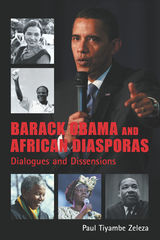 Barack Obama and African Diasporas: Dialogues and Dissensions
Paul Tiyambe Zeleza
Ohio University Press, 2009 An active blogger on The Zeleza Post, from which these essays are drawn, Paul Tiyambe Zeleza provides a genuinely critical engagement with Africa’s multiple worlds. With a blend of erudition and lively style, Zeleza writes about the role of Africa and Africans in the world and the interaction of the world with Africa.
In the title essay, Zeleza analyzes the significance of the election of a member of the African diaspora to the presidency of the United States. He also addresses Africa’s urgent political concerns: China’s role in Africa, South Africa's difficulties in making the transition to a postapartheid society, the agony of Zimbabwe, and a discussion of Pan-Africanism, its history and contemporary challenges. Other posts introduce the reader to the rhythms of daily life, including football and other leisure activities, in capturing the different aspects of Africa.
An original and respected voice, Zeleza engages the reader in a series of passionate public conversations on issues and events of utmost importance to the globalized world. He deserves a wide readership.
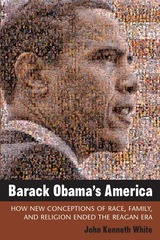 Barack Obama's America: How New Conceptions of Race, Family, and Religion Ended the Reagan Era
John Kenneth White
University of Michigan Press, 2009 "White's Barack Obama's America eloquently captures both the important nuances of the current political scene and its long-term consequences."
---Richard Wirthlin, former pollster for Ronald Reagan "This delightfully written and accessible book is the best available account of the changes in culture, society, and politics that have given us Barack Obama's America."
---Stan Greenberg, pollster for Bill Clinton and Chairman and CEO of Greenberg Quinlan Rosner Research "From one of the nation's foremost experts on how values shape our politics, a clear and compelling account of the dramatic shifts in social attitudes that are transforming American political culture. White's masterful blend of narrative and data illuminates the arc of electoral history from Reagan to Obama, making a powerful case for why we are entering a new progressive political era."
---Matthew R. Kerbel, Professor of Political Science, Villanova University, and author of Netroots "John Kenneth White is bold. He asks the big questions . . . Who are we? What do we claim to believe? How do we actually live? What are our politics? John Kenneth White writes compellingly about religion and the role it played in making Barack Obama president. White's keen insight into America's many faiths clarifies why Barack Obama succeeded against all odds. It is a fascinating description of religion and politics in twenty-first-century America---a must-read."
---Kathleen Kennedy Townsend, former Lieutenant Governor of Maryland and author of Failing America's Faithful "In Barack Obama's America, John Kenneth White has written the political equivalent of Baedeker or Michelin, the definitive guide to and through the new, uncharted political landscape of our world. White captures and explains what America means---and what it means to be an American---in the twenty-first century."
---Mark Shields, nationally syndicated columnist and political commentator for PBS NewsHour "John White has always caught important trends in American politics that others missed. With his shrewd analysis of why Barack Obama won, he's done it again."
---E. J. Dionne, Jr., Senior Fellow, Brookings Institution, and University Professor in the Foundations of Democracy and Culture at Georgetown University The election of Barack Obama to the presidency marks a conclusive end to the Reagan era, writes John Kenneth White in Barack Obama's America. Reagan symbolized a 1950s and 1960s America, largely white and suburban, with married couples and kids at home, who attended church more often than not. Obama's election marks a new era, the author writes. Whites will be a minority by 2042. Marriage is at an all-time low. Cohabitation has increased from a half-million couples in 1960 to more than 5 million in 2000 to even more this year. Gay marriages and civil unions are redefining what it means to be a family. And organized religions are suffering, even as Americans continue to think of themselves as a religious people. Obama's inauguration was a defining moment in the political destiny of this country, based largely on demographic shifts, as described in Barack Obama's America. John Kenneth White is Professor of Politics at the Catholic University of America in Washington, D.C. Cover image: "Out of many, we are one: Dare to Hope: Faces from 2008 Obama Rallies" by Anne C. Savage, view and buy full image at http://revolutionaryviews.com/obama_poster.html.
 Barbara Bush: A Biography for Beginning Historians
Louann Atkins Temple
University of Texas Press, 2025 A brief biography of Barbara Bush for young readers. Louann Temple is a lifelong Texan with a personal passion for arts and education who believes that biography, with its emphasis on personalities, is ideal for introducing young people to history, with its focus on events. Temple is uniquely situated to write this biography for young readers, as she has been personally acquainted with many important people in presidential history, First Lady Barbara Bush included, and she has mentored countless middle and high school students, preparing them for college admission. Barbara Bush highlights the key events in the life of the First Lady; explores the life lessons afforded by her legacy; and reflects on the broad historical issues during her time in the White House from 1989 to 1993. Married to the forty-first president, George H. W. Bush, Barbara Bush spent her time as First Lady dedicated to charity work and helping the American people, notably supporting Americans during the AIDS crisis. Enhanced with a carefully curated selection of black and white photographs from three presidential libraries, this biography for beginning historians is poised to bring the best of biography and history to a new generation of readers.
Barbara F. Vucanovich: From Nevada to Congress, and Back Again
Barbara F. Vucanovich
University of Nevada Press, 2014 Barbara Vucanovich was sixty-two when she ran in her first election, becoming the first woman ever elected to a federal office from Nevada. In this engaging memoir, written with her daughter, she reflects on the road that led her to Washington--her years as mother, businesswoman, and volunteer.
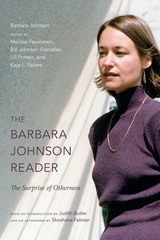 The Barbara Johnson Reader: The Surprise of Otherness
Barbara Johnson
Duke University Press, 2014 This Reader collects in a single volume some of the most influential essays written by Barbara Johnson over the course of her thirty-year career as a pioneering literary theorist and cultural critic. Johnson achieved renown early in her career, both as a brilliant student of the Yale School of literary criticism and as the translator of Jacques Derrida's Dissemination. She went on to lead the way in extending the insights of structuralism and poststructuralism into newly emerging fields now central to literary studies, fields such as gender studies, African American studies, queer theory, and law and literature. Stunning models of critical reading and writing, her essays cultivate rigorous questioning of universalizing assumptions, respect for otherness and difference, and an appreciation of ambiguity.
Along with the classic essays that established her place in literary scholarship, this Reader makes available a selection of Johnson's later essays, brilliantly lucid and politically trenchant works exploring multilingualism and translation, materiality, ethics, subjectivity, and sexuality. The Barbara Johnson Reader offers a historical guide through the metamorphoses and tumultuous debates that have defined literary study in recent decades, as viewed by one of critical theory's most astute thinkers.
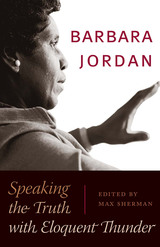 Barbara Jordan: Speaking the Truth with Eloquent Thunder
Edited by Max Sherman
University of Texas Press, 2007 Revered by Americans across the political spectrum, Barbara Jordan was "the most outspoken moral voice of the American political system," in the words of former President Bill Clinton, who awarded her the Presidential Medal of Freedom in 1994. Throughout her career as a Texas senator, U.S. congresswoman, and distinguished professor at the Lyndon B. Johnson School of Public Affairs, Barbara Jordan lived by a simple creed: "Ethical behavior means being honest, telling the truth, and doing what you said you were going to do." Her strong stand for ethics in government, civil liberties, and democratic values still provides a standard around which the nation can unite in the twenty-first century. This volume brings together several major political speeches that articulate Barbara Jordan's most deeply held values. They include: - "Erosion of Civil Liberties," a commencement address delivered at Howard University on May 12, 1974, in which Jordan warned that "tyranny in America is possible"
- "The Constitutional Basis for Impeachment," Jordan's ringing defense of the U.S. Constitution before the House Judiciary Committee investigating the Watergate break-in
- Keynote addresses to the Democratic National Conventions of 1976 and 1992, in which Jordan set forth her vision of the Democratic Party as an advocate for the common good and a catalyst of change
- Testimony in the U.S. Congress on the confirmation of Supreme Court nominee Robert Bork and on immigration reform
- Meditations on faith and politics from two National Prayer Breakfasts
- Acceptance speech for the 1995 Sylvanus Thayer Award presented by the Association of Graduates of the United States Military Academy, in which Jordan challenged the military to uphold the values of "duty, honor, country"
Accompanying the speeches are context-setting introductions by volume editor Max Sherman. The book concludes with the eloquent eulogy that Bill Moyers delivered at Barbara Jordan's memorial service in 1996, in which he summed up Jordan's remarkable life and career by saying, "Just when we despaired of finding a hero, she showed up, to give the sign of democracy.... This is no small thing. This, my friends, this is grace. And for it we are thankful."
Barbarian Spring
Jonas Lüscher
Haus Publishing, 2014 On a business trip to Tunisia, Preising, a leading Swiss industrialist, is invited to spend the week with the daughter of a local gangster. He accompanies her to the wedding of two London city traders at a desert luxury resort that was once the site of an old Berber oasis. With the wedding party in full swing and the bride riding up the aisle on a camel, no one is aware that the global financial system stands on the brink of collapse. As the wedding guests nurse their hangovers, they learn that the British pound has depreciated tenfold, and their world begins to crumble around them.
So begins Barbarian Spring, the debut novel from Jonas Lüscher, a major emerging voice in European fiction. The timely and unusual novel centers on a culture clash between high finance and the value system of the Maghreb. Provocative and entertaining, Barbarian Spring is a refreshingly original and all-too-believable satire for our times.
 The Barbaric Counter Revolution: Cause and Cure
By W. W. Rostow
University of Texas Press, 1983 In the 1980s, troubled Americans saw interest rates in the United States climb to an alltime high, unemployment grow to over 10 percent, the federal deficit reach near monumental proportions, and the world economy as a whole fall stagnant.
Why did a once booming world economy give way to stagflation? Economist W. W. Rostow finds the roots of the problem in the phenomenon he terms the Barbaric Counter-Revolution—the effort to wring inflation out of the economic system by the rigorous application of a restricted rate of increase in the money supply. This policy was launched by the Carter administration in October 1979, reinforced by President Reagan in mid 1980, and abandoned in August 1982. In the end, it provided the United States with no mechanism for rapid recovery that did not bring with it a return to high interest rates, resumed inflation, and, soon, another recession.
In what he terms a Civilized Synthesis, Rostow sets forth a series of new policies that would permit rapid, sustained growth with inflation under control. He argues that fiscal and monetary policy must be joined by an incomes policy that would gear the rate of increase of wages and salaries to the average rate of increase in productivity. He explores how this could be accomplished within the context of American politics and existing institutions. Finally, Rostow identifies four directions for investment that, together, would yield economic and social benefits.
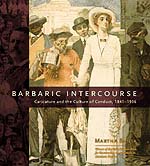 Barbaric Intercourse: Caricature and the Culture of Conduct, 1841-1936
Martha Banta
University of Chicago Press, 2003 Barbaric Intercourse tells the story of a century of social upheaval and the satiric attacks it inspired in leading periodicals in both England and America. Martha Banta explores the politics of caricature and cartoon from 1841 to 1936, devoting special attention to the original Life magazine. For Banta, Life embodied all the strengths and weaknesses of the Progressive Era, whose policies of reform sought to cope with the frenetic urbanization of New York, the racist laws of the Jim Crow South, and the rise of jingoism in the United States. Barbaric Intercourse shows how Life's take on these trends and events resulted in satires both cruel and enlightened.
Banta also deals extensively with London's Punch, a sharp critic of American nationalism, and draws from images and writings in magazines as diverse as Puck,The Crisis,Harper's Weekly, and The International Socialist Review. Orchestrating a wealth of material, including reproductions of rarely seen political cartoons, she offers a richly layered account of the cultural struggles of the age, from contests over immigration and the role of the New Negro in American society, to debates over Wall Street greed, women's suffrage, and the moral consequences of Western expansionism.
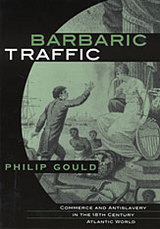 Barbaric Traffic: Commerce and Antislavery in the Eighteenth-Century Atlantic World
Philip Gould
Harvard University Press, 2003 Eighteenth-century antislavery writers attacked the slave trade as "barbaric traffic"--a practice that would corrupt the mien and manners of Anglo-American culture to its core. Less concerned with slavery than with the slave trade in and of itself, these writings expressed a moral uncertainty about the nature of commercial capitalism. This is the argument Philip Gould advances in Barbaric Traffic. A major work of cultural criticism, the book constitutes a rethinking of the fundamental agenda of antislavery writing from pre-revolutionary America to the end of the British and American slave trades in 1808.
Studying the rhetoric of various antislavery genres--from pamphlets, poetry, and novels to slave narratives and the literature of disease--Gould exposes the close relation between antislavery writings and commercial capitalism. By distinguishing between good commerce, or the importing of commodities that refined manners, and bad commerce, like the slave trade, the literature offered both a critique and an outline of acceptable forms of commercial capitalism. A challenge to the premise that objections to the slave trade were rooted in modern laissez-faire capitalism, Gould's work revises--and expands--our understanding of antislavery literature as a form of cultural criticism in its own right.
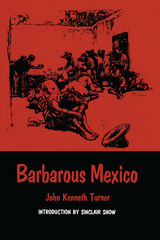 Barbarous Mexico
By John Kenneth Turner
University of Texas Press, 1969 American historians preoccupied with the stirring events of the Mexican Revolution and the years following tend to neglect the basic causes of the conflict. John Kenneth Turner—a crusading California newspaperman—presents these causes with brilliance and passion in Barbarous Mexico, his exposé of the Díaz regime. Published serially beginning in the fall of 1909, his articles received scores of favorable reviews. The Rochester Times wrote: "The abolitionists in our own ante bellum days did not formulate an indictment as repulsive as that brought against Mexico by this impassioned writer." A British periodical called Turner "an American humanitarian who deserves the thanks of civilisation." Mexican President Francisco I. Madero himself said that Barbarous Mexico contributed greatly to the success of the Revolution. Despite its fame early in the twentieth century, Barbarous Mexico was out of print for close to sixty years. The present edition, with an introductory biographical essay on Turner by Sinclair Snow and photographs of the principal characters involved, not only reemphasizes the causes of the Mexican Revolution, but provides both lay reader and scholar with a vivid and exciting account of life in Mexico under Porfirio Díaz.
 Barbarous Play: Race on the English Renaissance Stage
Lara Bovilsky
University of Minnesota Press, 2008 Like our own, early modern beliefs about race depended on metaphorical, selective, and contradictory understandings of how membership in groups is determined. Although race took distinctive forms in the past, the fallacies that underlie early modern racial experience generally are precisely-and surprisingly-the same as those in contemporary culture. Exploring the similar underpinnings of early modern and contemporary ideas of difference, Barbarous Play examines English Renaissance understandings of race as depicted in drama. Reading plays by Shakespeare, Marlowe, Webster, and Middleton, Bovilsky offers case studies of how racial meanings are generated by narratives of boundary crossing-especially miscegenation, religious conversion, class transgression, and moral and physical degeneracy. In the process, she reveals deep parallels between the period’s conceptions of race and gender. Barbarous Play contests the widely held view that race and racism depend on modern science for their existence and argues that understanding just what is false and figurative in past depictions of race, such as those found in Othello, The Merchant of Venice, The White Devil, and The Changeling, can clarify the illogic of present-day racism. Lara Bovilsky is assistant professor of English at Washington University in St. Louis.
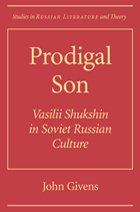 Barbarous Souls
David L. Strauss
Northwestern University Press, 2010 On December 14, 1955, Darrel Parker arrived at his Lincoln, Nebraska, home to find his wife, Nancy, strangled to death. Although their house was broken into less than a month earlier, the police were unable to find any leads, so their attention turned to Parker. To make their case, the authorities relied on a private interrogation by polygraph operator John Reid of Chicago. Reid’s company, founded in 1947, today provides interviewing and interrogation techniques that the company claims are the most widely used in the world.
Barbarous Souls tells the story of Darrel Parker’s wrongful conviction for Nancy’s murder. Lincoln native David Strauss weaves a shocking true crime story with an exposé of still-prevalent methods of interrogation—methods that often lead to false confessions and the conviction of innocent suspects. After he was convicted, Parker served thirteen years of a life sentence before agreeing to a deal that would free him but not clear his record. It was later discovered that a murderer who died in prison in 1988 had taped a confession to the crime.
A roller-coaster ride in the tradition of John Grisham’s The Innocent Man, Barbarous Souls is a thorough examination of a wrongful conviction based on a false confession, and an illuminating portrayal of a widespread phenomenon that still plagues the justice system.
The Barbary Figs
Rashid Boudjedra
Haus Publishing, 2013 Two old friends find themselves side by side on the flight from Algiers to Constantine. Though bound by shared experiences from their youth, they have lived very different lives. The flight will last an hour, during which both their stories will be told, peppered by anecdotes about Algeria's struggle to release itself from the French colonial grip.
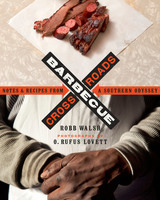 Barbecue Crossroads: Notes and Recipes from a Southern Odyssey
By Robb Walsh
University of Texas Press, 2013 In stories, recipes, and photographs, James Beard Award–winning writer Robb Walsh and acclaimed documentary photographer O. Rufus Lovett take us on a barbecue odyssey from East Texas to the Carolinas and back. In Barbecue Crossroads, we meet the pitmasters who still use old-fashioned wood-fired pits, and we sample some of their succulent pork shoulders, whole hogs, savory beef, sausage, mutton, and even some barbecued baloney. Recipes for these and the side dishes, sauces, and desserts that come with them are painstakingly recorded and tested. But Barbecue Crossroads is more than a cookbook; it is a trip back to the roots of our oldest artisan food tradition and a look at how Southern culture is changing. Walsh and Lovett trace the lineage of Southern barbecue backwards through time as they travel across a part of the country where slow-cooked meat has long been part of everyday life. What they find is not one story, but many. They visit legendary joints that don’t live up to their reputations—and discover unknown places that deserve more attention. They tell us why the corporatizing of agriculture is making it difficult for pitmasters to afford hickory wood or find whole hogs that fit on a pit. Walsh and Lovett also remind us of myriad ways that race weaves in and out of the barbecue story, from African American cooking techniques and recipes to the tastes of migrant farmworkers who ate their barbecue in meat markets, gas stations, and convenience stores because they weren’t welcome in restaurants. The authors also expose the ways that barbecue competitions and TV shows are undermining traditional barbecue culture. And they predict that the revival of the community barbecue tradition may well be its salvation.
Barbecue: The History of an American Institution
Robert F. Moss
University of Alabama Press, 2010 The history of barbecue in the United States has until now remained virtually untold. Barbecue has a long, rich history—a history that could be found only through scattered references in old letters, journals, newspapers, diaries, and travel narratives until this book was written.
 Barbecue: The History of an American Institution, Revised and Expanded Second Edition
Robert F. Moss
University of Alabama Press, 2020 The definitive history of an iconic American food, with new chapters, sidebars, and updated historical accounts Expert Robert F. Moss researched hundreds of sources—newspapers, letters, journals, diaries, and travel narratives—to document the origins and evolution of barbecue from its origins among Native Americans to its present status as an icon of American culture. In this definitive guide, he maps out the development of the rich array of regional barbecue styles, chronicles the rise of barbecue restaurants, and profiles the famed pitmasters who made the tradition what it is today. Barbecue is the story not just of a dish but also of a social institution that helped shape many regional cultures of the United States. The history begins with British colonists’ adoption of barbecuing techniques from Native Americans in the 17th and 18th centuries, moves to barbecue’s establishment as the preeminent form of public celebration in the 19th century, and is carried through to barbecue’s ubiquitous standing today. From the very beginning, barbecues were powerful social magnets, drawing together people from a wide range of classes and geographic backgrounds. Barbecue played a key role in three centuries of American history, both reflecting and influencing the direction of an evolving society. By tracing the story of barbecue from its origins to today, Barbecue: The History of an American Institution traces the very thread of American social history. Moss has made significant updates in this new edition, offering a wealth of new historical research, sources, illustrations, and anecdotes.
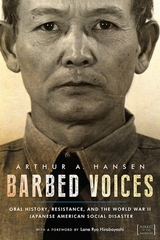 Barbed Voices: Oral History, Resistance, and the World War II Japanese American Social Disaster
Arthur A. Hansen
University Press of Colorado, 2021 Barbed Voices is an engaging anthology of the most significant published articles written by the well-known and highly respected historian of Japanese American history Arthur Hansen, updated and annotated for contemporary context. Featuring selected inmates and camp groups who spearheaded resistance movements in the ten War Relocation Authority–administered compounds in the United States during World War II, Hansen’s writing provides a basis for understanding why, when, where, and how some of the 120,000 incarcerated Japanese Americans opposed the threats to themselves, their families, their reference groups, and their racial-ethnic community.
What historically was benignly termed the “Japanese American Evacuation” was in fact a social disaster, which, unlike a natural disaster, is man-made. Examining the emotional implications of targeted systemic incarceration, Hansen highlights the psychological traumas that transformed Japanese American identity and culture for generations after the war. While many accounts of Japanese American incarceration rely heavily on government documents and analytic texts, Hansen’s focus on first-person Nikkei testimonies gathered through powerful oral history interviews gives expression to the resistance to this social disaster.
Analyzing the evolving historical memory of the effects of wartime incarceration, Barbed Voices presents a new scholarly framework of enduring value. It will be of interest to students and scholars of oral history, US history, public history, and ethnic studies as well as the general public interested in the WWII experience and civil rights.
 Barbie's Queer Accessories
Erica Rand
Duke University Press, 1995 She’s skinny, white, and blond. She’s Barbie—an icon of femininity to generations of American girls. She’s also multiethnic and straight—or so says Mattel, Barbie’s manufacturer. But, as Barbie’s Queer Accessories demonstrates, many girls do things with Barbie never seen in any commercial. Erica Rand looks at the corporate marketing strategies used to create Barbie’s versatile (She’s a rapper! She’s an astronaut! She’s a bride!) but nonetheless premolded and still predominantly white image. Rand weighs the values Mattel seeks to embody in Barbie—evident, for example, in her improbably thin waist and her heterosexual partner—against the naked, dyked out, transgendered, and trashed versions favored by many juvenile owners and adult collectors of the doll.
Rand begins by focusing on the production and marketing of Barbie, starting in 1959, including Mattel’s numerous tie-ins and spin-offs. These variations, which include the much-promoted multiethnic Barbies and the controversial Earring Magic Ken, helped make the doll one of the most profitable toys on the market. In lively chapters based on extensive interviews, the author discusses adult testimony from both Barbie "survivors" and enthusiasts and explores how memories of the doll fit into women’s lives. Finally, Rand looks at cultural reappropriations of Barbie by artists, collectors, and especially lesbians and gay men, and considers resistance to Barbie as a form of social and political activism.
Illustrated with photographs of various interpretations and alterations of Barbie, this book encompasses both Barbie glorification and abjection as it testifies to the irrefutably compelling qualities of this bestselling toy. Anyone who has played with Barbie—or, more importantly, thought or worried about playing with Barbie—will find this book fascinating.
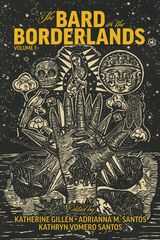 The Bard in the Borderlands: An Anthology of Shakespeare Appropriations en La Frontera, Volume 1
Edited by Katherine Gillen, Adrianna M. Santos, and Kathryn Vomero Santos
Arizona Center for Medieval and Renaissance Studies, 2023 This volume features a wide range of plays that reimagine Shakespeare works from Borderlands perspectives.
For several decades, Chicanx and Indigenous theatermakers have been repurposing Shakespeare’s plays to reflect the histories and lived realities of the US–Mexico Borderlands and to create space to tell stories of and for La Frontera. Celebrating this rich tradition, The Bard in the Borderlands: An Anthology of Shakespeare Appropriations en La Frontera brings a wide range of Borderlands Shakespeare plays together for the first time in a multi-volume open-access scholarly edition.
This anthology celebrates the dynamic, multilingual reworking of canon and place that defines Borderlands Shakespeare, and it situates these geographically and temporally diverse plays within the robust study of Shakespeare’s global afterlives. The editors offer a critical framework for understanding the artistic and political traditions that shape these plays and the place of Shakespeare within the multilayered colonial histories of the region. Borderlands Shakespeare plays, they contend, do not simply reproduce Shakespeare in new contexts but rather use his work in innovative ways to negotiate colonial power and to envision socially just futures.
 The Bard in the Borderlands: An Anthology of Shakespeare Appropriations en La Frontera, Volume 2
Edited by Katherine Gillen, Adrianna M. Santos, and Kathryn Vomero Santos
Arizona Center for Medieval and Renaissance Studies, 2024 An anthology that reimagines Shakespeare’s works from the perspective of the United States–Mexico Borderlands.
For decades, Chicanx and Indigenous theater-makers have worked to repurpose the plays of William Shakespeare to reflect the histories and lived realities of the United States–Mexico Borderlands, or La Frontera. Celebrating this rich tradition, The Bard in the Borderlands brings a wide range of Borderlands Shakespeare plays together for the first time in a multi-volume, open-access scholarly edition, creating space to tell stories of and for this complex and important region.
This second volume continues to celebrate the dynamic, multilingual reworking of canon and place that defines Borderlands Shakespeare, situating geographically and temporally diverse plays within the robust study of Shakespeare’s global afterlives.
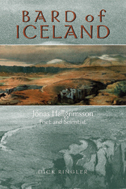 Bard of Iceland: Jonas Hallgrimsson, Poet and Scientist
Richard Ringler
University of Wisconsin Press, 2002 Bard of Iceland makes available for the first time in any language other than Icelandic an extensive selection of works by Jónas Hallgrímsson (1807–1845), the most important poet of modern Iceland. Jónas was also Iceland’s first professionally trained geologist and an active contributor in a number of other scientific fields: geography, botany, zoology, and archaeology. He played a key role as well in Iceland’s struggle to gain independence from Denmark. "Descriptive power and fullness of spirit were the hallmarks of his soul," wrote a contemporary admirer.
Dick Ringler, one of the premier scholars of Icelandic literature in the world, offers a substantial biography of Jónas, a representative selection of his most important poems, and some of his prose work in science and belles lettres. Ringler also provides extended commentaries and an essay on Icelandic prosody.
The poems are translated into English equivalents of their original complex meters in Icelandic and Danish. As a poet Jónas was intimately familiar with his nation’s medieval literary inheritance—the sagas and eddas—and also with the groundbreaking work of contemporary German and Danish Romanticism (Chamisso, Heine, Oehlenschläger). A master of poetic form, Jónas not only exploited and enlarged the possibilities of traditional eddic and skaldic meters, but introduced the sonnet, triolet stanza, terza and ottava rima, and blank verse into the Icelandic metrical repertory.
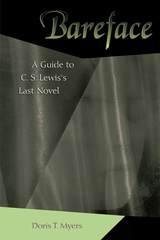 Bareface: A Guide to C.S. Lewis's Last Novel
Doris T. Myers
University of Missouri Press, 2004 C. S. Lewis wanted to name his last novel “Bareface.” Now Doris T. Myers’s Bareface provides a welcome study of Lewis’s last, most profound, and most skillfully written novel, Till We Have Faces. Although many claim it is his best novel, Till We Have Faces is a radical departure from the fantasy genre of Lewis’s Chronicles of Narnia and The Screwtape Letters and has been less popular than Lewis’s earlier works. In Bareface, Myers supplies background information on this difficult work and suggests reading techniques designed to make it more accessible to general readers. She also presents a fresh approach to Lewis criticism for the enjoyment of specialists. Previous studies have often treated the novel as mere myth, ignoring Lewis’s effort to present the story of Cupid and Psyche as something that could have happened. Myers emphasizes the historical background, the grounding of the characterizations in modern psychology, and the thoroughly realistic narrative presentation. She identifies key books in ancient and medieval literature, history, and philosophy that influenced Lewis’s thinking as well as pointing out a previously unnoticed affinity with William James. From this context, a clearer understanding of Till We Have Faces can emerge. Approached in this way, the work can be seen as a realistic twentieth-century novel using modernist techniques such as the unreliable narrator and the manipulation of time. The major characters fit neatly into William James’s typology of religious experience, and Orual, the narrator-heroine, also develops the kind of personal maturity described by Carl Jung. At the same time, both setting and plot provide insights into the ancient world and pre-Christian modes of thought. Organized to facilitate browsing according to the reader’s personal interests and needs, this study helps readers explore this complex and subtle novel in their own way. Containing fresh insights that even the most experienced Lewis scholar will appreciate, Bareface is an accomplishment worthy of Lewis’s lifelong contemplation.
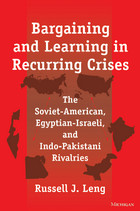 Bargaining and Learning in Recurring Crises: The Soviet-American, Egyptian-Israeli, and Indo-Pakistani Rivalries
Russell J. Leng
University of Michigan Press, 2000 The rivalries between the Soviet Union and the United States, Egypt and Israel, and India and Pakistan produced twelve major crises and seven wars during the quarter-century following World War II. A disproportionate share of international crises and wars occur between long-term rivals. Why could not the leaders of these states learn to manage their disputes without severe crises or war? Russell J. Leng finds that the lessons leaders of those states drew from their experiences most often led to bargaining tactics that only increased the level of hostility and the likelihood of war in subsequent disputes.
The author uses theoretical work on learning and the role of belief systems on foreign policy-making as the basis to explore the history of each rivalry. Detailed narrative accounts of each of the crises are augmented by tables and figures describing the escalation of each crisis and the behavior of participant states. The approach allows for comparisons of behavior and learning across the three rivalries, as well as a consideration of the influence that the Soviet-American rivalry exerted on the Middle East and South Asian rivalries. The concluding chapter illustrates how the influence of realpolitik beliefs on learning across the three rivalries predisposed policymakers to draw lessons from their crisis experience that weakened conflict management in subsequent crises. The author also shows how superpower mediation in Middle East and South Asian crises and wars had the perverse effect of encouraging greater risk-taking by the participant states in subsequent crises.
The book will be of particular interest to political scientists and historians who study international relations, as well as those interested in decision-making and learning by policymakers.
Russell J. Leng is Professor of Political Science, Middlebury College, and the author of Interstate Crisis Behavior 1816-1980: Realism versus Reciprocity and numerous articles.
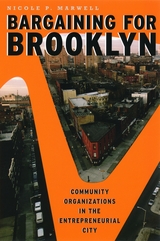 Bargaining for Brooklyn: Community Organizations in the Entrepreneurial City
Nicole P. Marwell
University of Chicago Press, 2007 When middle-class residents fled American cities in the 1960s and 1970s, government services and investment capital left too. Countless urban neighborhoods thus entered phases of precipitous decline, prompting the creation of community-based organizations that sought to bring direly needed resources back to the inner city. Today there are tens of thousands of these CBOs—private nonprofit groups that work diligently within tight budgets to give assistance and opportunity to our most vulnerable citizens by providing services such as housing, child care, and legal aid.
Through ethnographic fieldwork at eight CBOs in the Brooklyn neighborhoods of Williamsburg and Bushwick, Nicole P. Marwell discovered that the complex and contentious relationships these groups form with larger economic and political institutions outside the neighborhood have a huge and unexamined impact on the lives of the poor. Most studies of urban poverty focus on individuals or families, but Bargaining for Brooklyn widens the lens, examining the organizations whose actions and decisions collectively drive urban life.
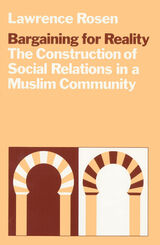 Bargaining for Reality: The Construction of Social Relations in a Muslim Community
Lawrence Rosen
University of Chicago Press, 1984 Much modern anthropology has assumed that an adequate description of any society consists of rules that inform its members' relationships and the logic that unites their cultural symbols. In this book Lawrence Rosen argues that, for the people who live in and around the Moroccan city of Sefrou, attachment to others and the terms by which they are conceived are, at their most fundamental level, subject to a constant process of negotiation.
Drawing on the philosophy of speech acts as well as interpretive theory, Rosen shows how, for the people of this Muslim community, reality consists of the network of obligations formed by individuals out of a repertoire of relational possibilities whose defining terms are comprised by a set of essentially negotiable concepts. He thus demonstrates that the bonds of family, tribe, and political alliance take shape only as the bargains struck in and through the malleable terms that describe them take shape; that statements about relationship are no more true than a price mentioned in the marketplace until properly validated; that the relations between men and women, Arabs and Berbers, Muslims and Jews test the limits of interpersonal negotiation; and that the concepts of time, character, and narrative style are consonant with a view of reality as bargained-for network of obligations.
Bargaining for Reality makes an important contribution to our understanding of contemporary Middle Eastern society and to the development of powerful new interpretive strategies for a wide range of social theorists.
"[Rosen's] book is extremely useful for African and Middle Eastern historians, because he challenges some of our most basic ideas about the nature and force of kinship, tribe, ethnicity, and other large- and small-scale political ties."—Allan R. Meyers, International Journal of African Historical Studies
"The book conveys a compelling image of Moroccan social experience and is peppered with vivid anecdotes and case histories."—Stephen William Foster, American Anthropologist
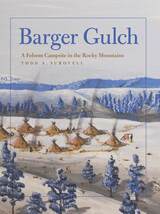 Barger Gulch: A Folsom Campsite in the Rocky Mountains
Todd A. Surovell
University of Arizona Press, 2022 At the end of the last Ice Age in a valley bottom in the Rocky Mountains, a group of bison hunters overwintered. Through the analysis of more than 75,000 pieces of chipped stone, archaeologist Todd A. Surovell is able to provide one of the most detailed looks yet at the lifeways of hunter-gatherers from 12,800 years ago.
The best archaeological sites are those that present problems and inspire research, writes Surovell. From the start, the Folsom site called Barger Gulch Locality B was one of those sites; it was a problem-rich environment. Many Folsom sites are sparse scatters of stone and bone, a reflection of a mobile lifestyle that leaves little archaeological materials. The people at Barger Gulch left behind tens of thousands of pieces of chipped stone; they appeared to have spent quite a bit of time there in comparison to other places they inhabited.
Summarizing findings from nine seasons of excavations, Surovell explains that the site represents a congregation of mobile hunter-gatherers who spent winter along Barger Gulch, a tributary of the Colorado River. Surovell uses spatial patterns in chipped stone to infer the locations of hearths and house features. He examines the organization of household interiors and discusses differential use of interior and exterior spaces. Data allow inference about the people who lived at the site, including aspects of the identity of flintknappers and household versus group mobility. The site shows evidence of a Paleoindian camp circle, child flintknapping, household production of weaponry, and the fission/fusion dynamics of group composition that is typical of nomadic peoples.
Barger Gulch provides key findings on Paleoindian technological variation and spatial and social organization.
Baring Witness: 36 Mormon Women Talk Candidly about Love, Sex, and Marriage
Edited by Holly Welker
University of Illinois Press, 2016 In Baring Witness, Holly Welker and thirty-six Mormon women write about devotion and love and luck, about the wonder of discovery, and about the journeys, both thorny and magical, to humor, grace, and contentment. They speak to a diversity of life experiences: what happens when one partner rejects Church teachings; marrying outside one's faith; the pain of divorce and widowhood; the horrors of spousal abuse; the hard journey from visions of an idealized marriage to the everyday truth; sexuality within Mormon marriage; how the pressure to find a husband shapes young women's actions and sense of self; and the ways Mormon belief and culture can influence second marriages and same-sex unions. The result is an unflinching look at the earthly realities of an institution central to Mormon life.
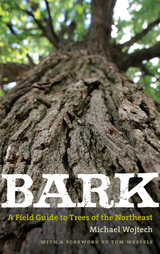 Bark: A Field Guide to Trees of the Northeast
Michael Wojtech
Brandeis University Press, 2020 What kind of tree is that? Whether you’re hiking in the woods or simply sitting in your backyard, from Maine to New York you’ll never be without an answer to that question, thanks to this handy companion to the trees of the Northeast. Featuring detailed information and illustrations covering each phase of a tree’s lifecycle, this indispensable guidebook explains how to identify trees by their bark alone—no more need to wait for leaf season. Chapters on the structure and ecology of tree bark, descriptions of bark appearance, an easy-to-use identification key, and supplemental information on non-bark characteristics—all enhanced by more than 450 photographs, illustrations, and maps—will show you how to distinguish the textures, shapes, and colors of bark to recognize various tree species, and also understand why these traits evolved. Whether you’re a professional naturalist or a parent leading a family hike, this new edition of Bark: A Field Guide to Trees of the Northeast is your essential guide to the region’s 67 native and naturalized tree species.
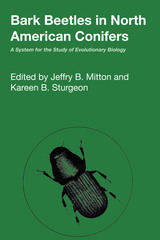 Bark Beetles in North American Conifers: A System for the Study of Evolutionary Biology
Edited by Jeffry B. Mitton and Kareen B. Sturgeon
University of Texas Press, 1982 Because they prey upon a wide variety of conifers, bark beetles have a major impact upon western forests. In most of the western states, for example, we have witnessed bark beetles in epidemic outbreaks, attacking and damaging ponderosa pine, limber pine, and other hosts. The ecosystem of bark beetle and host tree is a highly coevolved community of organisms in which the evolution of one member of the community significantly influences the evolution of the other. Largely because of the enormous economic impact these insects exert on the management of our forests, few other such communities have been studied so extensively. Bark Beetles in North American Conifers brings together in one volume both theory and a wealth of empirical data gathered by researchers from all the fields in which bark beetles are studied: ecology, evolutionary biology, population genetics, entomology, and forestry. Topics covered include the life cycle of bark beetles and their population dynamics, their genetic variation and evolutionary mechanisms, the evolution and systematics of the major groups of bark beetles, pheromone production and its implications for coevolution among these organisms, the interaction between bark beetles and their predators, host resistance and susceptibility, the relationship of parasites and symbiotic micro-organisms in general, and management and control of bark beetles based on sound ecological and evolutionary concepts. The concluding section of the book summarizes the dynamics of the coevolved system of bark beetle and host tree and discusses controversial issues for which this system may provide important answers.
 The Bark River Chronicles: Stories from a Wisconsin Watershed
Milton J. Bates
Wisconsin Historical Society Press, 2012 The Bark River valley in southeastern Wisconsin is a microcosm of the state's - indeed, of the Great Lakes region's - natural and human history. "The Bark River Chronicles" reports one couple's journey by canoe from the river's headwaters to its confluence with the Rock River and several miles farther downstream to Lake Koshkonong. Along the way, it tells the stories of Ice Age glaciation, the effigy mound builders, the Black Hawk War, early settlement and the development of waterpower sites, and recent efforts to remove old dams and mitigate the damage done by water pollution and invasive species.
Along with these big stories, the book recounts dozens of little stories associated with sites along the river. The winter ice harvest, grain milling technology, a key supreme court decision regarding toxic waste disposal, a small-town circus, a scheme to link the Great Lakes to the Mississippi River by canal, the murder of a Chicago mobster, controversies over race and social class in Waukesha County's lake country, community efforts to clean up the river and restore a marsh, visits to places associated with the work of important Wisconsin writers - these and many other stories belong to the Bark River chronicles. For the two voyageurs who paddle the length of the Bark, it is a journey of rediscovery and exploration. As they glide through marshes, woods, farmland, and cities, they acquire not only historical and environmental knowledge but also a renewed sense of the place in which they live. Maps and historical photographs help the reader share their experience.
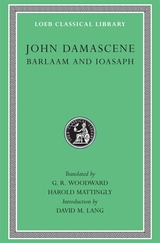 Barlaam and Ioasaph
John Damascene
Harvard University Press A princely tale inspired by Christianity and Buddhism.
One of the best known examples of the hagiographic novel, this is the tale of an Indian prince who becomes aware of the world’s miseries and is converted to Christianity by the monk Barlaam. Barlaam and Josaphat (Ioasaph) were believed to have re-converted India after her lapse from conversion to Christianity, and they were numbered among the Christian saints. Centuries ago likenesses were noticed between the life of Josaphat and the life of the Buddha; the resemblances are in incidents, doctrine, and philosophy, and Barlaam’s rules of abstinence resemble the Buddhist monk’s. But not till the mid-nineteenth century was it recognized that, in Josaphat, the Buddha had been venerated as a Christian saint for about a thousand years.
The origin of the story of Barlaam and Ioasaph—which in itself has little peculiar to Buddhism—appears to be a Manichean tract produced in Central Asia. It was welcomed by the Arabs and by the Georgians. The Greek romance of Barlaam appears separately first in the 11th century. Most of the Greek manuscripts attribute the story to John the Monk, and it is only some later scribes who identify this John with John Damascene (ca. 676–749). There is strong evidence in Latin and Georgian as well as Greek that it was the Georgian Euthymius (who died in 1028) who caused the story to be translated from Georgian into Greek, the whole being reshaped and supplemented. The Greek romance soon spread throughout Christendom, and was translated into Latin, Old Slavonic, Armenian, and Arabic. An English version (from Latin) was used by Shakespeare in his caskets scene in The Merchant of Venice.
David M. Lang’s Introduction traces parallels between the Buddhist and Christian legends, discusses the importance of Arabic versions, and notes influences of the Manichean creed.
Barley Child
Greg Rappleye
University of Arkansas Press, 2025 Barley Child, Greg Rappleye’s fifth collection, draws from family legends, whispered stories, and sworn denials across four generations of Irish American lives—recalled, imagined, and reconstructed from census records, old letters, church registries, yellowed newspaper clippings, and a few odd photographs in which the human figures are often unnamed. The sum of these affidavits, arrayed across the lyric and narrative lines of these poems, is an electrifying human choir—male and female, child and adult, Irish and American—their voices rising out of shame, poverty, absurdity, violence, a strained Catholic faith, and a virulent legacy of madness and alcoholism.
Free of nostalgia and cant, with a sharp Irish wit that often braves nearly monstrous subject matter, and reported with eyes that seldom mist over, Barley Child is a volume that once again confirms Greg Rappleye as a poet of witness.
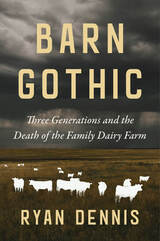 Barn Gothic: Three Generations and the Death of the Family Dairy Farm
Ryan Dennis
Island Press, 2026 When Ryan Dennis’s father was crushed by heavy machinery on their New York dairy farm, both men accepted the accident as a risk of agricultural life. But it was harder to comprehend being crushed by low milk prices, big banks, and the policies that destroyed America’s family farms.
Even though Ryan grew up watching his father and grandfather struggle to survive, he always thought he would follow in their footsteps and take over the family farm. But as he milked cows and fed calves, the world outside the barn was changing. Between 2003 and 2020, 40,000 dairy farms went out of business in the United States.
Barn Gothic is an elegy for family farmers and an intimate portrait of three generations laboring to be fathers and sons while their livelihood falls apart. Beautifully told with a farmer’s restraint and a poet’s grace, it is a story of personal loss amid corporate corruption and of finding a way forward when everything you know disappears.
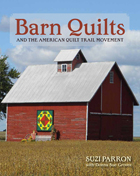 Barn Quilts and the American Quilt Trail Movement
Suzi Parron
Ohio University Press, 2012 The story of the American Quilt Trail, featuring the colorful patterns of quilt squares painted large on barns throughout North America, is the story of one of the fastest-growing grassroots public arts movements in the United States and Canada. In Barn Quilts and the American Quilt Trail Movement Suzi Parron takes us to twenty-five states as well as Canada to visit the people and places that have put this movement on America’s tourist and folk art map. Through dozens of interviews with barn quilt artists, committee members, and barn owners, Parron documents a journey that began in 2001 with the founder of the movement, Donna Sue Groves. Groves’s desire to honor her mother with a quilt square painted on their barn became a group effort that eventually grew into a county-wide project. Today, quilt squares form a long imaginary clothesline, appearing on more than three thousand barns scattered along one hundred and twenty driving trails. With more than eighty full-color photographs, Parron documents here a movement that combines rural economic development with an American folk art phenomenon.
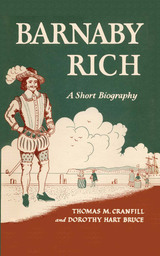 Barnaby Rich: A Short Biography
By Thomas Mabry Cranfill and Dorothy Hart Bruce
University of Texas Press, 1953 Soldier, sea captain, freebooter, courtier, writer, reformer, and informer, Barnaby Rich was a man of his time. In the service of Queen Elizabeth, Rich took part in numerous campaigns fraught with hardship and disaster in France, the Low Countries, and Ireland. After twenty years of soldiering, he wrote Riche His Farewell to Militarie Profession, which attracted the attention of the Queen herself, as well as William Shakespeare and many of the lesser among his contemporaries. "I have preferred to be rich rather than to be called so," punned the Captain ruefully on his title pages, for he was usually in want and as often in trouble. The source of both misfortunes was his disdain for dodging a fight, and much that is known of his life comes from unpublished records of legal actions in which he was involved. Rich directed his satire primarily against the sinecures of the Anglican clergy in Ireland and against the papacy. "Sworne man" of both Elizabeth and James, he protested near the end of his life that his assaults with pike and pen were but the promptings of a "true harted subjecte." Born in an age bright with stars, Rich must be considered a "minor" Elizabethan. Therein lies the novelty of this study: it treats the not-so-great, using unpublished court records to enrich our knowledge of Great Britain's grandest era. But the story of the man is not lost in the background of the period. With freshness and charm the present volume disinters Barnaby Rich from the footnote crediting him as Shakespeare's source for the plot of Twelfth Night and fleshes him forth a live Elizabethan.
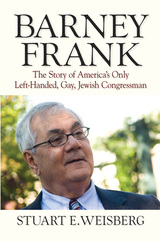 Barney Frank: The Story of America's Only Left-Handed, Gay, Jewish Congressman
Stuart Weisberg
University of Massachusetts Press, 2009 In a survey conducted by Washingtonian magazine, Barney Frank was rated the smartest, funniest, and most eloquent member of Congress. A mainstay in the House of Representatives since 1981, he has come to be known for his talent as a legislator, his zeal for verbal combat, his imposing intellect, and a quick wit that both disarms and entertains other lawmakers. Most recently, as chair of the Financial Services Committee, he was instrumental in crafting a compromise bill to stem the tide of home mortgage foreclosures, as well as the subsequent $700 billion "rescue plan."
Based on interviews with over 150 people, including more than thirty hours with Frank himself, this biography reconstructs for the first time his life and career, from his working-class childhood in Bayonne, New Jersey, to his years at Harvard and in Boston politics, through his rise to national prominence. Stuart Weisberg captures Frank in all his quirkiness, irreverence, and complexity. He also examines his less appealing side—his gruff exterior, his legendary impatience, his aversion to wasting time. Weisberg reveals the pressure Frank has felt as the most prominent openly gay politician in the United States, one whose career was nearly derailed by a highly publicized sex scandal involving a male prostitute.
Above all, this book shows Frank to be a superb legislator—a pragmatic politician who has dedicated his career to pursuing an unabashedly liberal agenda and whose depth of intellect and sense of humor have made him one of the most influential and colorful figures in Washington.
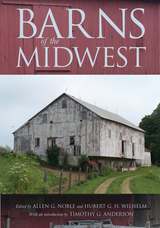 Barns of the Midwest
Allen G. Noble
Ohio University Press, 2018 Originally published in 1995, Barns of the Midwest is a masterful example of material cultural history. It arrived at a critical moment for the agricultural landscape. The 1980s were marked by farm foreclosures, rural bank failures, the continued rise of industrialized agriculture, and severe floods and droughts. These waves of disaster hastened the erosion of the idea of a pastoral Heartland knit together with small farms and rural values. And it wasn’t just an idea that was eroded; material artifacts such as the iconic Midwestern barn were also rapidly wearing away. It was against this background that editors Noble and Wilhelm gathered noted experts in history and architecture to write on the nature and meaning of Midwestern barns, explaining why certain barns were built as they were, what types of barns appeared where, and what their functions were. Featuring a new introduction by Timothy G. Anderson, Barns of the Midwest is the definitive work on this ubiquitous but little studied architectural symbol of a region and its history.
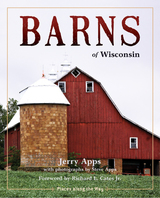 Barns of Wisconsin (Revised Edition)
Jerry Apps
Wisconsin Historical Society Press, 2010 In this new edition of his classic book, award-winning author Jerry Apps shares a unique perspective on the great barns of rural Wisconsin. Digging deep as both an enthusiast and a farmer, Apps reaps a story of change: from the earliest pioneer structures to the low steel buildings of modern dairy farms, barns have adapted to meet the needs of each generation. They’ve housed wheat, tobacco, potatoes, and dairy cows, and they display the optimism, ingenuity, hard work, and practicality of the people who tend land and livestock. Featuring more than 100 stunning full-color photographs by Steve Apps, plus dozens of historic images, Barns of Wisconsin illuminates a vanishing way of life. The book explores myriad barn designs—from rectangular to round, from gable roof to gambrel, from fieldstone to wood—always with an eye to the history and craftsmanship of the Norwegians, Germans, Swiss, Finns, and others who built and used them. Barns of Wisconsin captures both the iconic and the unique, including historic and noteworthy barns, and discusses the disappearance of barns from our landscape and preservation efforts to save these important symbols of American agriculture.
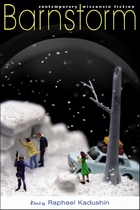 Barnstorm: Contemporary Wisconsin Fiction
Edited by Raphael Kadushin
University of Wisconsin Press, 2005 Though the best American writers live everywhere now, a popular fiction persists: our strongest literary voices are strictly bi-coastal ones. Barnstorm sets out to disprove that cliché and to undermine another one as well: the sense of regional fiction as something quaint, slightly regressive, and full of local color. The stories in this collection capture our global reality with a ruthless, unaffected voice. Lorrie Moore's "The Jewish Hunter" is a dark romance that's by turns cynical and guileless. Mack Friedman catches the smoking feel of first love in his "Setting the Lawn on Fire," and Jesse Lee Kercheval's "Brazil" is a raucous, ultimately mournful road trip. For Jane Hamilton, Wisconsin is a gorgeous but bittersweet homecoming, and for Kelly Cherry, in her achingly elegiac "As It Is in Heaven," it's the hopeful new world, juxtaposed with a bleak, tweedy England. Dwight Allen's "The Green Suit" evokes the young man edging toward adulthood, in a New York that's as flamboyant as an opera, and Tenaya Darlington, in her "A Patch of Skin," constructs a pure horror story, because the horror of loneliness is something we all know. Together Barnstorm's eclectic voices suggest that every coast now, even the Great Lakes' shores, are at the very center of our best, and truest, national literature.
Not for sale in the United Kingdom.
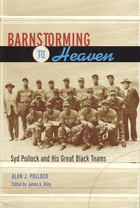 Barnstorming to Heaven: Syd Pollock and His Great Black Teams
Alan J. Pollock
University of Alabama Press, 2006 An insider history of the Indianapolis Clowns, sometimes referred to as the Harlem Globetrotters of baseball
The Indianapolis Clowns were a black touring baseball team that featured an entertaining mix of comedy, showmanship, and skill. Sometimes referred to as the Harlem Globetrotters of baseball—though many of the Globetrotters’ routines were borrowed directly from the Clowns—they captured the affection of Americans of all ethnicities and classes. Author Alan Pollock was the son of the Clowns' owner Syd Pollock, who owned a series of black barnstorming teams that crisscrossed the country from the late 1920s until the mid-1960s. They played every venue imaginable, from little league fields to Yankee Stadium, and toured the South, the Northeast, the Midwest, the Canadian Rockies, the Dakotas, the Southwest, the Far West—anywhere there was a crowd willing to shell out a few dollars for an unforgettable evening.
Alan grew up around the team and describes in vivid detail the comedy routines of Richard “King Tut” King, “Spec Bebob” Bell, Reece “Goose” Tatum; the “warpaint” and outlandish costumes worn by players in the early days; and the crowd-pleasing displays of amazing skill known as pepperball and shadowball. These men were entertainers, but they were also among the most gifted athletes of their day, making a living in sports the only way a black man could. They played to win.
More than just a baseball story, these recollections tell the story of great societal changes in America from the roaring twenties, through the years of the Great Depression and World War II, and into the Civil Rights era.
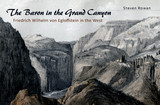 The Baron in the Grand Canyon: Friedrich Wilhelm von Egloffstein in the West
Steven Rowan
University of Missouri Press, 2012 In The Baron in the Grand Canyon, Steven Rowan presents the first comprehensive look at the life of Baron Friedrich Wilhelm von Egloffstein, mapmaker, artist, explorer, and inventor. Utilizing new German and American sources, Rowan clarifies many mysteries about the life of this major artist and cartographer of the American West. This revealing account concentrates on Egloffstein’s activity in the American mountain West from 1853 to 1858. The early chapters cover his roots as a member of an imperial baronial family in Franconia, his service in the Prussian army, his arrival in the United States in 1846, and his links to his scandalous gothic-novelist cousin, Baron Ludwig von Reizenstein. Egloffstein’s work as a cartographer in St. Louis in the 1840s led to his participation in John C. Frémont’s final expedition to the West in 1853 and 1854. He left Frémont for Salt Lake City where he joined the Gunnison Expedition under the leadership of Edward Beckwith. During this time, Egloffstein produced his most outstanding panoramas and views of the expedition, which were published in Pacific Railroad Reports. Egloffstein also served along with Heinrich Balduin Möllhusen as one of the artists and as the chief cartographer of Joseph Christmas Ives’s expedition up the Colorado River. The two large maps produced by Egloffstein for the expedition report are regarded as classics of American art and cartography in the nineteenth century. While with the Ives expedition, Egloffstein performed his revolutionary experiments in printing photographic images. He developed a procedure for working from photographs of plaster models of terrain, and that led him to invent “heliography,” a method of creating printing plates directly from photographs. He later went on to launch a company to exploit his photographic printing process, which closed after only a few years of operation.
Among the many images in this engaging narrative are photographs of the Egloffstein castle and of Egloffstein in 1865 and in his later years. Also include are illustrations that were published in the PRR, such as “View Showing the Formation of the Cañon of Grand River [today called the Gunnison River] / near the Mouth of Lake Fork with Indications of the Formidable Side Cañons” and Beckwith Map 1: “From the Valley of Green River to the Great Salt Lake.”
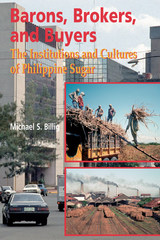 Barons, Brokers, and Buyers: The Institutions and Cultures of Philippine Sugar
Michael S. Billig
University of Hawaii Press, 2003 This innovative ethnography takes a new approach to the study of Philippine sugar. For much of the late colonial history of the Philippines, sugar was its most lucrative export, the biggest employer, and the greatest source of political influence. The so-called "Sugar Barons"--wealthy hacendero planters located mainly in Central Luzon and on the Visayan island of Negros--gained the reputation as kingmakers and became noted for their lavish lifestyles and the quasi-feudal nature of their estates. But Philippine sugar gradually declined into obsolescence; today it is regarded as a "sunset industry" that can barely satisfy domestic demand. While planters continue to think of themselves as wielding considerable power and influence, they are more often seen as vestiges of a bygone era.
Michael Billig examines sugar's decline within both the dynamic context of contemporary Philippine society and the global context of the international sugar market. His multi-sited ethnographic analysis focuses mainly on conflicts among the various elite sectors (planters, millers, traders, commercial buyers, politicians) and concludes that the most salient political, economic, and cultural trend in the Philippines today is the decline of rural, agrarian elite power and the rise of urban industrial, commercial, and financial power. His reflections on his relationships with informants in the midst of the politically charged atmosphere that surrounds the sugar industry provide a candid look at the role of the observer who, try as he might to remain impartial, finds himself swept into the vortex of policy debates and power plays.
 Barons: Money, Power, and the Corruption of America's Food Industry
Austin Frerick
Island Press, 2024 Best Books of 2024: "Frerick's prose throughout is both direct and masterfully controlled, with every point supported by extensive references and notes. This is no alarmist screed but rather a careful, systematic, and utterly damning demolition job—an exquisitely informed exposé... A genuinely revelatory look at mass food production in the United States" — Kirkus Reviews, starred
“In this eye-opening debut study, Frerick, an agricultural policy fellow at Yale University, reveals the ill-gained stranglehold that a handful of companies have on America’s food economy…It’s a disquieting critique of private monopolization of public necessities.” - Publishers Weekly, starred
Barons is the story of seven corporate titans, their rise to power, and the consequences for everyone else. Take Mike McCloskey, Chairman of Fair Oaks Farms. In a few short decades, he went from managing a modest dairy herd to running the Disneyland of agriculture, where school children ride trams through mechanized warehouses filled with tens of thousands of cows that never see the light of day. What was the key to his success? Hard work and exceptional business savvy? Maybe. But more than anything else, Mike benefitted from deregulation of the American food industry, a phenomenon that has consolidated wealth in the hands of select tycoons, and along the way, hollowed out the nation’s rural towns and local businesses.
Along with Mike McCloskey, readers will meet a secretive German family that took over the global coffee industry in less than a decade, relying on wealth traced back to the Nazis to gobble up countless independent roasters. They will discover how a small grain business transformed itself into an empire bigger than Koch Industries, with ample help from taxpayer dollars. And they will learn that in the food business, crime really does pay—especially when you can bribe and then double-cross the president of Brazil.
These, and the other stories in this book, are simply examples of the monopolies and ubiquitous corruption that today define American food. The tycoons profiled in these pages are hardly unique: many other companies have manipulated our lax laws and failed policies for their own benefit, to the detriment of our neighborhoods, livelihoods, and our democracy itself. Barons paints a stark portrait of the consequences of corporate consolidation, but it also shows we can choose a different path. A fair, healthy, and prosperous food industry is possible—if we take back power from the barons who have robbed us of it.
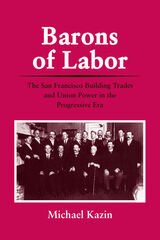 Barons of Labor: The San Francisco Building Trades and Union Power in the Progressive Era
Michael Kazin
University of Illinois Press, 1989 From the depression of the 1890s through World War I, construction tradesman held an important place in San Francisco's economic, political, and social life. Michael Kazin's award-winning study delves into how the city’s Building Trades Council (BTC) created, accumulated, used, and lost their power. He traces the rise of the BTC into a force that helped govern San Francisco, controlled its potential progress, and articulated an ideology that made sense of the changes sweeping the West and the country. Believing themselves the equals of officeholders and corporate managers, these working and retired craftsmen pursued and protected their own power while challenging conservatives and urban elites for the right to govern. What emerges is a long-overdue look at building trades as a force in labor history within the dramatic story of how the city's 25,000 building workers exercised power on the job site and within the halls of government, until the forces of reaction all but destroyed the BTC.
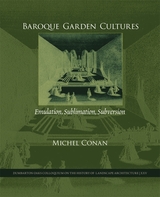 Baroque Garden Cultures: Emulation, Sublimation, Subversion
Michel Conan
Harvard University Press, 2005 Baroque Garden Cultures: Emulation, Sublimation, Subversion proposes a new approach to the study of baroque gardens, examining the social reception of gardens as a means to understand garden culture in general and exploring baroque gardens as a feature of baroque cultures in particular. In so doing, it negotiates a turning point in garden history.
Jose Antonio Maravall determined that baroque culture grew out of the social and economic crises of the seventeenth and eighteenth centuries, precipitating the establishment of the state and its concomitant engines of repression and propaganda. This absolutist state deployed the arts as a political means to dazzle society into submission to the monarch. The varying degrees of state control allowed for diverse cultural and political reception of the arts to emerge and for the possibility of anti-baroque arts to develop alongside baroque ones. This possibility invites us to understand the conditions of artistic production as a preamble to aesthetic criticism and to position garden history within the framework of social history. Such an approach explores and explains the vexing differences in baroque art and landscape architecture in different countries and at different times from the end of the sixteenth century to the present. Although primarily associated with Europe, baroque culture developed elsewhere as well.
Gardens played a prominent role in the development of the European baroque, with variations due to the different political systems and social structures in place between 1580 and 1770. These countries nevertheless entertained a dense network of cultural relationships and the reception of baroque gardens can thus be studied in an international context.
This study of gardens ranging from western and northern Europe in the seventeenth and eighteenth centuries to as far away as twelfth-century China shows how the study of audience reception can renew our understanding of the cultural role of gardens. Gardens have a life of their own and this book’s various chapters ponder how they might have been formative of culture in a way that completely escaped the intentions of their creators and designers. This volume also studies the changing reception of gardens long after they were designed, including the reception of historical gardens by contemporary tourists and art critics. Baroque Garden Cultures demonstrates that while baroque garden politics encouraged emulation and led to various forms of sublimation of its attempts at cultural control, it could not ultimately escape clever means of subversion.
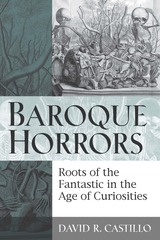 Baroque Horrors: Roots of the Fantastic in the Age of Curiosities
David R. Castillo
University of Michigan Press, 2011 "David Castillo takes us on a tour of some horrific materials that have rarely been considered together. He sheds a fantastical new light on the baroque."
---Anthony J. Cascardi, University of California Berkeley "Baroque Horrors is a textual archeologist's dream, scavenged from obscure chronicles, manuals, minor histories, and lesser-known works of major artists. Castillo finds tales of mutilation, mutation, monstrosity, murder, and mayhem, and delivers them to us with an inimitable flair for the sensational that nonetheless rejects sensationalism because it remains so grounded in historical fact."
---William Egginton, Johns Hopkins University "Baroque Horrors is a major contribution to baroque ideology, as well as an exploration of the grotesque, the horrible, the fantastic. Castillo organizes his monograph around the motif of curiosity, refuting the belief that Spain is a country incapable of organized scientific inquiry."
---David Foster, Arizona State University Baroque Horrors turns the current cultural and political conversation from the familiar narrative patterns and self-justifying allegories of abjection to a dialogue on the history of our modern fears and their monstrous offspring. When life and death are severed from nature and history, "reality" and "authenticity" may be experienced as spectator sports and staged attractions, as in the "real lives" captured by reality TV and the "authentic cadavers" displayed around the world in the Body Worlds exhibitions. Rather than thinking of virtual reality and staged authenticity as recent developments of the postmodern age, Castillo looks back to the Spanish baroque period in search for the roots of the commodification of nature and the horror vacui that accompanies it. Aimed at specialists, students, and readers of early modern literature and culture in the Spanish and Anglophone traditions as well as anyone interested in horror fantasy, Baroque Horrors offers new ways to rethink broad questions of intellectual and political history and relate them to the modern age. David Castillo is Associate Professor and Director of Graduate Studies in the Department of Romance Languages and Literatures at the University at Buffalo, SUNY. Jacket art: Frederick Ruysch's anatomical diorama. Engraving reproduction "drawn from life" by Cornelius Huyberts. Image from the Zymoglyphic Museum.
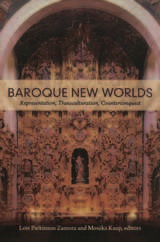 Baroque New Worlds: Representation, Transculturation, Counterconquest
Lois Parkinson Zamora and Monika Kaup, eds.
Duke University Press, 2010 Baroque New Worlds traces the changing nature of Baroque representation in Europe and the Americas across four centuries, from its seventeenth-century origins as a Catholic and monarchical aesthetic and ideology to its contemporary function as a postcolonial ideology aimed at disrupting entrenched power structures and perceptual categories. Baroque forms are exuberant, ample, dynamic, and porous, and in the regions colonized by Catholic Europe, the Baroque was itself eventually colonized. In the New World, its transplants immediately began to reflect the cultural perspectives and iconographies of the indigenous and African artisans who built and decorated Catholic structures, and Europe’s own cultural products were radically altered in turn. Today, under the rubric of the Neobaroque, this transculturated Baroque continues to impel artistic expression in literature, the visual arts, architecture, and popular entertainment worldwide. Since Neobaroque reconstitutions necessarily reference the European Baroque, this volume begins with the reevaluation of the Baroque that evolved in Europe during the late nineteenth century and the early twentieth. Foundational essays by Friedrich Nietzsche, Heinrich Wölfflin, Walter Benjamin, Eugenio d’Ors, René Wellek, and Mario Praz recuperate and redefine the historical Baroque. Their essays lay the groundwork for the revisionist Latin American essays, many of which have not been translated into English until now. Authors including Alejo Carpentier, José Lezama Lima, Severo Sarduy, Édouard Glissant, Haroldo de Campos, and Carlos Fuentes understand the New World Baroque and Neobaroque as decolonizing strategies in Latin America and other postcolonial contexts. This collection moves between art history and literary criticism to provide a rich interdisciplinary discussion of the transcultural forms and functions of the Baroque. Contributors. Dorothy Z. Baker, Walter Benjamin, Christine Buci-Glucksmann, José Pascual Buxó, Leo Cabranes-Grant, Haroldo de Campos, Alejo Carpentier, Irlemar Chiampi, William Childers, Gonzalo Celorio, Eugenio d’Ors, Jorge Ruedas de la Serna, Carlos Fuentes, Édouard Glissant, Roberto González Echevarría, Ángel Guido, Monika Kaup, José Lezama Lima, Friedrich Nietzsche, Mario Praz, Timothy J. Reiss, Alfonso Reyes, Severo Sarduy, Pedro Henríquez Ureña, Maarten van Delden, René Wellek, Christopher Winks, Heinrich Wölfflin, Lois Parkinson Zamora
 The Baroque Night
Spencer Golub
Northwestern University Press, 2018 In The Baroque Night, authorial idiosyncrasy hybridizes the concepts of "baroque" and "noir" across the fields of film, theater, literature, and philosophy, arguing for mental function as form, as an impossible object, a container in which the container itself is the thing contained. The book is an experiment in thinking difference and thinking differently, an ethics of otherness and the abstract. Spencer Golub inverts the unreality of the real and the reality of fiction, exposing the tropes of memory, identity, and authenticity as a scenic route through life that ultimately blocks the view.
The Baroque Night draws upon materials that have not previously been included in studies of either the baroque or film noir, while offering new perspectives on other, more familiar sources. Leibniz's concepts of the monad and compossibility provide organizing thought models, and death, fear, and mental illness cast their anamorphic images across surfaces that are deeper and closer than they at first appear. Key characters and situations in the book derive from the works of Alfred Hitchcock, Henri-Georges Clozot, Jean-Pierre Melville, Oscar Wilde, Georges Perec, Patricia Highsmith, William Shakespeare, Jean Racine, Pierre Corneille, and Arthur Conan Doyle, among many others.
This is virtuality and reality for the phobic, making it a fascinating and viable document of and episteme for the anxious age in which we (always) find ourselves living, though not yet fully alive. This performance of suspect evidence speaks to and in the ways we are organically inauthentic, the cause of our own causality and our own worst eyewitnesses to all that appears and disappears in space and time.
 Baroque Personae
Edited by Rosario Villari
University of Chicago Press, 1995 The Baroque, which stretched from the end of the sixteenth to the second half of the seventeenth century, is one of the most enigmatic eras in history. In this book, thirteen distinguished scholars develop a portrait of institutions, ideologies, intellectual themes, and social structures as they are reflected in Baroque personae, or characteristic social roles.
Studying the statesman, soldier, financier, secretary, rebel, preacher, missionary, nun, witch, scientist, artist, and bourgeois, the essays depart dramatically from traditional accounts of this era. The statesman, for example, is seen here as the exact opposite of a benevolent man working for the common good; and the soldier is depicted as part of an institution that could be savage and destructive but that also, by the end of the Baroque age, helped shape a more rational relationship with the military and civil society.
The contributors are Rosario Villari, Henry Kamen, Geoffrey Parker, Daniel Dessert, Salvatore S. Nigro, Manuel Morán, José Andrés-Gallego, Adriano Prosperi, Mario Rosa, Brian P. Levack, Paolo Rossi, Giovanni Careri, and James S. Amelang.
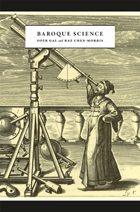 Baroque Science
Ofer Gal and Raz Chen-Morris
University of Chicago Press, 2013 In Baroque Science, Ofer Gal and Raz Chen-Morris present a radically new perspective on the scientific revolution of the seventeenth century. Instead of celebrating the triumph of reason and rationality, they study the paradoxes and anxieties that stemmed from the New Science and the intellectual compromises that shaped it and enabled its spectacular success.
Gal and Chen-Morris show how the protagonists of the new mathematical natural philosophy grasped at the very far and very small by entrusting observation to the mediation of artificial instruments, and how they justified this mediation by naturalizing and denigrating the human senses. They show how the physical-mathematical ordering of heavens and earth demanded obscure and spurious mathematical procedures, replacing the divine harmonies of the late Renaissance with an assemblage of isolated, contingent laws and approximated constants. Finally, they show how the new savants, forced to contend that reason is hopelessly estranged from its surrounding world and that nature is irreducibly complex, turned to the passions to provide an alternative, naturalized foundation for their epistemology and ethics.
Enforcing order in the face of threatening chaos, blurring the boundaries of the natural and the artificial, and mobilizing the passions in the service of objective knowledge, the New Science, Gal and Chen-Morris reveal, is a Baroque phenomenon: deeply entrenched in and crucially formative of the culture of its time.
 The Baroque Technotext: Literature in a Digital Mediascape
Elise Takehana
Intellect Books, 2020 To date, most criticism of print and digital technotexts—literary objects that foreground the role of their media of inscription—has emphasized the avant-garde contexts of a text’s production. The Baroque Technotexts opens new perspectives on this important and innovative literary canon, analyzing the role of baroque and neo-baroque aesthetics in the emergence and possible futures of technotexts. Combining the insights of poststructuralist theory of the baroque, postcolonial theory of the neobaroque, and insightful critique of the prevailing modernist approaches to technotexts, The Baroque Technotexts reframes critical debate of contemporary experiments in literary practice in the late age of print. Analyses of works from authors including Jonathan Safran Foer, Chris Ware, and David Clark are matched with reflections on other media texts—film, visual art, and interface design—that have adopted baroque aesthetic tropes.
The Barrandov Studios: A Central European Hollywood
Bernd Herzogenrath
Amsterdam University Press, 2023 The Barrandov Studios are one of the largest and oldest film studios in Europe. For more than 80 years so far, the studios have been the location of choice for over 2,500 Czech and International films. Barrandov’s founding fathers, the Havel brothers Vàclav and Milo. (the grandfather and uncle of later president Vàclav Havel), built the ‘Hollywood of Eastern Europe’ in the 1930s.
A legendary studio like this – and its story – has so far not been told to an English-speaking readership. This collection aims to correct this, presenting the studio’s rich history, its esteemed directors, and their most important films.
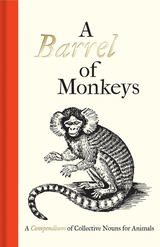 A Barrel of Monkeys: A Compendium of Collective Nouns for Animals
Compiled by Samuel Fanous
Bodleian Library Publishing, 2015 What should we call the wild animals we spot from our windows? A surfeit of skunks? A dray of squirrels? A patient watch of wildlife enthusiasts might even catch sight of a skulk of foxes or a scavenging sloth of bears. The practice of inventing collective nouns for animals is an ancient pastime which derives from medieval hunts, but the list has been augmented in every age—and it remains an entertaining pastime today.
A Barrel of Monkeys brings together more than one hundred collective nouns for animals, from a bloat of hippopotamuses to a caravan of camels, a tower of giraffes, and a leap of leopards. The rivalry between male rhinoceroses becomes especially apt when the rowdy ungulates are characterized as a crash of rhinos. An ambush of tigers is an apt characterization of the skillful hunters that silently stalk their prey. A blend of wordplay, puns, and alliteration, some of the terms collected here are now commonplace, like a pride of lions. Others aren’t heard much these days, but many—like a dazzle of zebras or a prickle of porcupines—richly deserve a comeback.
With charming illustrations by the eighteenth-century artist and naturalist Thomas Bewick, A Barrel of Monkeys is the perfect follow-up to A Conspiracy of Ravens, the Bodleian Library’s book of bird words. Not even a crash of rhinos can stop readers from smiling at this second collection.
Barrelhouse Words: A Blues Dialect Dictionary
Stephen Calt
University of Illinois Press, 2009 This fascinating compendium explains the most unusual, obscure, and curious words and expressions from vintage blues music. Utilizing both documentary evidence and invaluable interviews with a number of now-deceased musicians from the 1920s and '30s, blues scholar Stephen Calt unravels the nuances of more than twelve hundred idioms and proper or place names found on oft-overlooked "race records" recorded between 1923 and 1949. From "aggravatin' papa" to "yas-yas-yas" and everything in between, this truly unique, racy, and compelling resource decodes a neglected speech for general readers and researchers alike, offering invaluable information about black language and American slang.
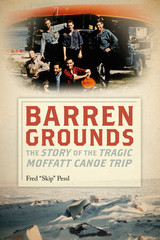 Barren Grounds: The Story of the Tragic Moffatt Canoe Trip
Skip Pessl
Dartmouth College Press, 2014 In 1955 Arthur Moffatt led an expedition consisting of young college students and recent graduates to the Inuit lands of Nunavut, Canada, to follow the path of the 1893 Tyrrell expedition and to film and photograph the group’s progress. The expedition, a 900-mile epic journey across the Barren Lands of Arctic Canada, has stirred controversy and criticism for over fifty years. The trip has been variously described as “the pioneering venture in modern recreational canoe travel” and as “an excellent example of how not to conduct a canoe trip.” Delays took their toll on the adventurers, exhausted by the seemingly endless paddling through unknown rivers and lakes, the trek across the windswept tundra, and torment by voracious insects. Threatened with diminishing food reserves and increasingly harsh weather, the members of the expedition were forced to travel with greater speed and less caution, and ultimately a fatal mistake was made. Two of the canoes capsized, dumping four men into the frigid waters. Moffatt, the leader, died of exposure. It took the survivors ten days of arduous travel with minimum food and equipment to reach the safety of the Hudson’s Bay Company post. Barren Grounds features passages from the journals of two young Moffatt party members and excerpts about the 1893 expedition of Joseph Burr Tyrrell, along with entries from the journal of Art Moffatt himself. Part cautionary tale, part nail-biting adventure, the book will appeal to outdoorsmen and armchair adventurers alike.
Barren in the Promised Land: Childless Americans and the Pursuit of Happiness
Elaine T. May
Harvard University Press Chronicling astonishing shifts in public attitudes toward reproduction, from the association of barrenness with sin in colonial times, to the creation of laws for compulsory sterilization in the early twentieth century, from the baby craze of the 1950s, to the rise in voluntary childlessness in the 1990s, to the increasing reliance on startling reproductive technologies today, Elaine Tyler May reveals the intersection between public life and the most private part of our lives—sexuality, procreation, and family.
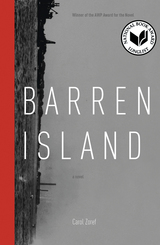 Barren Island
Carol Zoref
New Issues Poetry and Prose, 2017 How does one remember a world that literally no longer exists? How do the moral imperatives to do so correspond to the personal needs that make it possible? Told from the point-of-view of Marta Eisenstein Lane on the occasion of her 80th birthday, Barren Island is the story of a factory island in New York’s Jamaica Bay, where the city’s dead horses and other large animals were rendered into glue and fertilizer from the mid-19th century until the 1930’s. The island itself is as central to the story as the members of the Jewish, Greek, Italian, Irish, and African-American factory families that inhabit it, including those who live their entire lives steeped in the smell of burning animal flesh. The story begins with the arrival of the Eisenstein family, immigrants from Eastern Europe, and explores how the political and social upheavals of the 1930’s affect them and their neighbors in the years between the stock market crash of October 1929 and the start of World War II ten years later. Labor strife, union riots, the New Deal, the World’s Fair, and the struggle to save European Jews from the growing threat of Nazi terror inform this novel as much as the explosion of civil and social liberties between the two World Wars. Barren Island, finally, is a novel in which the existence of God is argued with a God that may no longer exist or, perhaps, never did.
Barren Lives
By Graciliano Ramos
University of Texas Press, 1971 A peasant family, driven by the drought, walks to exhaustion through an arid land. As they shelter at a deserted ranch, the drought is broken and they linger, tending cattle for the absentee ranch owner, until the onset of another drought forces them to move on, homeless wanderers again. Yet, like the desert plants that defeat all rigors of wind and weather, the family maintains its will to survive in the harsh and solitary land. Intimately acquainted with the region of which he writes and keenly appreciative of the character of its inhabitants, into whose minds he has penetrated as few before him, Graciliano Ramos depicts them in a style whose austerity well becomes the spareness of the subject, creating a gallery of figures that rank as classic in contemporary Brazilian literature.
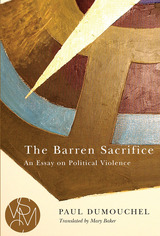 The Barren Sacrifice: An Essay on Political Violence
Paul Dumouchel
Michigan State University Press, 2015 According to political theory, the primary function of the modern state is to protect its citizens—both from each other and from external enemies. Yet it is the states that essentially commit major forms of violence, such as genocides, ethnic cleansings, and large-scale massacres, against their own citizens. In this book Paul Dumouchel argues that this paradoxical reversal of the state’s primary function into violence against its own members is not a mere accident but an ever-present possibility that is inscribed in the structure of the modern state. Modern states need enemies to exist and to persist, not because they are essentially evil but because modern politics constitutes a violent means of protecting us against our own violence. If they cannot—if we cannot—find enemies outside the state, they will find them inside. However, this institution is today coming to an end, not in the sense that states are disappearing, but in the sense that they are increasingly failing to protect us from our own violence. That is why the violent sacrifices that they ask from us, in wars and even in times of peace, have now become barren.
Barren, Wild, and Worthless: Living in the Chihuahuan Desert
Susan J. Tweit
University of Arizona Press, 2003 Appearing barren and most definitely wild, the Chihuahuan Desert of northern Mexico and the southwestern United States may look worthless to some, but for Susan Tweit it is an inspiration. In this collection of seven elegant personal essays, she explores undiscovered facets of this seemingly hostile environment. With eloquence, passion, and insight, she describes and reflects on the relationship between the land, history, and people and makes this underappreciated region less barren for those who would share her journeys.
Barricade
Utpal Dutt
Seagull Books, 2022 A political play staging the Nazi takeover of Germany with an eye on India.
Although Utpal Dutt is acknowledged as a trailblazer of post-Independence Indian theater, English readers have not had access to the range and wealth of his drama. Barricade is a political play that stages the Nazi takeover of Germany in 1933 with an eye on India. Today, the surge to power of far-right parties and fundamentalist fanaticism across the world means that the co-option of democracy and civil society that led to Nazi fascism can happen again—or indeed has already happened—granting Barricade its immediate urgency. Equipped with an introduction analyzing its historical context, this translation of Barricade is also a very rare product in dramatic literature, collating both the printed original as well as a documented performance of the production directed by Dutt.
 Barrier and Bridge: Spanish and Gibraltarian Perspectives on Their Border
Edited by Andrew Canessa
Sussex Academic Press, 2022 As Brexit looms ever closer, one of the many problem raised by the UK's departure from the EU is the British Overseas Territory of Gibraltar, which shares a land border with Spain across which approximately 40% of Gibraltar's labour force cross daily. Real questions are being raised on the future of this border and how it will be managed, but one can only understand its future based on a sound knowledge of its evolution. Barrier and Bridge explores the recent history of the border, drawing on documentary and oral history accounts on both sides. It offers a human, as much as a political history, and argues that whereas at the beginning of the twentieth century there was virtually no border and strong cultural, economic, linguistic, and ethnic ties that straddled it, by the end of the century the border denoted a much more profound sense of difference between the populations.
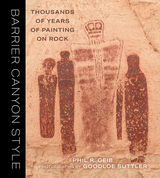 Barrier Canyon Style: Thousands of Years of Painting on Rock
Phil R. Geib and Goodloe Suttler
University of Utah Press, 2024 Barrier Canyon Style (BCS), primarily composed of Indigenous American pictographs that have survived for thousands of years in the canyon country of eastern Utah and far western Colorado, is among the most visually stunning pictograph traditions in the world. This excellent reference, featuring over one hundred photographs, is the first to focus solely on the art and its context.
Barrier Canyon Style begins with a vicarious tour of twenty of the most important BCS sites. High-quality photographs by Goodloe Suttler accompany text by Phil R. Geib, an expert in rock imagery and archaic time-period archaeology. The volume provides explanations of motif classifications and their meanings, as well as details on the chronology of human occupation in the area, the array of techniques used by Native people to leave marks upon rock surfaces, and a consideration of styles and subject matter observable in these artworks.
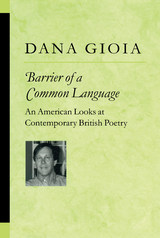 Barrier of a Common Language: An American Looks at Contemporary British Poetry
Dana Gioia
University of Michigan Press, 2003 The latest offering in the Poets on Poetry series from acclaimed poet, critic, and National Endowment for the Arts' chairman Dana Gioia, Barrier of a Common Language collects essays on British poets and poetry spanning the past two decades.
Gioia ignited a national debate on the relevance of poetry in 1991 when he published an essay in the Atlantic titled "Can Poetry Matter?" The essay was expanded into a book of the same name and went on to become one of the best-selling books of contemporary poetry criticism in the 1990s.
In Barrier of a Common Language Gioia addresses the current disconnect between British and American poetry, the result of America's growing postwar self-sufficiency in its intellectual concerns and concomitant patronizing attitude toward Britain. Writes Gioia, "Today . . . most American readers are not only unfamiliar with current British poetry, but modestly proud of the fact. They do not dissemble, but urbanely flourish their ignorance as an indisputable sign of discrimination."
Whether British poetry ever regains the importance in Anglo-American literary traditions it had fifty years ago, Gioia believes, will depend on the quality of service it receives from critics, poets, editors, and anthologists who alone can make it accurately heard and understood.
Poet, critic, and acclaimed author of Can Poetry Matter? Dana Gioia is one of America's leading contemporary men of letters. Winner of the American Book Award, Gioia is internationally recognized for his role in reviving rhyme, meter, and narrative in contemporary poetry.
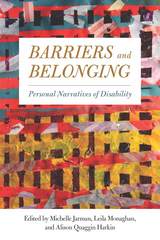 Barriers and Belonging: Personal Narratives of Disability
Michelle Jarman
Temple University Press, 2017 What is the direct impact that disability studies has on the lives of disabled people today? The editors and contributors to this essential anthology, Barriers and Belonging, provide thirty-seven personal narratives thatexplore what it means to be disabled and why the field of disability studies matters. The editors frame the volume by introducing foundational themes of disability studies. They provide a context of how institutions—including the family, schools, government, and disability peer organizations—shape and transform ideas about disability. They explore how disability informs personal identity, interpersonal and community relationships, and political commitments. In addition, there are heartfelt reflections on living with mobility disabilities, blindness, deafness, pain, autism, psychological disabilities, and other issues. Other essays articulate activist and pride orientations toward disability, demonstrating the importance of reframing traditional narratives of sorrow and medicalization. The critical, self-reflective essays in Barriers and Belonging provide unique insights into the range and complexity of disability experience.
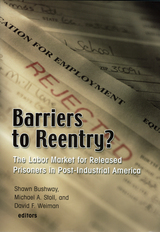 Barriers to Reentry?: The Labor Market for Released Prisoners in Post-Industrial America
Shawn D. Bushway
Russell Sage Foundation, 2007 With the introduction of more aggressive policing, prosecution, and sentencing since the late 1970s, the number of Americans in prison has increased dramatically. While many have credited these "get tough" policies with lowering violent crime rates, we are only just beginning to understand the broader costs of mass incarceration. In Barriers to Reentry? experts on labor markets and the criminal justice system investigate how imprisonment affects ex-offenders' employment prospects, and how the challenge of finding work after prison affects the likelihood that they will break the law again and return to prison. The authors examine the intersection of imprisonment and employment from many vantage points, including employer surveys, interviews with former prisoners, and state data on prison employment programs and post-incarceration employment rates. Ex-prisoners face many obstacles to re-entering the job market—from employers' fears of negligent hiring lawsuits to the lost opportunities for acquiring work experience while incarcerated. In a study of former prisoners, Becky Pettit and Christopher Lyons find that employment among this group was actually higher immediately after their release than before they were incarcerated, but that over time their employment rate dropped to their pre-imprisonment levels. Exploring the demand side of the equation, Harry Holzer, Steven Raphael, and Michael Stoll report on their survey of employers in Los Angeles about the hiring of former criminals, in which they find strong evidence of pervasive hiring discrimination against ex-prisoners. Devah Pager finds similar evidence of employer discrimination in an experiment in which Milwaukee employers were presented with applications for otherwise comparable jobseekers, some of whom had criminal records and some of whom did not. Such findings are particularly troubling in light of research by Steven Raphael and David Weiman which shows that ex-criminals are more likely to violate parole if they are unemployed. In a concluding chapter, Bruce Western warns that prison is becoming the norm for too many inner-city minority males; by preventing access to the labor market, mass incarceration is exacerbating inequality. Western argues that, ultimately, the most successful policies are those that keep young men out of prison in the first place. Promoting social justice and reducing recidivism both demand greater efforts to reintegrate former prisoners into the workforce. Barriers to Reentry? cogently underscores one of the major social costs of incarceration, and builds a compelling case for rethinking the way our country rehabilitates criminals.
|
|
